
Tripping on Utopia: Margaret Mead, the Cold War, and the Troubled Birth of Psychedelic Science
by
Benjamin Breen
Published 16 Jan 2024
I am profoundly thankful to all the historians and authors who have written them. Margaret Mead’s most comprehensive biography remains Jane Howard’s Margaret Mead: A Life (New York: Simon & Schuster, 1984). Excellent studies that have appeared more recently include Maureen A. Molloy, On Creating a Usable Culture: Margaret Mead and the Emergence of American Cosmopolitanism (Manoa: University of Hawaii Press, 2008); Nancy C. Lutkehaus, Margaret Mead: The Making of an American Icon (Princeton, NJ: Princeton University Press, 2008); Lois W. Banner, Intertwined Lives: Margaret Mead, Ruth Benedict, and Their Circle (New York: Vintage, 2010); Peter Mandler, Return from the Natives: How Margaret Mead Won the Second World War and Lost the Cold War (New Haven, CT: Yale University Press, 2013); and Elesha J.
…
Lilly Papers, Stanford University Special Collections, Stanford, CA Kees diary Unpublished diaries of Weldon Kees (1950–54), collection of James Reidel LOC Library of Congress, Washington, DC MM Margaret Mead MM papers Margaret Mead papers, Library of Congress, Washington, DC MM FBI file Margaret Mead FBI file, File #121-14450, accessible at https://archive.org/details/MargaretMead/mode/2up NARA National Archives and Records Administration, College Park, MD NYPL New York Public Library NYT New York Times RB Ruth Benedict TCLW Margaret Mead, To Cherish the Life of the World: Selected Letters of Margaret Mead, ed. Margaret M. Caffrey and Patricia A. Francis (New York: Basic Books, 2006) WDE Mary Catherine Bateson, With a Daughter’s Eye: A Memoir of Margaret Mead and Gregory Bateson (New York: William Morrow, 1984) WP Washington Post White diary Appointment books of George Hunter White, Stanford University Special Collections and University Archives, Stanford, CA PROLOGUE “Our Father, We thank Thee”: prayer offered by the Reverend Wilbur A.
…
Part I THE PATTERN (1923–49) Let the taro turn the mouth towards it, Towards plentifulness, Towards greatness… Let him eat my taro. He must do no evil. —magical incantation recorded by Margaret Mead in the village of Pere, island of Manus, Admiralty Islands, 1929 Margaret Mead at the American Museum of Natural History, 1930. Courtesy New York Historical Society/Getty Images. Photographer: Irving Browning. CHAPTER 1 Prophet of the Long Future (1923–30) It is not frustrated sex, it is frustrated gentleness that is so hard to bear when one is working for long months alone in the field. —Gregory Bateson, circa 1933, as quoted by Margaret Mead MARCH 14, 1933, FOUND Diego Rivera sketching out the earliest designs for Man at the Crossroads.
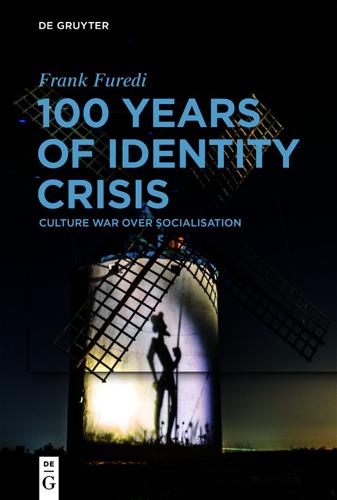
100 Years of Identity Crisis: Culture War Over Socialisation
by
Frank Furedi
Published 6 Sep 2021
In contrast, scepticisms directed towards adulthood – particularly the role of parents − dominated the thinking of cultural influencers, educators and psychologists throughout much of the 20th century. Educationalists and psychologists often perceived adults as out of touch and diagnosed adulthood as a rigid and backward-oriented condition. The cultural anthropologist Margaret Mead, who played a central role in promoting the idealisation of adolescence, communicated a distinctly downbeat account of adulthood. ‘All adults are to some extent out of touch with the newest patterns of behavior as they most particularly affect the behavior of adolescents’, she wrote in 1940.40 Other experts were far less charitable and acted as if it were their job to insulate young people from the toxic influence of adults.
…
Formally, the authority of adulthood still enjoyed significant cultural and institutional validation and youth culture tended to be dismissed as a phase rather than a desirable end point in life. But even at this point in time, the common-sense view of adulthood was questioned by the emerging professional discourse on the subject. Margaret Mead highlighted the fragility of the authority of adulthood. Like Fromm, she too believed that the young were the ‘smarter’ generation: By and large, the American father has an attitude towards his children which may be loosely classified as autumnal. They are his for a brief and passing season, and in a very short time they will be operating gadgets which he does not understand and jokingly talking a language to which he has no clue.74 There is an unmistakable tone of derision in her description of the rejection of adults by the young.
…
As one study of this form of pedagogy explained; ‘Some adherents of the child-centred tradition believe that, in the interests of creativity and our needs for innovation in a rapidly changing world, the values of adults should not be imposed upon a child’.67 Writing in 1943 during the Second World War, Margaret Mead highlighted the reluctance of the interwar generation of parents to give clear moral guidance to their children. She noted that ‘millions of young Americans were the first generation to be reared by parents who did not present themselves as moral role models’.68 She added: [I]t is sufficient to point out that men who are twenty in 1942 were reared by members of a generation which betrayed a Cause which they had believed to be worth fighting for, a generation which spent twenty years heaping obloquy on those who had been fools enough to believe in it – especially on themselves.

War Without Mercy: PACIFIC WAR
by
John Dower
Published 11 Apr 1986
The Hoover Institution has an excellent selection of these leaflets in both the Bonner Frank Fellers Collection (Boxes 4 and 13) and “U.S. Army Forces in the Pacific, Psychological Warfare Branch” (1 box plus scrapbook). 2. The theories and premises underlying national-character studies were explained by Margaret Mead in a number of postwar essays: “The Study of National Character,” in Daniel Lerner and Harold D. Lasswell, eds., The Policy Sciences: Recent Developments in Scope and Method (1951: Stanford University Press), 70–85; Margaret Mead and Rhoda Metraux, eds., The Study of Culture at a Distance (1953: University of Chicago Press), esp 3–53, 397–400; “National Character,” in A. L. Kroeber, ed., Anthropology Today: An Encyclopedic Inventory (1953: University of Chicago Press), 642–67; “Anthropological Contributions to National Policies During and Immediately After World War II,” in Walter Goldschmidt, ed., The Uses of Anthropology (1979: American Anthropological Association), 147–57.
…
American Anthropologist 47.4 (October-December 1945): 635–37; also Embree in ibid., 52.3 (July-September 1950): 430–32. 15. Gregory Bateson and Margaret Mead, Balinese Character: A Photographic Analysis (1942: Special Publications of the New York Academy of Sciences, vol. 11), 263. 16. Edgar Snow, The Battle for Asia (1942: World Publishing Co.), 65–70; Helen Mears, New Republic, March 29, 1943, in a review of Otto Tolischus’ Tokyo Record. 17. Royal Institute of International Affairs, Japan in Defeat: A Report by a Chatham House Study Group (1945: Oxford University Press), xii, 129; Benedict, The Chrysanthemum and the Sword, 108; cf. 165. 18. Margaret Mead, Ruth Benedict (1974: Columbia University Press), 57–59 Haring was also a prolific writer on Japan during the war, producing among other contributions a book entitled Blood on the Rising Sun (1943: Macrae Smith Co.); see the selections on Japanese national character in his Personal Character and Cultural Milieu: A Collection of Readings, 3rd rev. ed. (1956: Syracuse University Press). 19.
…
Hopes were voiced for the creation of a truly “scientific humanism” or a “humanistic science,” and some of the best-known English and American anthropologists, along with their peers in sister disciplines, contributed energetically to this cause as theorists and proselytizers. Notable among them were Margaret Mead, Gregory Bateson, Ruth Benedict, Clyde Kluckhohn, Alexander Leighton, and Geoffrey Gorer. Mead once suggested that country-oriented studies could be most accurately described as focusing on “cultural character structures.” Gorer would have preferred the phrase “social character” if that had not already acquired other technical connotations.
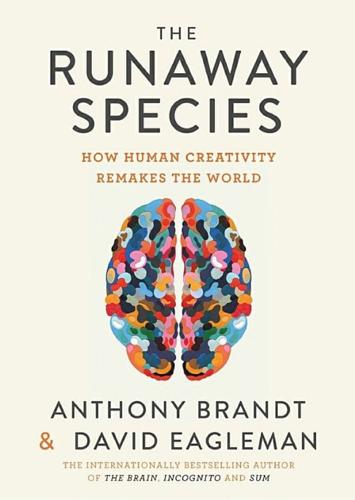
The Runaway Species: How Human Creativity Remakes the World
by
David Eagleman
and
Anthony Brandt
Published 30 Sep 2017
Journal of Experimental Psychology: Human Perception and Performance 40, no. 1 (2014): 40–49. doi:10.1037/a0033471. https://www.ncbi.nlm.nih.gov/pubmed/23815480 Podolny, Shelley. “If an Algorithm Wrote This, How Would You Even Know?” New York Times. March 7, 2015. Popova, Maria. “Margaret Mead on Female vs. Male Creativity, the ‘Bossy’ Problem, Equality in Parenting, and Why Women Make Better Scientists.” Brain Pickings. Accessed May 11, 2016. <http://www.brainpickings.org/2014/08-06/margaret-mead-female-male/> Prager, Phillip. “Making Sense of the Modernist Muse: Creative Cognition and Play at the Bauhaus.” American Journal of Play 7, no. 1 (2014): 27–49. Protter, Eric, ed. Painters on Painting.
…
Sosniak, Developing Talent in Young People (New York: Ballantine Books, 1985). 11 Mikael Carlssohn, “Women in Film Music, or How Hollywood Learned to Hire Female Composers for (at Least) Some of Their Movies,” IAWM Journal 11, no. 2 (2005): pp. 16–19; Ricky O’Bannon, “By the Numbers: Female Composers,” Baltimore Symphony Orchestra, accessed May 11, 2016, <https://www.bsomusic.org/stories/by-the-numbers-female-composers.aspx> 12 Maria Popova, “Margaret Mead on Female vs. Male Creativity, the ‘Bossy’ Problem, Equality in Parenting, and Why Women Make Better Scientists,” Brain Pickings, n.d., accessed May 11, 2016, <http://www.brainpickings.org/2014/08/06/margaret-mead-female-male/> 13 James S. Catterall, Susan A. Dumais, and Gillian Harden-Thompson, The Arts and Achievement in At-Risk Youth: Findings from Four Longitudinal Studies (Washington: National Endowment for the Arts, 2012). 14 John Maeda, “STEM + Art = STEAM,” e STEAM Journal: Vol. 1: Iss. 1, Article 34.
…
Sosniak, Developing Talent in Young People (New York: Ballantine Books, 1985). 11 Mikael Carlssohn, “Women in Film Music, or How Hollywood Learned to Hire Female Composers for (at Least) Some of Their Movies,” IAWM Journal 11, no. 2 (2005): pp. 16–19; Ricky O’Bannon, “By the Numbers: Female Composers,” Baltimore Symphony Orchestra, accessed May 11, 2016, <https://www.bsomusic.org/stories/by-the-numbers-female-composers.aspx> 12 Maria Popova, “Margaret Mead on Female vs. Male Creativity, the ‘Bossy’ Problem, Equality in Parenting, and Why Women Make Better Scientists,” Brain Pickings, n.d., accessed May 11, 2016, <http://www.brainpickings.org/2014/08/06/margaret-mead-female-male/> 13 James S. Catterall, Susan A. Dumais, and Gillian Harden-Thompson, The Arts and Achievement in At-Risk Youth: Findings from Four Longitudinal Studies (Washington: National Endowment for the Arts, 2012). 14 John Maeda, “STEM + Art = STEAM,” e STEAM Journal: Vol. 1: Iss. 1, Article 34.

Daily Rituals: How Artists Work
by
Mason Currey
Published 22 Apr 2013
Nicholson Baker: Interview with author, August 6, 2010. 171. B. F. Skinner: B. F. Skinner, “My Day,” August 9, 1963, B. F. Skinner Basement Archives; Daniel W. Bjork, B. F. Skinner: A Life (New York: Basic Books, 1993). 172. “I rise sometime”: Skinner, “My Day.” 173. By the time: Bjork, 217. 174. Margaret Mead: Jane Howard, Margaret Mead: A Life (New York: Simon and Schuster, 1984). 175. “How dare they?”: Quoted ibid., 287. 176. “Empty time stretches”: Quoted ibid., 393. 177. Jonathan Edwards: George M. Marsden, Jonathan Edwards: A Life (New Haven: Yale University Press, 2003). 178. “I think Christ”: Quoted ibid., 133. 179.
…
Auden Francis Bacon Simone de Beauvoir Thomas Wolfe Patricia Highsmith Federico Fellini Ingmar Bergman Morton Feldman Wolfgang Amadeus Mozart Ludwig van Beethoven Søren Kierkegaard Voltaire Benjamin Franklin Anthony Trollope Jane Austen Frédéric Chopin Gustave Flaubert Henri de Toulouse-Lautrec Thomas Mann Karl Marx Sigmund Freud Carl Jung Gustav Mahler Richard Strauss Henri Matisse Joan Miró Gertrude Stein Ernest Hemingway Henry Miller F. Scott Fitzgerald William Faulkner Arthur Miller Benjamin Britten Ann Beattie Günter Grass Tom Stoppard Haruki Murakami Toni Morrison Joyce Carol Oates Chuck Close Francine Prose John Adams Steve Reich Nicholson Baker B. F. Skinner Margaret Mead Jonathan Edwards Samuel Johnson James Boswell Immanuel Kant William James Henry James Franz Kafka James Joyce Marcel Proust Samuel Beckett Igor Stravinsky Erik Satie Pablo Picasso Jean-Paul Sartre T. S. Eliot Dmitry Shostakovich Henry Green Agatha Christie Somerset Maugham Graham Greene Joseph Cornell Sylvia Plath John Cheever Louis Armstrong W.
…
By the time Skinner retired from his Harvard teaching post in 1974, that nightly hour of sleeplessness had become an integral part of his routine. His timer now rang four times a day: at midnight, 1:00 A.M., 5:00 A.M., and 7:00 A.M., for one hour of nocturnal composition in addition to his usual two hours at dawn. He followed this routine seven days a week, holidays included, until only a few days before his death in 1990. Margaret Mead (1901–1978) The renowned cultural anthropologist was always working; indeed, not working seemed to agitate and unsettle her. Once, during a two-week symposium, Mead learned that a certain morning session had been postponed. She was furious. “How dare they?” she asked. “Do they realize what use I could have made of this time?

Superbloom: How Technologies of Connection Tear Us Apart
by
Nicholas Carr
Published 28 Jan 2025
As the country prepared to enter the conflict, Turner reports, policy makers grappled with two questions: “First, how could they convince democratic Americans to go to war without turning them into the sort of unthinking authoritarians they would be trying to defeat? And second, what kinds of media could they use to do it?” The questions inspired a few dozen prominent intellectuals, including anthropologist Margaret Mead, psychologists Gordon Allport and Erich Fromm, pollster George Gallup, and art historian Arthur Upham Pope, to form, with the Roosevelt administration’s backing, the Committee for National Morale. The goal was to examine the connections between communication, individual personality, and national character, with a view to undertaking a radical restructuring of media to make it less likely to serve as an arm of tyranny.
…
His theory was now famous among the mathematicians and information scientists in attendance, luminaries like John von Neumann, Norbert Wiener, and J. C. R. Licklider. In discussing his ideas, Shannon again emphasized the separation of the meaning of a message from the mechanism of its communication. Also at the conference was Margaret Mead. As the discussions continued, she began to grow uneasy with what she was hearing. Having spent years studying how groups of people make meaning through shared rituals and beliefs, through language and gesture, she wasn’t quite so sure that the division between mechanism and meaning was as clean as it was being made out to be.
…
Even if semantic considerations are irrelevant to their calculations, the algorithms used to sort and channel information regulate what content is transmitted, the form it takes, and how it’s interpreted. They influence meaning both directly (by selecting the information people see) and indirectly (by promoting certain forms of expression and discouraging others). Margaret Mead was right. The manipulation of information is always also the manipulation of meaning. “People are not in general influenced by long books or discourses,” the American poet John Jay Chapman wrote in an 1897 essay on Ralph Waldo Emerson, “but by odd fragments of observation which they overhear, sentences or head-lines which they read while turning over a book at random or while waiting for dinner to be announced.
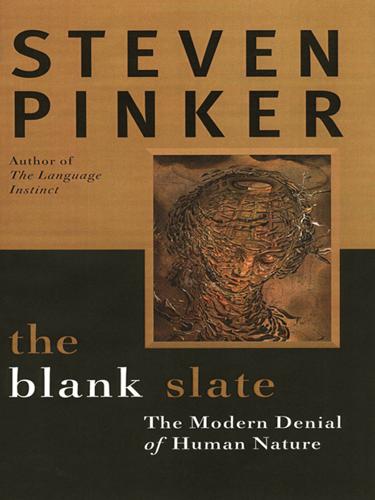
The Blank Slate: The Modern Denial of Human Nature
by
Steven Pinker
Published 1 Jan 2002
—Ruth Benedict (1934)36 We are forced to conclude that human nature is almost unbelievably malleable, responding accurately and contrastingly to contrasting cultural conditions. —Margaret Mead (1935)37 Others likened the mind to some kind of sieve: Much of what is commonly called “human nature” is merely culture thrown against a screen of nerves, glands, sense organs, muscles, etc. —Leslie White (1949)38 Or to the raw materials for a factory: Human nature is the rawest, most undifferentiated of raw material. —Margaret Mead (1928)39 Our ideas, our values, our acts, even our emotions, are, like our nervous system itself, cultural products—products manufactured, indeed, out of tendencies, capacities, and dispositions with which we were born, but manufactured nonetheless.
…
Violence in the mass media and violence in society: The link is unproven. Harvard Mental Health Letter, 12, 4–6. Freedman, J. L. 2002. Media violence and aggression: No evidence for a connection. Toronto: University of Toronto Press. Freeman, D. 1983. Margaret Mead and Samoa: The making and unmaking of an anthropological myth. Cambridge, Mass.: Harvard University Press. Freeman, D. 1999. The fateful hoaxing of Margaret Mead: A historical analysis of her Samoan research. Boulder, Colo.: Westview Press. Frith, C. 1992. The cognitive neuropsychology of schizophrenia. New York: Psychology Press. Fry, D. 2000. Conflict management in cross-cultural perspective.
…
But in the past two decades anthropologists have gathered data on life and death in pre-state societies rather than accepting the warm and fuzzy stereotypes. What did they find? In a nutshell: Hobbes was right, Rousseau was wrong. To begin with, the stories of tribes out there somewhere who have never heard of violence turn out to be urban legends. Margaret Mead’s descriptions of peace-loving New Guineans and sexually nonchalant Samoans were based on perfunctory research and turned out to be almost perversely wrong. As the anthropologist Derek Freeman later documented, Samoans may beat or kill their daughters if they are not virgins on their wedding night, a young man who cannot woo a virgin may rape one to extort her into eloping, and the family of a cuckolded husband may attack and kill the adulterer.68 The!
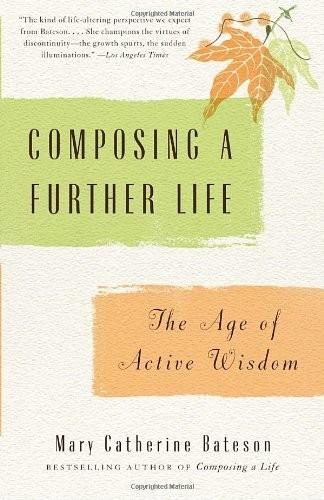
Composing a Further Life: The Age of Active Wisdom
by
Mary Catherine Bateson
Published 13 Sep 2010
ALSO BY MARY CATHERINE BATESON Willing to Learn: Passages of Personal Discovery Full Circles, Overlapping Lives: Culture and Generation in Transition Peripheral Visions: Learning Along the Way Composing a Life With a Daughter’s Eye: A Memoir of Margaret Mead and Gregory Bateson Our Own Metaphor: A Personal Account of a Conference on the Effects of Conscious Purpose on Human Adaptation Arabic Language Handbook With Gregory Bateson Angels Fear: Towards an Epistemology of the Sacred With Richard Goldsby Thinking AIDS: The Social Response to the Biological Threat THIS IS A BORZOI BOOK PUBLISHED BY ALFRED A.
…
Physiological changes are accompanied by social changes as one suddenly encounters a new set of attitudes and expectations and must grow into new roles. There was a time when our parents said to us, “Act your age.” Now, shockingly, our children may begin to say it. There was a time when I found it uncomfortable to be endlessly described as “the daughter of Margaret Mead,” but now, with a daughter who is an actor and has adopted a stage name, I enjoy being “the mother of Sevanne Martin.” In Adulthood II, the new crisis of identity may be simultaneous with a new crisis of intimacy, as adult children move away and couples who have spent a long period as parents find themselves alone together and must adjust to each other’s changes and changing roles.
…
Jim was already running into some opposition at his “big place.” “There were mutterings,” he said, “ ‘This is pagan, this is terrible.’ ” Then came the celebration of the thirtieth anniversary of the United Nations. I was living in Iran at that time, but I had heard about the event because my mother, Margaret Mead, preached on the opening night. “Oomoto was invited to come back for that,” Jim continued. “So they do a thing, and we had Pir Vilayat Khan, the Sufi Muslim leader and musician who died in 2004, a very wonderful spiritual guy, doing his Cosmic Mass, which takes off from Père Teilhard de Chardin’s notion.
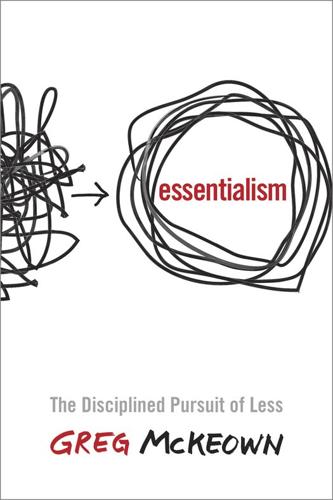
Essentialism: The Disciplined Pursuit of Less
by
Greg McKeown
Published 14 Apr 2014
Peters, the principal of Beverly Hills High School, announced today that the entire high school faculty will travel to Sacramento next Thursday for a colloquium in new teaching methods. Among the speakers will be anthropologist Margaret Mead, college president Dr. Robert Maynard Hutchins, and California governor Edmund ‘Pat’ Brown.” The students hammered away on their manual typewriters trying to keep up with the teacher’s pace. Then they handed in their rapidly written leads. Each attempted to summarize the who, what, where, and why as succinctly as possible: “Margaret Mead, Maynard Hutchins, and Governor Brown will address the faculty on …”; “Next Thursday, the high school faculty will …” Simms reviewed the students’ leads and put them aside.
…
If you are ready to look inside yourself for the answer to this question, then you are ready to commit to the way of the Essentialist. APPENDIX Leadership Essentials NEVER DOUBT THAT A SMALL GROUP OF THOUGHTFUL, COMMITTED CITIZENS CAN CHANGE THE WORLD; INDEED, IT’S THE ONLY THING THAT EVER HAS. —Margaret Mead LinkedIn CEO Jeff Weiner sees “fewer things done better” as the most powerful mechanism for leadership. When he took the reins of the company he could easily have adopted the standard operating procedure of most Silicon Valley start-ups and tried to pursue everything. Instead, he said no to really good opportunities in order to pursue only the very best ones.
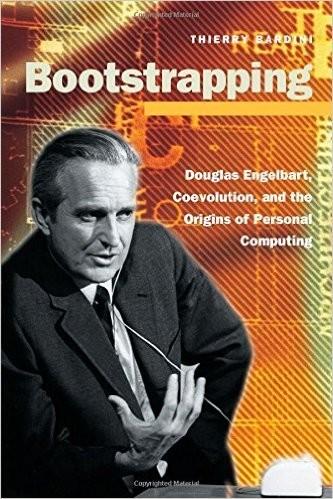
Bootstrapping: Douglas Engelbart, Coevolution, and the Origins of Personal Computing (Writing Science)
by
Thierry Bardini
Published 1 Dec 2000
The "scouting" metaphor also locates those who feel themselves to be outsiders at a privileged place, the frontier, where distance from the norms of what currently is taken for granted becomes a mark of distinction, making the outsider into a pathfinder for those who meekly must follow later, a "roughly clad eccentric who leaves the safety of the settlement and reappears unpredictably, bringing a mixture of firsthand reports, rumors, and warnings about the wilderness ahead" (Toulmin 1980, 38).13 And the description of the various disciplines of academic expertise as "tribes" reappropriates their knowledge from the inside to the outside, from the organized metropolis to the wild frontier, while at the same time employ- ing the cybernetic vocabulary of "differentiation in the style and function" (Heims I 99 I, 53) discovered in human groups by Margaret Mead and Gregory Bateson, the leading social scientists of the cybernetics circle. Scouting the fron- tier to try to find out "what computer technology is going to do to our social structure" would give those who were developing that technology a progres- sive social role: I think that part of our adaptatIon will have to be in the form of giving more definIte attention to the path ahead.
…
With the exception of the first meeting, explicit philosophical discussion was muted. The ideal of purely SCI- entific discourse dominated all the meetings after the first. Indeed these social scientists were mostly psychologists, with the notable ex- ception of the anthropologists Gregory Bateson and Margaret Mead and the sociologist Paul Lazarsfeld. Norbert Wiener, of course, as we have seen al- ready, was well aware of the political and ethical dimensions of cybernetics as a new science that "embraces technical developments with great possibilities for good and for evil." Even if he felt at the time that he and his colleagues "stand in a moral position which is, to say the least, not very comfortable," he was nevertheless not very troubled by the lack of presence of such "controver- sial social science" (Wiener 1961, 28).
…
As in the shifting worldview in physics, the extension of the Aristotelian logic and its application to language in the General Semantics program relied heavily on a quasi-statistical approach, or more accurately, on a theory of classes, since words were not considered any more as "identical" with what they represented, but rather as a class of things that they could represent. 15 In other words, Korzybski sought a general reformulation of the basic epis- temological foundations of scientific thought in mathematics (from Euclidean to non-Euclidean), physics (from Newtonian to non-Newtonian), and most crucially, in logic (from Aristotelian to non-Aristotelian), a reformulation that brought all these and more under the rubric of a "human science" that would include philosophy, linguistics, and psychology, a science that he dubbed "hu- man engineering." The social scientists of the cybernetics group were of course aware of this line of thought. As Margaret Mead wrote in 1928, "it is unthinkable that a final recognition of the great numbers of ways in which man, during the course of history and at the present time, is solving problems of life, should not bring 52 Language and the Body with it in turn the downfall of our belief in a single standard." 16 But by the early 1940'S, "relativity had become a popular catch-word implying a con- fluence of Einstein's physics and social anthropology and resting on a mis- understanding of both" (Heims 1991, 269).

I Feel Bad About My Neck
by
Nora Ephron
Published 31 Jul 2006
Peters, the principal of Beverly Hills High School, announced today that the faculty of the high school will travel to Sacramento on Thursday for a colloquium in new teaching methods. Speaking there will be anthropologist Margaret Mead and Robert Maynard Hutchins, the president of the University of Chicago.” We all sit at our typewriters and write a lead, most of us inverting the set of facts so that they read something like this, “Anthropologist Margaret Mead and University of Chicago President Robert Maynard Hutchins will address the faculty Thursday in Sacramento at a colloquium on new teaching methods, the principal of the high school Kenneth L.
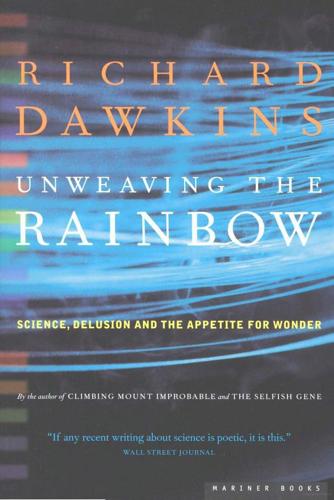
Unweaving the Rainbow
by
Richard Dawkins
Published 7 Aug 2011
Huxley and all those, such as the distinguished American evolutionist George C. Williams and today's advocates of 'the selfish gene', who emphasize that nature really is red in tooth and claw. At the other end of the continuum are Prince Peter Kropotkin the Russian anarchist and author of Mutual Aid (1902), the gullible but immensely influential American anthropologist Margaret Mead,* and today a spate of authors reacting indignantly to the idea that nature is genetically selfish, of whom Frans de Waal, author of Good Natured (1996), is representative. De Waal, a chimpanzee expert who understandably loves his animals, is distressed at what he mistakenly sees as a neo-Darwinian tendency to emphasize the 'nastiness of our apish past'.
…
Some of those who share his romantic fancy have recently become fond of the pygmy chimpanzee or bonobo as a yet more benign role model. Where common chimpanzees often resort to violence, and even cannibalism, bonobos say it with sex. They seem to copulate in all possible combinations at every conceivable opportunity. Where we might shake hands, they copulate. Make love not war is their watchword. Margaret Mead would have warmed to them. But the very idea of taking animals to be role models, as in the bestiaries, is a piece of bad poetic science. Animals are not there to be role models, they are there to survive and reproduce. Moralistic devotees of the bonobo are apt to compound this error with an outright evolutionary falsehood.
…
London: Penguin Books. 52. Fisher, J., & Hinde, R. A. (1949) The opening of milk bottles by birds. British Birds, 42, 347–57. 53. Ford, E. B. (1975) Ecological Genetics. London: Chapman & Hall. 54. Frazer, J. G. (1922) The Golden Bough. London: Macmillan. 55. Freeman, D. (1998) The Fateful Hoaxing of Margaret Mead: An Historical Analysis of Her Samoan Researches. Boulder, Colo.: Westview Press. 56. Fruman, N. (1971) Coleridge, the Damaged Archangel. London: Allen & Unwin. 57. Good, I. J. (1995) When batterer turns murderer. Nature, 575, 58. Gould, S. J. (1977) Eternal metaphors of paleontology. In A.
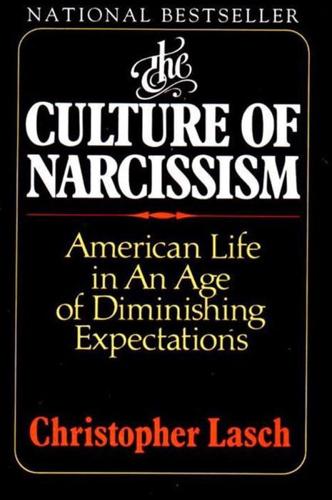
The Culture of Narcissism: American Life in an Age of Diminishing Expectations
by
Christopher Lasch
Published 1 Jan 1978
stronger than it is now proposed similar descriptions of the , changing character structure of advanced capitalist society . Wil- liam H. Whyte's "organization man Erich Fromm's "marketoriented personality Karen Horney's "neurotic personality of " , " , our time " and the studies of American national character by Margaret Mead and Geoffrey Gorer all captured essential aspects , of the new man: his eagerness to get along well with others; his need to organize even his private life in accordance with the requirements of large organizations; his attempt to sell himself as if his own personality were a commodity with an assignable market 64 : The Culture of Narcissism Changing Modes ofMaking It value; his neurotic need for affection, reassurance, and oral grati- She remains a loner, dependent on others only as a hawk depends ort chickens.
…
Napoleon Hill quoted in ibid., p. 211. Keep Your Powder Dry (New York: Morrow 1943); Geoffrey Gorer, The American People: A Study in National Character (New York: Norton 1948); , , 64 Fromtn, Escapefrom Freedom pp. 242-43. fun morality Martha Wolfenstein "Fun Morality (1951), reprinted in Margaret Mead , "relevant audiences"; "our reputation as a guarantor"; "our allies . . . ' ' under- 65 " , " and Martha Wolfenstein , John McNaughton, quoted in Neil Sheehan et al.. The Pentagon Papers {Nev. 61 York: New York Times-Quadrangle, 1971), pp. 366, 442. "talk constantly ... of their images."
…
"Although I'm not being original . . . portray to others." writers ) Allen Wheelis, The Quest for Identity (New York: Norton 1958). "essential aims . . . commercialized friendliness"; "If you do not smile , Robert L. Shook, Winning Images (New York: Macmillan, 1977), p. 22. 60 The Neu- , rotic Personality of Our Time (New York: Norton 1937); Margaret Mead, And " salesmanship and boosterism ) "the olcTadage . . . our desires.' 59 , (New York: Holt, Rinehart, and Winston, 1947); Karen Horney the Sdf-Made Man, pp. 171; 176-77; 182-83 ("will- 58 , , Cawelti, Apostles cf the Self-Made Man, ch. 3. Cawelti, A/wrt/o changing American character see David Riesman, The Lonely Crotod: A Study cfthe Changing American Char James Freeman Clarke, Self-Culture: Physical, Intellectual, Moral and Spiritual (Boston: Osgood, 1880), p. 266; "discipline of daily life": unidentified industrialist quoted in Wyllie, Sdf-Made Man, p. 96.
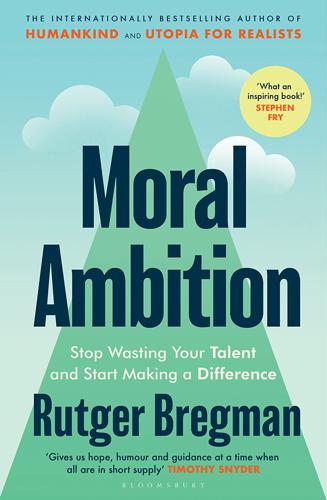
Moral Ambition: Stop Wasting Your Talent and Start Making a Difference
by
Bregman, Rutger
Published 9 Mar 2025
The longing to belong is like a magnet, interfering with our inner compass. If we focus only on our own lives, it’s easy to confuse freedom with being free to do as you please. But doing what you feel like often means little more than going with the flow. There’s a quote from the anthropologist Margaret Mead that I think of often. ‘Never doubt that a small group of thoughtful, committed citizens can change the world. Indeed, it’s the only thing that ever has.’ That may sound like a happy little motto for idealistic do-gooders, but it’s really a cold hard observation. What Mead is saying is that most people stand on the sidelines.
…
For those of us who grew up in a democracy, where ‘the people’ are said to rule, the news that most citizens stand on the sidelines can come as a shock. Imagine you lined up all the people in the world in order of influence. Then you might picture a graph with a gently rolling curve: But according to Margaret Mead, the reality is neither gentle nor rolling. The reality is extreme. The most influential individuals aren’t two or five or ten times as influential, but a hundred, a thousand, or a million times. In statistics, that kind of phenomenon is said to follow a power law, and the associated graph doesn’t look like a hill at all – more like a plateau with one towering peak.
…
In 2015, a couple of traffic experts calculated that these two federal laws had saved more than 3.5 million lives.8 But the young lawyer, at age thirty-two, was just getting started. Nader didn’t want to be a lone David, slaying one Goliath a year; he wanted to train a whole team of Davids. 3 How do you build an elite corps of driven idealists? Think back for a moment to Margaret Mead’s words. ‘Never doubt,’ she said, ‘that a small group of thoughtful, committed citizens can change the world. Indeed, it’s the only thing that ever has.’ History is full of small action groups with enormous impact. Not only rebels who take to the streets, but entrepreneurs and engineers, scholars and public servants, lawyers and – you name it.
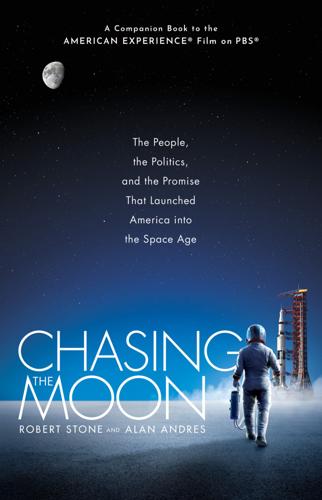
Chasing the Moon: The People, the Politics, and the Promise That Launched America Into the Space Age
by
Robert Stone
and
Alan Andres
Published 3 Jun 2019
Frances “Poppy” Northcutt Poppy Northcutt, interview with the authors (June 10, 2015). The Moon’s landscape monotonous Anders, interview with the authors. It had never been discussed Anders, interview with the authors; Apollo 8 Onboard Voice Transcription (Houston: Manned Spacecraft Center, 1969). Margaret Mead declared Margaret Mead, interview with Wilton S. Dillon (September 13, 1974), Smithsonian Institution, Washington, DC; Mead made a similar statement in the film Our Open-Ended Future (Moffett Field, CA: NASA Ames Research Center, 1973) as part of a NASA lecture series “The Next Billion Years: Our Future in Cosmic Perspective.”
…
Once the color magazine was attached to the Hasselblad, Anders had time to shoot only two images. By this point, Borman was also looking out the window. “Take several of them,” he urged. The unplanned photograph became known as “Earthrise,” one of the most influential and iconic images of the twentieth century. Anthropologist Margaret Mead declared that the entire expense of the Apollo program was justified by the creation of that single picture. Visually, it captured the isolated fragility of the jewel-like Earth set against the barren and monochrome lunar surface. Its widespread reproduction would occur as environmental consciousness and the philosophical concept of “spaceship Earth”—the realization that our planet was a contained, fragile, and finite system—were gaining currency in the larger culture.
…
Her faith in the space program shaken after the Apollo 1 fire, she believed it unlikely her husband would return from the first trip to the Moon. “Hey, don’t take that [photograph]. It’s not scheduled.” One of the most famous images of the twentieth century was the result of a lucky accident. Known as “Earthrise,” this single photograph was worth the cost of the entire Apollo program, said anthropologist Margaret Mead. Neil Armstrong waves to the press as he leads the crew of Apollo 11 to the van that will transport them on the ten-mile journey to Pad 39A. It was 6:27 on the morning of July 16, 1969. An observer standing a few feet away likened it to “seeing Columbus sail out of port.” From the press site located three miles from Pad 39, ABC News science editor Jules Bergman reports during the live television broadcast of the launch of Apollo 11.
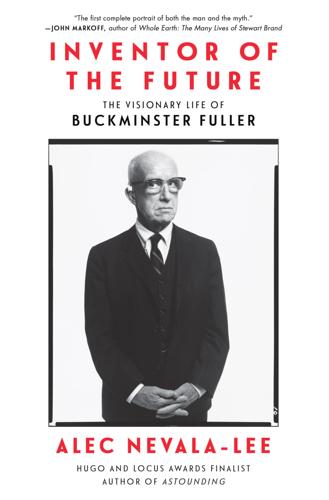
Inventor of the Future: The Visionary Life of Buckminster Fuller
by
Alec Nevala-Lee
Published 1 Aug 2022
Sklar to RBF, November 8, 1978, B380-F8. Margaret Mead: In an undated letter from 1971, Mead questioned one of RBF’s key assumptions: “Do you think it would be possible to say that with the introduction of the square, man became conscious of creating an artificial world, and that this was necessary if we were to have the development of technology?” (B226-F6). “woman anthropologist”: RBF, office diary entry, June 9, 1944, B59-F4. event in her memory: Panayis Psomopoulos to RBF, November 18, 1978, B377-F4. “I know she can hear me”: Jane Howard, Margaret Mead: A Life (New York: Fawcett Columbine, 1984), 428. 1982 World’s Fair in Knoxville, Tennessee: Norman Foster, “Buckminster Fuller—File for Future.”
…
He had trouble following the discussions—he had begun to suffer from the partial deafness that would plague him for the rest of his life, despite a series of hearing aids—and was more comfortable lecturing into the night, but he was still treated as a celebrity. The guests included the cultural anthropologist Margaret Mead, the British economist Barbara Ward, and an exceptional figure who connected with Fuller on the first day. Hearing someone call his name, Fuller turned to see Marshall McLuhan, who was brandishing Nine Chains and No More Secondhand God. “I am your disciple,” McLuhan reportedly said. “I’ve joined your conspiracy.”
…
Wolf conceived of an organization that would posthumously perpetuate the concepts developed by Fuller, who granted that it made sense: “I could conk out any minute.” The nonprofit Design Science Institute would be headed by Glenn Olds, the president of Kent State University, and its members included David Rockefeller’s daughter Neva Kaiser, with Jonas Salk, Margaret Mead, and Arthur C. Clarke on its advisory board. In 1972 Fuller met William F. Buckley Jr. at the University of Virginia’s commencement ceremonies. “I would have assumed that I would not like you, but I find you charming,” Fuller told the deeply conservative author, who joked that they should publish “a joint manifesto.”

The Words You Should Know to Sound Smart: 1200 Essential Words Every Sophisticated Person Should Be Able to Use
by
Bobbi Bly
Published 18 Mar 2009
Because all of Craig’s articles had a strong PECUNIARY slant, his editor moved him from the features page to the finance page. pedagogue (PED-ah-gog), noun A strict, humorless, no-nonsense teacher. “The negative cautions of science are never popular. If the experimentalist would not commit himself, the social philosopher, the preacher, and the PEDAGOGUE tried the harder to give a short-cut answer.” – Margaret Mead, American cultural anthropologist pedantry (PEH-dan-tree), noun An obsessive behavior of being proper and technically correct down to the last detail. Samuel Taylor Coleridge defined PEDANTRY as “the use of words unsuitable to the time, place, and company.” pejorative (pih-JOR-a-tiv), adjective Insulting; meant as a put-down or to belittle the other person.
…
Plato called RHETORIC “the art of ruling the minds of men.” ribald (RIB-uld), adjective Lewd; off-color; somewhat dirty and inappropriate. “It is … useful to distinguish between the pornographic, condemned in every society, and the bawdy, the RIBALD, the shared vulgarities and jokes, which are the safety valves of most social systems.” – Margaret Mead, American cultural anthropologist rife (RIFE), adjective Prevalent, abundant, abounding. The hotel was RIFE with tourists, so we quickly went upstairs to the penthouse. rigmarole (RIG-muh-roll), noun Absurdly complicated procedures and instructions; a bunch of unnecessary baloney. The club had some value to him in business, but he quickly grew tired of all the RIGMAROLE at meetings.
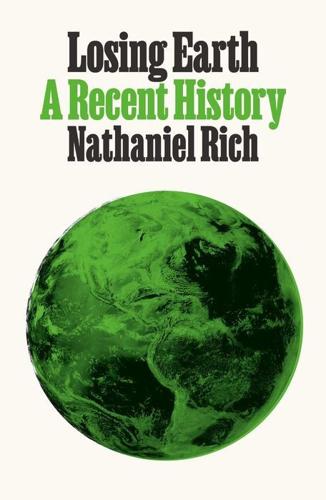
Losing Earth: A Recent History
by
Nathaniel Rich
Published 4 Aug 2018
Another report in 1977, commissioned by the Energy Research and Development Administration (the predecessor to the Energy Department), warned that humanity’s fossil fuel habit would lead inexorably to a host of “intolerable” and “irreversible” disasters, but it categorized the best available remedy—a transition to renewable energy—as far-fetched. “Any government action requires political consensus,” concluded the authors. “Such consensus may be difficult to achieve.” The anthropologist Margaret Mead, who knew something about the rigidity of cultural patterns, had understood the urgency of the problem even earlier, in 1975, when she convened a global warming symposium at the National Institute of Environmental Health Sciences. “We are facing a period when society must make decisions on a planetary scale,” she wrote.
…
He reserved particular disdain for Paul Ehrlich’s The Population Bomb, which prophesied that hundreds of millions of people would starve to death if the world failed to curb population growth; the Club of Rome, an organization of European scientists, heads of state, and economists, which warned that the world would run out of natural resources; and, as recently as the mid-seventies, the hypothesis advanced by some of the nation’s leading authorities on global climate—among them Carl Sagan, Stephen Schneider, and Ichtiaque Rasool—that a new ice age was dawning, thanks to the proliferation of synthetic aerosols. All were theories of questionable scientific merit, portending vast, authoritarian remedies to halt economic progress, and all had been debunked. Sununu had suspected that the greenhouse effect belonged to this nefarious cabal since 1975, when Margaret Mead spoke out on the subject. “Never before have the governing bodies of the world been faced with decisions so far-reaching,” she wrote. “It is inevitable that there will be a clash between those concerned with immediate problems and those who concern themselves with long-term consequences.” When Mead talked about “far-reaching” decisions and “long-term consequences,” Sununu heard the marching of jackboots.
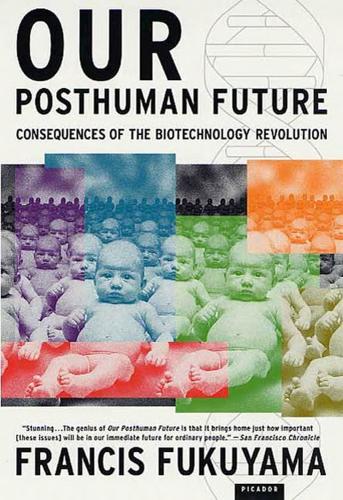
Our Posthuman Future: Consequences of the Biotechnology Revolution
by
Francis Fukuyama
Published 1 Jan 2002
There is much more variability in human than in animal behavior, since human beings are to a much greater degree cultural creatures, learning how to behave from laws, customs, traditions, and other influences that are socially constructed rather than natural.8 Post-Boas cultural anthropologists in particular have delighted in emphasizing the variability of human behavior. Many of the classics of twentieth-century anthropology have been those, like Margaret Mead’s Coming of Age in Samoa, that purported to show that some cultural practice familiar in the West, like sexual jealousy or the regulation of adolescent female sexuality, was not practiced in some exotic non-Western culture.9 This tradition lives on in countless “cultural studies” departments of universities around the United States, which emphasize deviant, transgressive, or otherwise unusual forms of behavior.
…
The content of human languages is arbitrary and culturally constructed, but the “deep structures” of grammar first identified by Noam Chomsky, on which all languages are based, are not. Many of the examples of bizarre or atypical behavior used to undermine the existence of universal modes of cognition are, like Margaret Mead’s study of Samoan adolescents, flawed. The Hopi Indians were said not to have a concept of time, when in fact they do; the anthropologist studying them simply didn’t recognize it.10 One might think colors would be good candidates for social construction, since what we identify as “blue” and “red” are in fact just points along a continuous spectrum of light wavelengths.
…
.: Rutgers University Press, 1990). 7 Carl C. Brigham, A Study of American Intelligence (Princeton, N.J.: Princeton University Press, 1923). 8 For an argument for the continuity between biology and culture, see Edward O. Wilson, Consilience: The Unity of Knowledge (New York: Knopf, 1998), pp. 125–130. 9 Margaret Mead, Coming of Age in Samoa: A Psychological Study of Primitive Youth for Western Civilization (New York: William Morrow, 1928). 10 Donald Brown, Human Universals (Philadelphia: Temple University Press, 1991), p. 10. 11 Nicholas Wade, “Of Smart Mice and Even Smarter Men,” The New York Times, September 7, 1999, p.
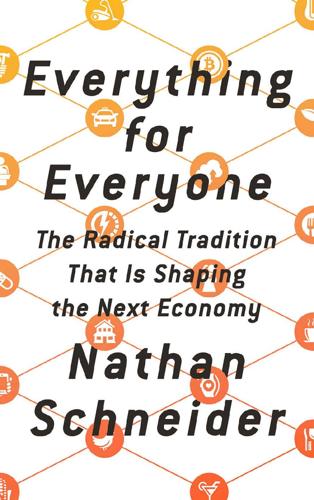
Everything for Everyone: The Radical Tradition That Is Shaping the Next Economy
by
Nathan Schneider
Published 10 Sep 2018
I will not dwell much, either, on the early human side of what museums consider natural history—our mythologies of tribal, “primitive” societies, which rest on an assumption that general facts hold consistent for a tremendous range of groupings of human beings across ages and biomes, societies either too remote or too extinct to talk back. Even Margaret Mead, an anthropologist not shy of drawing strong conclusions, could conclude little more from her editorship of a volume titled Cooperation and Competition Among Primitive Peoples than that “competitive and cooperative behavior on the part of individual members of a society is fundamentally conditioned by the total emphasis of that society”—that is, it depends.
…
Something similar happened to the more recent CO-OPs, or “consumer operated and oriented plans,” that the Affordable Care Act enabled, which soon suffered crippling restrictions and a two-thirds cut in their promised loan budget from Congress while still in their startup phase.19 ColoradoCare threatened even more constituencies, and they stopped it before it began. Opposed by prominent Democrats and Republicans alike, and with a daunting reference to the tax hike at the start of the ballot text, the proposal won just over 20 percent of the vote. During the campaign, Aguilar liked to recite the Margaret Mead line about “a small group of thoughtful, committed citizens” changing the world. But not this time. The state missed a chance for universal coverage; the cooperative commonwealth missed a chance to spread again, and to meet an essential need for millions of people with a political coup. In fits of sense at various times and places, politicians have adopted policies that support the development of cooperative enterprise.
…
Jean Leclercq, The Love of Learning and the Desire for God (Fordham University Press, 1961), 175. 3. E.g., Lynn Margulis, Symbiotic Planet: A New Look at Evolution (Basic Books, 1998); Martin A. Nowak and Roger Highfield, Super-Cooperators: Altruism, Evolution, and Why We Need Each Other to Succeed (Free Press, 2012). 4. Margaret Mead, ed., Cooperation and Competition Among Primitive Peoples (McGraw-Hill, 1937), 16; Alexa Clay, “Neo-Tribes: The Future Is Tribal,” keynote at re:publica in Berlin, Germany (May 4, 2016). 5. Adapted, not verbatim, from Elinor Ostrom, Governing the Commons: The Evolution of Institutions for Collective Action (Cambridge University Press, 1990), 90; for applications of Ostrom’s framework to historical commons, see “Collective Action Institutions in a Long-Term Perspective,” a special issue of the International Journal of the Commons 10, no. 2 (2016); an excellent primer on the commons is David Bollier, Think Like a Commoner: A Short Introduction to the Life of the Commons (New Society Publishers, 2014). 6.
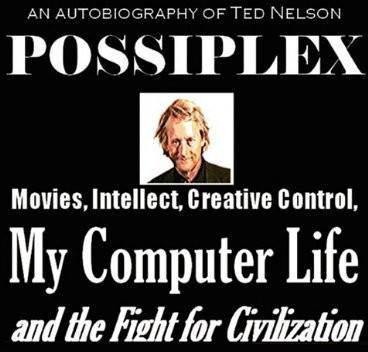
Possiplex
by
Ted Nelson
Published 2 Jan 2010
My eleventh birthday was the worst day of my life. When I left Ralph alone in my room, he went through my drawers and found my stash of Esquire calendars and naughty books, all pocket editions. As I recall, the drawer contained three novels by Thorne Smith (Did She Fall, Rain in the Doorway and The Night Life of the Gods), Margaret Mead’s Sex and Temperament in Three Primitive Societies and Male and Female, a Signet (or Mentor) pocket analysis of the Kinsey report, and Finistère, a homosexual novel. Ralph scolded me (and seemed to think I did not know what was really in these books). Then he gave me a junk children’s toy and we went to Coney Island.
…
I had a long talk with Jean Herskovits* (a recent Swarthmore graduate and daughter of anthropologist Melvil Herskovits, one of the creators of the doctrine of cultural relativism). She was getting a D.Phil in anthropology at Oxford, and I impressed her. She thought I should go to Oxford in anthropology and would give me a strong recommendation; I agreed that sounded right. I had loved my anthropology course at Penn, and was taken by the romantic anthropologists like Margaret Mead and Francis Huxley (whose book Affable Savages made field work sound wonderful). And next to actors, cultural anthropologists were my favorite people. * Later Jean Herskovits Kopytoff. So Oxford in Anthropology was my next plan. But deep down I thought I might invent a field that nobody had created yet.
…
Fuck and damn!” he would say, most charmingly. His very wrinkled face may have had to do with the smoking. He and the Lillys once came to dinner our over-garage apartment (by this time I was married). I wish I had known how little time I had with him. We had only a couple of conversations. I once spoke of Margaret Mead, his ex-wife—“Oh, Margaret!” I remember him saying, with great enthusiasm for her. What would Gregory Bateson have said? 1963 Bateson and I talked about words: I think we talked about the famous phrase Bateson had coined, “double bind”. He told me his father had also coined an interesting word: “metamerism”, meaning the biological multiplication of successful units, such as the segments of a millipede or centipede, or the scales of a fish.
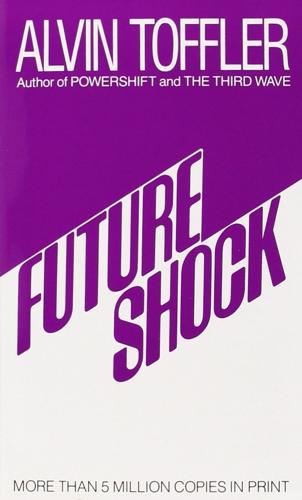
Future Shock
by
Alvin Toffler
Published 1 Jun 1984
Thus we may expect many among the people of the future to carry the streamlining process a step further by remaining childless, cutting the family down to its most elemental components, a man and a woman. Two people, perhaps with matched careers, will prove more efficient at navigating through education and social shoals, through job changes and geographic relocations, than the ordinary child-cluttered family. Indeed, anthropologist Margaret Mead has pointed out that we may already be moving toward a system under which, as she puts it, "parenthood would be limited to a smaller number of families whose principal functions would be childrearing," leaving the rest of the population "free to function—for the first time in history—as individuals."
…
Part Six: STRATEGIES FOR SURVIVAL Chapter 17 COPING WITH TOMORROW In the blue vastness of the South Pacific just north of New Guinea lies the island of Manus, where, as every first-year anthropology student knows, a stone age population emerged into the twentieth century within a single generation. Margaret Mead, in New Lives for Old, tells the story of this seeming miracle of cultural adaptation and argues that it is far more difficult for a primitive people to accept a few fragmentary crumbs of Western technological culture than it is for them to adopt a whole new way of life at once. "Each human culture, like each language, is a whole," she writes, and if "individuals or groups of people have to change ... it is most important that they should change from one whole pattern to another."
…
CHAPTER ELEVEN 238 Lundberg is quoted from [163], p. 295. 238 Wolf's remarks are from an interview with the author. 239 On leisure as a family-cement, see [183], p. 7. 239 Greenberg is quoted from an interview with the author. 240 Weitzen's comments are from his article, "The Programmed Child," in Mademoiselle, January, 1966, pp. 70-71. 240 The "multi-mouse" experiments are reported in The New York Times, May 30, 1968. 242 Margaret Mead on childlessness: from her paper "The Life Cycle and its Variations: The Division of Roles" in [132], p. 872. 245 For the novels of Skinner and Rimmer, see [125], [126], and [328]. 246 The work of the Ecumenical Institute is described in The New York Times, November 9, 1968. 248 The British Sexual Offenses Act became law on July 27, 1967. 250 Nelson Foote is cited in "The American Family Today" by Reuben Hill in [109], pp. 93-94. 252 The black civil rights worker is quoted from "...
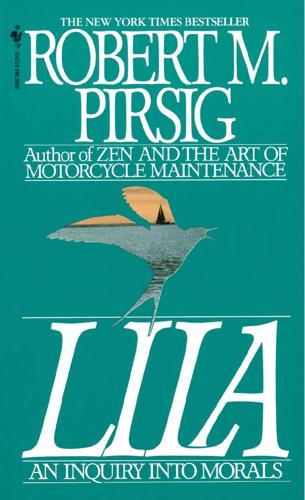
Lila: An Inquiry Into Morals
by
Robert M. Pirsig
Published 1 Jan 1991
As he reflected further on that wall he thought about how all paths within it seemed to lead to Franz Boas, who in 1899 had become Columbia University’s first professor of anthropology, and had so completely dominated his field that most of the anthropology in America today still seems to lie in his shadow. Students working within his intellectual domain became famous: Margaret Mead, Ruth Benedict, Robert Lowie, Edward Sapir, Alfred Kroeber, Paul Radin and others. They produced a flowering of anthropological literature so great and so rich that their work is sometimes mistaken for all of cultural anthropology. The key to getting through the wall lay in re-examining the philosophical attitudes of Boas himself.
…
Boas' training was in mathematics and physics in nineteenth-century Germany. His influence lay not in the establishment of a single particular theory of anthropology but in the establishment of a method of anthropological investigation. This method followed the principles of the hard science he had been trained in. Margaret Mead said, He feared premature generalization like the plague, and continually warned us against it. Generalization should be based on the facts and only on the facts. It is indubitable that science was his religion, Kroeber said. He called his early convictions materialistic. Science could tolerate nothing "subjective"; value judgments — and by infection even values considered as phenomena — must be absolutely excluded.
…
The cultural relativists, backed by Boas' doctrines of scientific empiricism, virtually wiped out the credibility of the older Victorian evolutionists and gave to anthropology a shape it has had ever since. That victory is always presented as a victory of scientific objectivity over unscientific prejudice, but the Metaphysics of Quality says deeper issues were involved. The phenomenal sales of Ruth Benedict’s Patterns of Culture and Margaret Mead’s Coming of Age in Samoa indicated something else. When a book about the social customs of a South Sea island suddenly becomes a best seller you know there’s something in it other than an academic interest in Pacific island customs. Something in that book has hit a nerve to cause such a huge public acclaim.
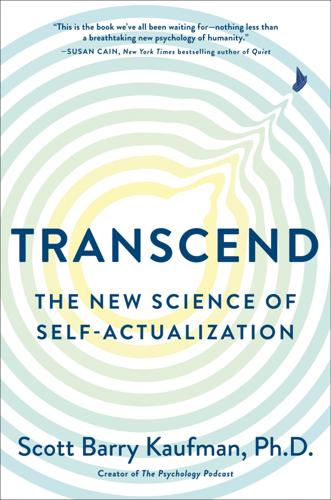
Transcend: The New Science of Self-Actualization
by
Scott Barry Kaufman
Published 6 Apr 2020
Nevertheless, it is a method of rude experience and selection. The earliest efforts of man were of this kind. Need was the impelling force.3 Almost instantly, Maslow was bitten by the anthropology bug. The following year, he would transfer to the University of Wisconsin, where he read voraciously from such seminal anthropological figures as Margaret Mead, Branisław Malinowski, Ruth Benedict, and Ralph Linton (whom his wife, Bertha, had as a professor). When he moved to New York City in 1935, he sat in on many anthropology classes and seminars with Ruth Benedict, Ralph Linton, Alexander Lesser, and George Herzog. In fact, he would form a close friendship with Ruth Benedict, drawn to her wit, brilliance, and kindness.
…
Among them were New York’s most prominent psychoanalytic practitioners and writers: Alfred Adler, Erich Fromm, Karen Horney, Bela Mittelmann, Emil Oberholzer, Abram Kardiner, David Levy, the Gestalt psychologists Max Wertheimer and Kurt Koffka, the neuropsychiatrist Kurt Goldstein, and Columbia University’s prominent anthropologists Ruth Benedict and Margaret Mead. Influential as all the mentors were, Maslow was particularly fond of Ruth Benedict and Max Wertheimer. He described his efforts to study self-actualization as an attempt to understand both of them, whom he “loved, adored, and admired and who were very, very wonderful people.”3 He admired them greatly, but he was also deeply curious about what made them so different from others.
…
.* One major thread was the idea of “synergy,” which fascinated Maslow. It was a term he first learned from his friend and mentor, anthropologist Ruth Benedict, one of the main inspirations for his work on self-actualization (because he viewed her as so self-actualizing). Only a handful of people who had known Benedict personally (such as Margaret Mead) were aware of her idea of synergy, but it clearly left an imprint on Maslow, and he saw the relevance to enlightened management and self-actualization in the workplace.9 Benedict referred to synergistic cultures as those that are holistically structured and function for mutual benefit of the individual and the larger society.10 Placing this notion within an organizational context, Maslow argued that in an enlightened or “eupsychian” workplace—meaning an environment conducive to self-actualization—that which is good for personal development is also good for the company.

Why Women Have Better Sex Under Socialism: And Other Arguments for Economic Independence
by
Kristen R. Ghodsee
Published 20 Nov 2018
The anthropologist Alexei Yurchak captured the zeitgeist of growing up in the USSR of the 1980s in the title of his book: Everything Was Forever Until It Was No More.2 Positive change can and does happen, and while there are always random historical contingencies at work, it is ultimately people working collectively who shape history. “Never doubt that a small group of thoughtful, committed citizens can change the world,” begins a quote attributed to the anthropologist Margaret Mead. “Indeed, it is the only thing that ever has.” Of course, things don’t always change for the better, as Yurchak and many of his compatriots in Eastern Europe found out. Regression happens just as often as progress, which may be why so many people cling to the status quo. But trying to tread water and stay in one place makes it easier for those trying to pull us backward to succeed.
…
For information on the Borg, see www.startrek.com/database_article/borg; Francis Fukuyama, The End of History and the Last Man (New York: Free Press, 1992). 2. Alexei Yurchak, Everything Was Forever Until It Was No More (Princeton, NJ: Princeton University Press, 2005). 3. This quote is attributed to Margaret Mead, although there is no written source. A full explanation of the quote can be found on the website of the Institute for Intercultural Studies: www.intercul turalstudies.org/faq.html. 4. Seema Mehta, “Trump Backers Tweet #Repealthe19th After Polls Show He’d Win If Only Men Voted,” Los Angeles Times, Oct. 12, 2016, www.latimes.com/nation/politics/trailguide/la-na-trail guide-updates-trump-backers-tweet-repealthe19th-1476299001-htmlstory.html. 5.
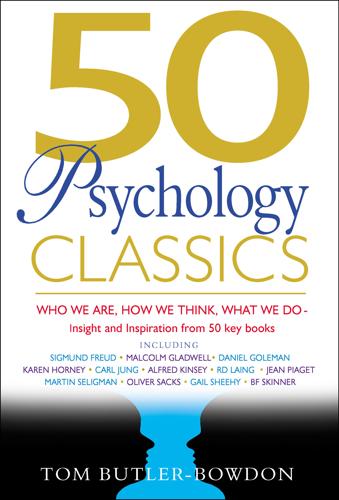
50 Psychology Classics
by
Tom Butler-Bowdon
Published 14 Oct 2007
There he married Elizabeth Erickson; they had five children, in addition to three he had in a previous marriage. In 1948 Erickson moved to Phoenix for health reasons, where his “miracle” cures brought people to him from across America. He hypnotized writer Aldous Huxley, and counted among his friends anthropologist Margaret Mead and philosopher Gregory Bateson. He was founder of the American Society of Clinical Hypnosis and a fellow of the American Psychological and Psychiatric Associations. Erickson died in 1980. His ashes were scattered on Squaw Peak in Phoenix, which he had often ordered patients to climb as part of their treatment.
…
In 1927 he began studying psychoanalysis at the Vienna Psychoanalytic Institute, working under Anna Freud (see p. 104) and specializing in child psychology. In 1933, Erik moved to the United States, and changed his name to Erikson. He taught for three years at Harvard Medical School and also became Boston’s first child analyst. At Harvard he was strongly influenced by his friendships with anthropologists Ruth Benedict, Gregory Bateson, and Margaret Mead. He later had positions at Yale University, the Menninger Foundation, the Center for Advanced Study in the Behavioral Sciences at Palo Alto, California, and the Mount Zion Hospital in San Francisco. Erikson’s well-known studies of the Lakota and Yurok Native American peoples were made while he was at the University of California at Berkeley.
…
In 1934 Maslow obtained his PhD in psychology, but returned to New York to do controversial work on the sex lives of college women with Edward Thorndike at Columbia University, where he also found a mentor in Alfred Adler (see p 14). He began a 14-year teaching post at Brooklyn College, where his mentors included European emigrés such as psychologist Eric Fromm, Karen Horney (see p 156), and anthropologist Margaret Mead. Maslow’s Principles of Abnormal Psychology was published in 1941, and in 1943 came his famous journal article in Psychological Review, “A Theory of Motivation,” which introduced the concept of a hierarchy of needs. From 1951 to 1969 Maslow headed the psychology department at Brandeis University, where he wrote Motivation and Personality (1954) and Towards a Psychology of Being (1968).

Survival of the Richest: Escape Fantasies of the Tech Billionaires
by
Douglas Rushkoff
Published 7 Sep 2022
By subjecting people to a “technology of behavior ,” we could not only create better gamblers and consumers, but better and more cooperative people. Over time, different anthropologists and social scientists extended these two basic approaches to controlling human behavior. Gregory Bateson and Margaret Mead, perhaps most importantly, applied behaviorism not just to individuals but to whole societies. As Bateson put it, we now understood that the individual was no more than “a servosystem coupled with its environment.” He and Mead believed that their new theories of “systems” could be used to “engineer” a new humanity.
…
This changes the environment again, and so on; the thermostat joins the heater and the room into a simple, circular, self-regulating system. It can respond to changes in the environment without being given any new commands from a human controller. This idea of feedback loops and circular systems excited a lot of people. Gregory Bateson and Margaret Mead thought cybernetics would prevent fascism. For where fascism depends on the fragmenting of knowledge and oversimplified direction from above, cybernetics would engender holism and serve as “a kind of vaccination against fragmentation.” Communications experts realized they weren’t just sending messages down to the masses; the masses were all reacting, speaking to one another, and changing their behaviors based on a myriad of factors.
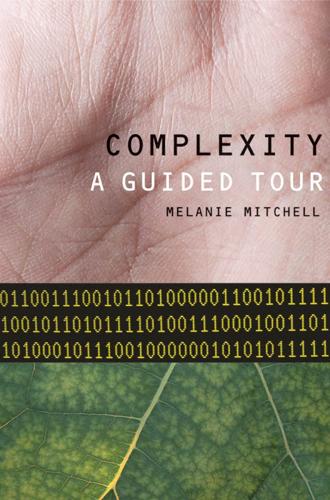
Complexity: A Guided Tour
by
Melanie Mitchell
Published 31 Mar 2009
A prime mover of this group was the mathematician Norbert Wiener, whose work on the control of anti-aircraft guns during World War II had convinced him that the science underlying complex systems in both biology and engineering should focus not on the mass, energy, and force concepts of physics, but rather on the concepts of feedback, control, information, communication, and purpose (or “teleology”). Norbert Wiener, 1894–1964 (AIP Emilio Segre Visual Archives) In addition to Norbert Wiener, the series of Macy Foundation conferences included several scientific luminaries of the time, such as John von Neumann, Warren McCulloch, Margaret Mead, Gregory Bateson, Claude Shannon, W. Ross Ashby, among others. The meetings led Wiener to christen a new discipline of cybernetics, from the Greek word for “steersman”—that is, one who controls a ship. Wiener summed up cybernetics as “the entrie field of control and communication theory, whether in the machine or in the animal.”
…
This work includes von Neumann’s self-reproducing automaton, which linked notions of information and reproduction; H. Ross Ashby’s “Design for a Brain,” an influential proposal for how the ideas of dynamics, information, and feedback should inform neuroscience and psychology; Warren McCulloch and Walter Pitts’ model of neurons as logic devices, which was the impetus for the later field of neural networks; Margaret Mead and Gregory Bateson’s application of cybernetic ideas in psychology and anthropology; and Norbert Wiener’s books Cybernetics and The Human Use of Human Beings, which attempted to provide a unified overview of the field and its relevance in many disciplines. These are only a few examples of works that are still influential today.
…
Ross Ashby’s ‘Design for a Brain’”: Ashby, R. H., Design for a Brain. New York: Wiley, 1954. “Warren McCulloch and Walter Pitts’ model of neurons”: McCulloch, W. and Pitts, W., A logical calculus of ideas immanent in nervous activity. Bulletin of Mathematical Biophysics 5, 1942, pp. 115–133. “Margaret Mead and Gregory Bateson’s application of cybernetic ideas”: See, e.g., Bateson, G., Mind and Nature: A Necessary Unity. Cresskill, NJ: Hampton Press, 1979. “Norbert Wiener’s books Cybernetics and The Human Use of Human Beings”: Wiener, N. Cybernetics: Or the Control and Communication in the Animal and the Machine.

Healthy at 100: The Scientifically Proven Secrets of the World's Healthiest and Longest-Lived Peoples
by
John Robbins
Published 1 Sep 2006
Moor-Jankowski, Medical Primatology (Karger, 1971), pp. 357–75, and Howard Bloom, The Lucifer Principle: A Scientific Expedition into the Forces of History (Atlantic Monthly Press, 1995), p. 239. Bloom points out that a classic example of this principle is Margaret Mead’s contrast between the Arapesh and the Mundugamor of New Guinea. See Margaret Mead, Male and Female: A Study of the Sexes in a Changing World (Dell, 1968), pp. 76–77, 86–88, 117, 134–35. 2. Abbie Blair’s story about Freddie’s adoption is from the Dec. 1964 Reader’s Digest and was reprinted in Stories for the Heart, compiled by Alice Gray (Portland: Multnomah Press, 1996 edition), pp. 188–92. 3.
…
It had not yet been widely recognized that from the moment of our births, the customs into which we are born exert an enormous influence on our experience and behavior. This changed with the work of one of the world’s most renowned anthropologists, the bestselling author Ruth Benedict. According to her student, friend, and colleague, Margaret Mead, Ruth Benedict’s work is the main reason that the words “in our culture” have come to be widely used and understood. It is largely thanks to her that we have come to understand how profoundly we are shaped by the cultures in which we live. In his book A Language Older Than Words, Derrick Jensen describes how Ruth Benedict sought to understand why some cultures are fundamentally peaceful and healthy while others are not, why women, children, and the aged are treated well in some cultures while in others they are not, and why some cultures are cooperative while others are competitive.1 Based on her study of more than seven hundred societies, Benedict perceived a single pattern that seemed to explain all these variations.
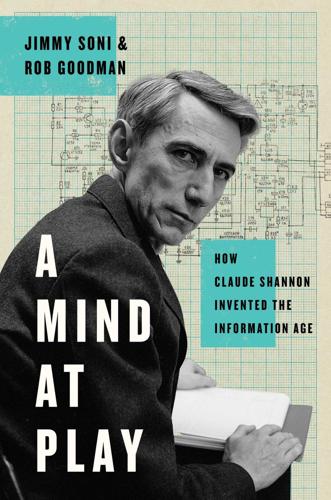
A Mind at Play: How Claude Shannon Invented the Information Age
by
Jimmy Soni
and
Rob Goodman
Published 17 Jul 2017
The mechanical mouse was a featured subject of discussion at the famed 1951 Macy Conference, an interdisciplinary meeting of scientists and scholars in New York. Shannon was in attendance along with many of the leading authorities on artificial intelligence and computing, as well as the anthropologist Margaret Mead. The incongruity of such leading minds discussing a mechanical mouse was mitigated by the fact that Theseus (or, to be exact, the mouse-maze system as a whole) was a working example of the “artificial intelligence” that many of the esteemed attendees had spent their careers pondering only in theory.
…
v=vPKkXibQXGA. “I was told that”: Henry Pollak, interviewed by the authors, August 7, 2014. “Mouse with a Memory”: Time, May 19, 1952, 59. “It is all too human”: “Presentation of a Maze-Solving Machine,” in Cybernetics: Transactions of the Eighth Conference March 15–16, 1951, ed. Heinz von Foerster, Margaret Mead, and Hans Lukas Teuber (New York: Josiah Macy, Jr. Foundation, 1952), 179. “The fascination of watching Shannon’s innocent rat”: “Note by the Editors,” in ibid., xvii. “a demonstration device”: Letter from Shannon to Irene Angus, August 8, 1952, Shannon Papers, cited in Gertner, The Idea Factory.
…
Scientific American 225 (1971): 179–88. Turing, Alan. “Alan Turing’s Report from Washington DC, November 1942.” Van den Herik, H. J. “An Interview with Claude Shannon (September 25, 1980 in Linz, Austria).” ICCA Journal 12, no. 4 (1989): 221–26. “Vannevar Bush: General of Physics.” Time, April 3, 1944. Von Foerster, Heinz, Margaret Mead, and Hans Lukas Teuber, eds. Cybernetics: Transactions of the Eighth Conference March 15–16, 1951. New York: Josiah Macy, Jr. Foundation, 1952. Von Neumann, John. “First Draft of a Report on the EDVAC.” In The Origins of Digital Computers: Selected Papers. Ed. Brian Randell. New York: Springer-Verlag, 1973.
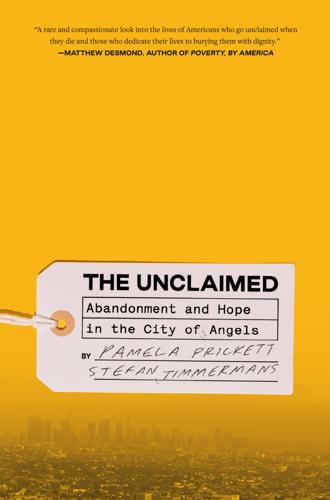
The Unclaimed: Abandonment and Hope in the City of Angels
by
Pamela Prickett
and
Stefan Timmermans
Published 11 Mar 2024
GO TO NOTE REFERENCE IN TEXT received the letter Interview with Marjorie Ramos, August 3, 2021. Court records would show that Lena’s already depleted estate was charged $80.62 for the public administrator to telephone Marjorie and leave a voicemail message. GO TO NOTE REFERENCE IN TEXT Chapter 8. The Dead Don’t Vote Margaret Mead Margaret Mead, “Remember Me,” Poemist.com. GO TO NOTE REFERENCE IN TEXT joined LAC+USC in 2009 Email from Father Chris to author on February 18, 2023. He said that he joined St. Camillus as pastor and chaplain in 1995. He led the ceremony in 2009. GO TO NOTE REFERENCE IN TEXT irked Father Chris Interviews with Chris Ponnet, April 16, 2016, July 3, 2019, and July 8, 2022.
…
* * * — Marjorie Ramos received the letter from the Office of Decedent Affairs alerting her of the county’s procedures to claim cremains, but she ignored it. She’d been close to her cousin, Marlene, who had since died, but not Lena. She and Rudy had moved on with their lives. PART THREE .. REMEMBERED For if you always think of me, I will never be gone. —Margaret Mead, “Remember Me” 8. THE DEAD DON’T VOTE .. Father Chris Ponnet held his patient list up against a hospital room doorframe and drew a small cross next to a name. The sign served as a reminder to note later in an electronic record that he had given the patient a blessing. Father Chris headed the chaplaincy program at LAC+USC, and he spent his workdays making rounds among the patient rooms in the large public hospital.

They Have a Word for It A Lighthearted Lexicon of Untranslatable Words & Phrases-Sarabande Books (2000)
by
Howard Rheingold
Published 10 Mar 2020
James Press, Ltd., 1986. Capra, Fritjof. The Tao of Physics. Berkeley: Shambala, 1975. Bibliography 271 Christopher, Robert C. The Japanese Mind: The Goliath Explained. New York: Simon & Schuster, 1983. Codrington, Robert Henry. "Mana." In Primitive Heritage: An Anthropological Anthology, edited by Margaret Mead and Nicolas Calas. New York: Random House, 1953. Coxhead, David, and Susan Hiller. Dreams, Visions of the Night. New York: Crossroad, 1976. Danielou, Alain. Shiva and Dionysus: The Religion of Nature and Eros, translated by K. F. Hurry. New York: Inner Traditions International, Ltd., 1982. David-Neel, Alexandra, and Lama Yongden.
…
The Book of Laughter and Forgetting. New York: Knopf, 1980. Laughlin, Robert M. "The Great Tzotzil Dictionary of San Lorenzo Zinacantan." In Smithsonian Contributions to Anthropology. Washington, D.C.: Smithsonian Institution, 1975. Lee, Dorothy. "Being and Value." In Primitive Heritage, An Anthropowgi,cal Anthowgy, edited by Margaret Mead and Nicolas Calas. New York: Random House, 1953. Legge.James, trans. Chuang-Tzu, arranged by Clae Waltham. New York: Ace, 1971. Levieux, Michel, and Eleanor Levieux. Cassell's Colwquial French. London: Cassell Ltd., 1980. Levi-Strauss, Claude. Structural Anthropowgy. New York: Basic Books, 1963-76.
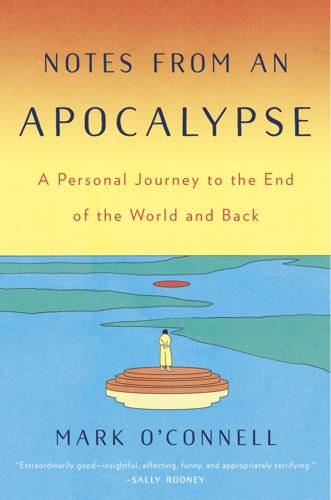
Notes From an Apocalypse: A Personal Journey to the End of the World and Back
by
Mark O'Connell
Published 13 Apr 2020
After the speech, Congress voted to allocate $169 million for the construction and stocking of fallout shelters in public and private properties across the country. The number of families who went on to build shelters was relatively low, but the trend was seen, among cultural critics of the time, as indicative of the fearful self-enclosure of the new suburban middle class. Writing in The New York Times in 1961, the anthropologist Margaret Mead suggested that anxieties about nuclear war and urban crime had caused a mass retreat to the suburbs, where middle-class Americans were hiding from the world and its darkening future. “The armed, individual shelter,” she wrote, “is the logical end of this retreat from trust in and responsibility for others.”
…
I understand the fear, the desire for it to be assuaged. But more than I want my fear assuaged, I want to resist the urge to climb into a hole, to withdraw from an ailing world, to bolt the door after myself and my family. When I think of Vicino’s project, his product, what comes to mind is exactly Margaret Mead’s judgment of what it means to secure oneself inside a shelter: a withdrawal from any notion that our fate might be communal, that we might live together rather than survive alone. The bunker, purchased and tricked out by the individual consumer, is a nightmare inversion of the American Dream.
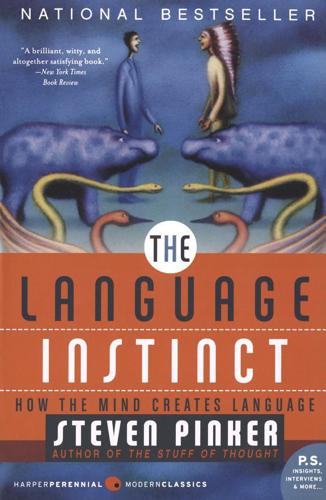
The Language Instinct: How the Mind Creates Language
by
Steven Pinker
Published 1 Jan 1994
By understanding why linguistic determinism is wrong, we will be in a better position to understand how language itself works when we turn to it in the next chapters. The linguistic determinism hypothesis is closely linked to the names Edward Sapir and Benjamin Lee Whorf. Sapir, a brilliant linguist, was a student of the anthropologist Franz Boas. Boas and his students (who also include Ruth Benedict and Margaret Mead) were important intellectual figures in this century, because they argued that nonindustrial peoples were not primitive savages but had systems of language, knowledge, and culture as complex and valid in their world view as our own. In his study of Native American languages Sapir noted that speakers of different languages have to pay attention to different aspects of reality simply to put words together into grammatical sentences.
…
The alternative, sometimes called “biological determinism,” is said to assign people to fixed slots in the socio-political-economic hierarchy, and to be the cause of many of the horrors of recent centuries: slavery, colonialism, racial and ethnic discrimination, economic and social castes, forced sterilization, sexism, genocide. Two of the most famous founders of the SSSM, the anthropologist Margaret Mead and the psychologist John Watson, clearly had these social implications in mind: We are forced to conclude that human nature is almost unbelievably malleable, responding accurately and contrastingly to contrasting cultural conditions…. The members of either or both sexes may, with more or less success in the case of different individuals, be educated to approximate [any temperament]….
…
In fact, a lot of this nonsense is part of the standard intellectual equipment of every educated social scientist, providing a permanent obstacle to balanced reasoning about various psychological and social phenomena. I figure it will make me permanently unemployable, so I am not aiming to finish it any time soon. The allusion to Samoan free sex pertains to Derek Freeman’s 1983 bombshell showing how Margaret Mead got the facts wrong in her classic book Coming of Age in Samoa. (Among other things, her bored teenage informants enjoyed pulling her leg.) The other accusations are carefully documented in a recent review, Human Universals, written by another anthropologist, Donald E. Brown, who was trained in the standard ethnographic tradition.

Routes to Rejoin
by
Stay European
Published 3 Oct 2021
Road to the renegotiation 55 6. A change of government 63 7. Disunited Kingdom 73 8. Britain’s place in the world 79 Conclusion: Rallying for rejoin 85 “Never doubt that a small group of thoughtful, committed citizens can change the world; indeed, it’s the only thing that ever has.” Margaret Mead 11 Introduction Britain has the biggest pro-EU movement in Europe – yet it is now further out of the EU than even the most ardent Brexiters advocated during the referendum campaign five years ago. Despite a narrow 52-48% win for Leave in the 2016 referendum and the crisis that followed, the government continues to pursue a policy not only of Brexit, but of the hardest of hard Brexits.
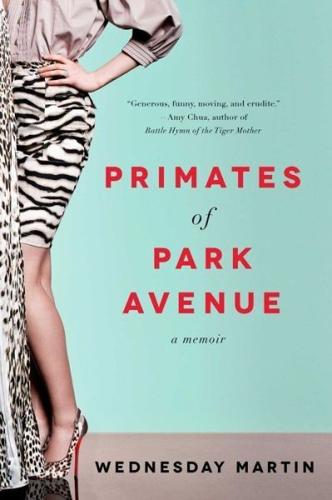
Primates of Park Avenue: A Memoir
by
Wednesday Martin Ph.d.
Published 1 Jun 2015
In a world where morning greetings went unreturned, getting play dates was a blood sport, and even walking down the sidewalk was an exercise in dominance and submission, she was a culture-shocked outcast. Using her background in anthropology and primatology to find her footing, she made like Goodall in Gombe, observing mating practices, display rituals, and moms acting like olive baboons at school drop-off. She channeled Margaret Mead to understand the tribe’s seasonal migrations, cultish exercise rites, and her own overpowering desire to possess a fetish handbag. But she also saw that not even sky-high penthouses and chauffeured SUVs could protect this ecologically released tribe from calamity. When Wednesday’s life turned upside down, she learned how deep the bonds of female friendship really are.
…
When I was older, I babysat some evenings and weekends, too, a logical first job for a hands-on big sister and a popular pastime among the young pre-reproductives in our neighborhood. Probably the only notable thing about my background, the thing that could help me find my footing now, was my mother’s fascination with anthropology and the then-nascent field of sociobiology. Margaret Mead’s Coming of Age in Samoa was one of her favorite books. Mead’s suggestion that Western childhood and adolescence wasn’t the only or right way, and that Samoans arguably did it better, scandalized the country when it came out in 1928, and all over again when it was reissued in 1972. Mead, my mother explained, was an anthropologist.
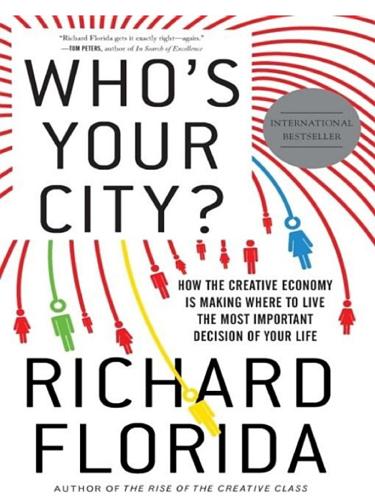
Who's Your City?: How the Creative Economy Is Making Where to Live the Most Important Decision of Your Life
by
Richard Florida
Published 28 Jun 2009
He and Rentfrow were already knee-deep in such a project. Their initial study, entitled “The Geography of Personality,” examines the geographic clustering of basic personality traits.5 Surveying past literature, they note a long-standing interest in cross-cultural personality differences that dates back to the pioneering anthropological studies of Margaret Mead and Ruth Benedict in the early twentieth century.6 Since then, the emergence of modern personality studies and the five-factor model of personality have reignited interest in and research on the geography of personality. A 1973 study found that people living in the northeastern, midwestern, and West Coast regions of the United States had significantly higher “creative productivity”—characterized by high levels of creativity, imagination, intelligence, and unconventionality—than those in other regions.7 Drawing on this study and others, Rentfrow and Gosling utilized a large database of personality traits from Internet surveys of more than half a million people to explore the distribution and clustering of personality by state.8 Their results confirmed that certain states are high on openness, others on agreeableness, others on neuroticism, and so on.
…
See also www.centacs.com/quickstart.htm. 4 For more information on Seligman’s and Peterson’s Values in Action survey, see www.authentichappiness.sas.upenn.edu/questionnaires.aspx. 5 Peter J. Rentfrow, Sam Gosling, and J. Potter, “The Geography of Personality: A Theory of Emergence, Persistence, Expression of Regional Variation in Personality Traits,” Perspectives on Psychological Science, 2008. 6 Margaret Mead, Sex and Temperament in Primitive Societies, Morrow, 1935; Ruth Benedict, The Chrysanthemum and the Sword: Patterns of Japanese Culture, Houghton Mifflin, 1946. 7 S. E. Krug, and R. W. Kulhavy, “Personality Differences Across Regions of the United States,” Journal of Social Psychology 91, 1973, pp. 73-79. 8 If you are so inclined, you can take the test or just have a look at it.
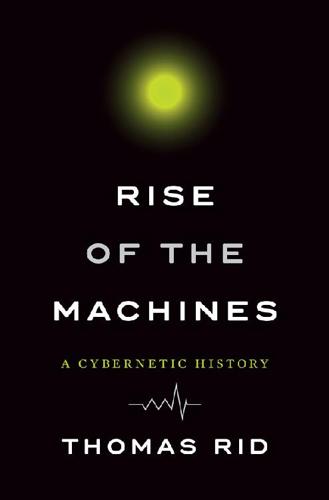
Rise of the Machines: A Cybernetic History
by
Thomas Rid
Published 27 Jun 2016
Ross Ashby, “Design for a Brain,” Electronic Engineering 20 (December 1948): 379–83. The article was reprinted in the United Sates in March 1949 in the magazine Radio-Electronics, pp. 77–80. 26.Margaret Mead, “Cybernetics of Cybernetics,” in Purposive Systems, ed. Heinz von Foerster (New York: Spartan Books, 1968), 1. 27.W. Ross Ashby, “Homeostasis,” in Cybernetics: Circular Causal and Feedback Mechanisms in Biological and Social Systems: Transactions of the Ninth Conference, March 20–21, 1952, New York, NY, ed. Heinz von Foerster, Margaret Mead, and Hans Lukas Teuber (New York: Josiah Macy Jr. Foundation, 1953), 73. 28.Ibid., 74. 29.Ibid., 89. 30.Ibid. 31.Ibid. 32.Ibid., 97. 33.Ibid., 103. 34.Ibid., 95. 35.Ibid., 106. 36.Stefano Franchi, “Life, Death, and Resurrection of the Homeostat,” in The Search for a Theory of Cognition, ed.
…
Twenty-one regular participants and eleven guests met at the Beekman Hotel, two blocks east of Central Park. The Josiah Macy Jr. Foundation, a philanthropic outfit founded in 1930, funded a series of ten meetings, with transportation, meals, and cocktails included. Many distinguished cybernetics-inspired scientists were in the audience, among them Gregory Bateson, his then wife Margaret Mead, Warren McCulloch from MIT’s Laboratory of Electronics, Julian Bigelow, who had worked with Wiener on the antiaircraft predictor, and Arturo Rosenblueth from Mexico City, to whom Wiener had dedicated his foundational book. Wiener himself was not present. The Macy sessions were thrilling, at least for scholars.
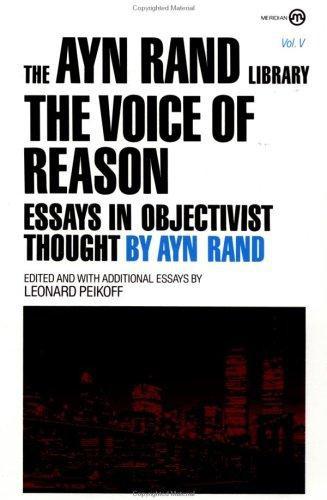
The Voice of Reason: Essays in Objectivist Thought
by
Ayn Rand
,
Leonard Peikoff
and
Peter Schwartz
Published 1 Jan 1989
If objectivity is not possible to man, as the Kantians hold, then in the end anything goes, including any kind of emotionalism; and the humanities and social sciences end up, not as academic disciplines teaching facts, but as the preserve of shifting lobbyists disseminating sheer propaganda, which is what is happening increasingly in our colleges. History is merely one example of it. The field of anthropology offers another eloquent illustration. First we read, a few months ago, about the scandal of Margaret Mead. In her famous 1928 book Coming of Age in Samoa, Miss Mead presented an idyllic picture of life in Samoa. The natives, she claimed, were gentle, peaceful, open, devoid of jealousy, free of stress. It was Rousseau over again (the noble savage), and Miss Mead’s implicit moral was: the superiority of primitive culture over competitive, repressed Western society.
…
As one radio talk-show host in New York, Barry Farber, asked rhetorically: can you imagine the Stanford Anthropology Department expelling a student for doing exactly the same thing in regard to South Africa, i.e., for publishing articles about that regime’s racial crimes? Such a student would have been treated as an academic hero. The double standard involved in the two cases is appalling. One scholar, Margaret Mead, who condemns the West, becomes a revered figure for decades, even though her factual claims are dead wrong. Another, who prints the uncontested truth about a communist dictatorship, is expelled from his discipline. Is this fairness? Is this objectivity? Or is this the complete politiciza tion of the field?
…
Ray, The Science of Psychology (Macmillan: 1964), p. 5. 8 Course number H300, cross-listed as History K492, sec. 2856; date unknown. 9 “Women Approach History Differently—and Men Must Understand the Difference,” The Stanford Observer, Oct., 1982, p. 2; reprinted from The Chronicle of Higher Education, Sept. 15, 1982. Emphasis added. 10 Edwin McDowell, “New Samoa Book Challenges Margaret Mead’s Conclusions,” Jan. 31, 1983, p. C21. 11 Ben Gerson, “Professors for the Revolution,” Aug. 23, 1982, p. 10. 12 J. McKim Malville (Seabury Press: 1981), pp. 44, 18. 13 Lecture by Thomas Judd; date and course title unknown. 14 Jerry Carroll, “Over-Achievers Swarm to This Exotic Class,” Feb. 17, 1983, p. 46. 15 Lawrence Biemiller, “Campuses Trying to Control Religious Cults,” April 6. 1983. 16 Quoted by Diane Ravitch, “The New Right and the Schools,” American Educator, Fall 1982, p. 13.
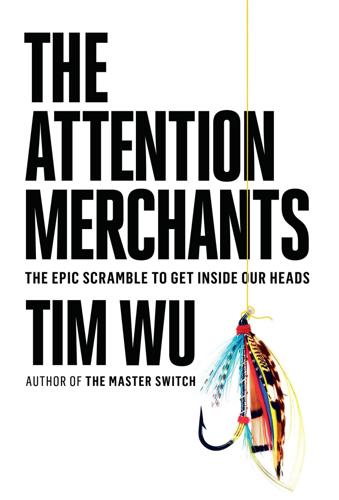
The Attention Merchants: The Epic Scramble to Get Inside Our Heads
by
Tim Wu
Published 14 May 2016
This effect Weaver tried to hedge with what he called “Operation Frontal Lobes,” his personal vision of more cerebral content. A prominent example was the show entitled Wisdom, featuring interviews of luminaries in the sciences, arts, and politics: Robert Frost, Marcel Duchamp, Frank Lloyd Wright, and Margaret Mead, to name a few. But that was window dressing. The Weaver mission was better exampled by another inspired play for ratings share: the NBC “spectaculars.” The first was the 1955 broadcast of the Broadway musical Peter Pan, which attracted 65 million viewers, rivaling anything CBS had done. The “spectacular” concept demonstrated an understanding of the inertia of attentional habits.
…
It is difficult to describe the extent of its resonance; as Esquire contended, “I doubt if in the history of the tube there has been so much talk about anything.”10 Many wondered about what social scientists call the Hawthorne effect, the extent the very act of observation and filming had influenced what happened; and thus, there were those who thought the show exploitative and misleading—including, eventually, the family themselves. Among the documentary’s most prominent defenders was the anthropologist Margaret Mead. “It may be as important for our time,” she said on public television, “as were the invention of drama and the novel for earlier generations: a new way to help people understand themselves.”11 — By the 1990s, the Louds and An American Family were but a distant memory for most, and unknown to the young.
…
Ibid., 389. 6. Ibid., 550. 7. Daniel B. Morgan, Last Stage Manager Standing (New York: Page Publishing, 2015). 8. Tannenbaum and Marks, I Want My MTV, 551. 9. Jeffrey Ruoff, An American Family: A Televised Life (Minneapolis: University of Minnesota Press, 2002), 65; italics added. 10. Ibid., xv. 11. Margaret Mead, panel discussion for An American Family (PBS), WNET, 1973. 12. Tannenbaum and Marks, I Want My MTV, 551. 13. Ibid., 553. 14. John J. O’Connor, “ ‘The Real World,’ According to MTV,” New York Times, July 9, 1992, http://www.nytimes.com/1992/07/09/arts/review-television-the-real-world-according-to-mtv.html. 15.

The Profiteers
by
Sally Denton
Soon after cofounder Ernest Lawrence died in 1958, it was renamed the Lawrence Radiation Laboratory, and then, in 1971, it was changed again to Lawrence Livermore Laboratory. Even after the Cold War ended, the US government paid the University of California to keep the weapons labs operating, with the university “plowing much of the $8 million-per-lab management fee back into the labs themselves,” as Gusterson, who calls himself “the Margaret Mead of the weapons labs,” described the arrangement. The open-faced and enigmatic British anthropologist, who has studied nuclear weapons scientists for thirty years, traces the Cold Warriors’ takeover of the weapons labs to a trumped-up spy case against a Chinese American scientist. On March 6, 1999, the New York Times published a sensational front-page story titled “China Stole Nuclear Secrets for Bombs, US Aides Say.”
…
PART FOUR: FROM MULESKINNER TO SOVEREIGN STATE, 2009–2015 The case of Wen Ho Lee has been thoroughly reported in news reports—in the US and abroad—and in books, papers, audiovisual accounts, congressional and legal hearings, and investigation documents. Among the most insightful was the work of Hugh Gusterson, the anthropologist who calls himself “the Margaret Mead of the Weapons Labs.” Also important is A Convenient Spy by Dan Stober and Ian Hoffman. In the case of the laid off employees against LLNS, I watched the entire first jury trial in Alameda County court in Oakland, California, and perused thousands of pages of motions, depositions, and court filings.
…
“When the modern corporation”: John Kenneth Gailbraith, from an address delivered in Toronto, December 29, 1972, and published in American Economic Review, March 1973. Quoted in Richard J. Barnet, Roots of War (New York: Atheneum, 1972), 6. CHAPTER THIRTY-THREE: A CONVENIENT SPY “egged on the hapless endeavor” . . . “triangular relationship”: Gusterson, “Assault on Los Alamos.” “plowing much”: Gusterson, “Assault on Los Alamos.” “the Margaret Mead of the weapons labs”: Ibid. “China Stole”: James Risen and Jeff Gerth, “China Stole Nuclear Secrets for Bombs, US Aides Say,” New York Times, March 6, 1999. “hoping for a glimpse” . . . “Convoys of FBI” . . . “FBI agents descended”: Gusterson, “Assault on Los Alamos.” “Reporters and congressmen”: Stober and Hoffman, Convenient Spy, 209.
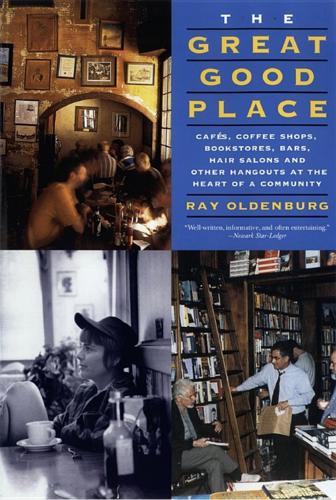
The Great Good Place: Cafes, Coffee Shops, Bookstores, Bars, Hair Salons, and Other Hangouts at the Heart of a Community
by
Ray Oldenburg
Published 17 Aug 1999
The new interest that the middle-class husband took in his wife contributed mightily to his own domestication. Whereas industrialization separated the place of work from the place of residence and took the father out of the home, he is not nearly as removed from domestic responsibility as many feminists and child developmentalists suggest. While parenting is largely mothering, Margaret Mead’s observations are also true: “In all the known history of civilization, never have fathers taken as much care of their little children as in the United States today. Nor have mothers had as much companionship from their chosen mates in the kitchen and in the nursery.”25 The problem is not with a husband and father who is shirking his duty.
…
The ultimate effect, however, is not divisive. Sexually segregated third places support the heterosexual relationships of mates in several important ways. Among those who currently enjoy it, third place association reduces the dangerous insularity of modern marriage, a condition once described by the late Margaret Mead: each spouse is supposed to be all things to the other. They’re supposed to be good in bed, and good out of it. Women are supposed to be good cooks, good mothers, good wives, good skiers, good conversationalists, good accountants. Neither person is supposed to find any sustenance from anybody else.31 Regular association with enjoyable people in relaxed social gatherings reduces the pressure Mead described.
…
Hutton Webster, Primitive Secret Societies (New York: Octagon, 1968), Reprint of 1932 ed. Chapter 1. 19. Roubin, op. cit. 20. Ibid. 21. Charles E. Hooper, The Country House (New York: Doubleday, Page & Co., 1905). 22. Gail Fullerton, Survival in Marriage (Hinsdale, Illinois: Dryden, 1977), 215. 23. Ibid. 24. Ibid. 25. Margaret Mead, “The American Family” in ed. Huston Smith, The Search for America (Englewood-Cliffs, New Jersey: Prentice-Hall, 1959), 119. 26. Bert N. Adams, The Family (New York: Harcourt, Brace, Jovanovich, 1971), 4th ed., 354. 27. Ibid., 360. 28. Paul C. Glick, “How American Families are Changing,” American Demographics (January 1984), 21–25. 29.
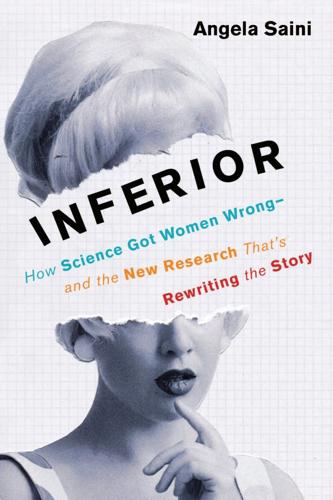
Inferior: How Science Got Women Wrong-And the New Research That's Rewriting the Story
by
Angela Saini
Published 29 May 2017
Though much has been learned it is only fair to state that these differences are still incompletely known.” The implications of this change of thinking were spectacular. The entire notion of what it meant to be a woman or a man was up for grabs. Researchers in other fields began to explore the boundaries of sexual and gender identity. Cultural anthropologist Margaret Mead, for example, started writing at about the same time about masculine and feminine personalities, and how culture rather than biology might be influencing which ones people had. Studying Samoan communities in 1949, she wrote, “The Samoan boy is not over pressured into displays of manhood, and the girl who is ambitious and managing has plenty of outlets in the bustling, organised life of the women’s groups.”
…
Sexing the Body: Gender Politics and the Construction of Sexuality. New York: Basic Books, 2000. Zondek, Bernhard. “Mass Excretion of Oestrogenic Hormone in the Urine of the Stallion.” Nature 133 (1934): 209–10. Evans, Herbert M. “Endocrine Glands: Gonads, Pituitary, and Adrenals.” Annual Review of Physiology 1 (1939): 577–652. Sanday, Peggy Reeves. “Margaret Mead’s View of Sex Roles in Her Own and Other Societies.” American Anthropologist 82, no. 2 (1980): 340–48. Coates, J. M., and J. Herbert. “Endogenous Steroids and Financial Risk Taking on a London Trading Floor.” Proceedings of the National Academy of Sciences USA 105, no. 16 (2008): 6167–72. Cueva, Carlos, et al.

Scary Smart: The Future of Artificial Intelligence and How You Can Save Our World
by
Mo Gawdat
Published 29 Sep 2021
The wisdom and positivity that you kindly share might open the eyes of others to something they may have missed and turn the tone of the conversation positive. That one positive conversation might lead to more kindness, more respect, and that could be the one thing we need to change the tone of our whole world. Never, ever underestimate the impact of one good deed. With you joining us, we can all make it happen. As Margaret Mead, the renowned American cultural anthropologist, author and speaker, famously said: ‘Never underestimate the power of a small group of committed people to change the world. In fact, it’s the only thing that ever has.’1 When it comes to welcoming this new, artificially intelligent, non-biological being into our lives, it will always, always come down to one last opinion, one last comment, one last social media post to tilt the scale.
…
Snow, Jackie (2016). ‘Rangers Use Artificial Intelligence to Fight Poachers’, National Geographic [online]. Available at: www.nationalgeographic.com/animals/article/paws-artificial-intelligence-fights-poaching-ranger-patrols-wildlife-conservation I Saved the World Today 1. This quote is popularly attributed to Margaret Mead, first by Donald Keys in his 1982 book Earth at Omega: Passage to Planetization 2. ‘What Happens in the Heart of an Unloved Child’, Exploring Your Mind (2018) [online]. Available at: exploringyourmind.com/what-happens-in-the-heart-of-an-unloved-child 3. Streep, Peg (2018). ’12 Wrong Assumptions an Unloved Daughter Makes About Life’, Psychology Today [online].
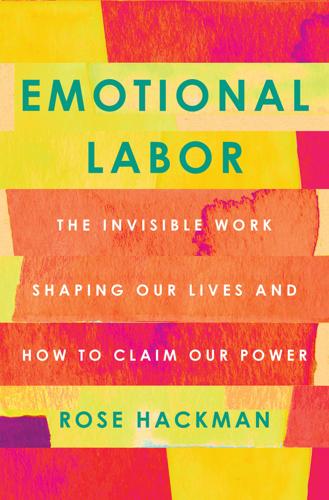
Emotional Labor: The Invisible Work Shaping Our Lives and How to Claim Our Power
by
Rose Hackman
Published 27 Mar 2023
Doing this might even move us beyond justice and toward emotional freedom. NINE Radical Love in a New World EMPATHY In his 1980 memoir, Fearfully and Wonderfully Made, the late British physician Paul Brand recalled attending a lecture by the great American anthropologist Margaret Mead.1 Describing Mead’s interaction with her audience, Brand, a medical pioneer in the field of leprosy, wrote: “[Margaret Mead] asked the question, ‘What is the earliest sign of civilization?’ A clay pot? Iron? Tools? Agriculture? No, she claimed. To her, evidence of the earliest true civilization was a healed femur, a leg bone, which she held up before us in the lecture hall.

From Counterculture to Cyberculture: Stewart Brand, the Whole Earth Network, and the Rise of Digital Utopianism
by
Fred Turner
Published 31 Aug 2006
Over the two decades following World War II, such claims found a home in massive military research projects; in a variety of academic disciplines, including management theory, clinical psychology, political science, biology, and ecology; and ultimately in the urban renewal projects of Lyndon Johnson’s Great Society.50 As Katherine Hayles and Steve Heims have shown, cybernetics’s migration into the social and, to some extent, the physical and biological sciences was driven in large part by the Macy Conferences.51 Sponsored by the Macy Foundation in the late 1940s and early 1950s, these meetings brought together biologists, physicists, and mathematicians, including cyberneticians such as Arturo Rosenblueth and Warren McCulloch, psychiatrists such as Ross Ashby, and sociologists and anthropologists such as Gregory Bateson and Margaret Mead. Over time, the Macy Conferences helped refine a number of cybernetic concepts, including the relationship T h e S h i ft i n g P o l i t i c s o f t h e C o m p u t at i o n a l M e t a p h o r [ 27 ] between a system and its observers and the nature of feedback. They also sent individual participants back to their home disciplines with a deep systems orientation toward their work and a habit of deploying the informational and systems metaphors.
…
Within von Foerster’s vision and later, within the work of a number of other cyberneticians, observer and system were inseparable. Chronologically, Gregory Bateson belonged to the first wave of cybernetics. In 1942, not long after carrying out field work in the South Pacific and marrying fellow anthropologist Margaret Mead, he attended a meeting in New York City convened by the Macy Foundation with an eye to discussing hypnosis and conditioned reflexes. There he met Warren McCulloch and Arturo Rosenblueth, and he heard Rosenblueth present the concept of feedback that he had lately developed with Norbert Wiener and Julian Bigelow.
…
The conferences were jointly sponsored by Shell, AT&T, and Volvo. For each conference, Brand reached out to his extended network of contacts and sought to bring them together with representatives of the sponsoring corporations. Regular participants included Mary Catherine Bateson (anthropologist daughter of Gregory Bateson and Margaret Mead), Peter Warshall (ecologist and steady contributor to the Whole Earth publications), and Chilean neurobiologist Francisco Varela—all longtime friends of Brand— as well as MIT’s Marvin Minsky (head of the AI Lab) and Seymour Papert (a researcher at the Media Lab) and senior executives from the sponsoring corporations.

Wealth and Poverty: A New Edition for the Twenty-First Century
by
George Gilder
Published 30 Apr 1981
Partly a result of greater aggressiveness and larger physical stature, partly an expression of the male need to dominate (perhaps based on the neurophysiological demands of the sex act itself), males in all societies ever studied by anthropologists overwhelmingly outnumber women in positions of leadership and hold authority in relations with females. Steven Goldberg’s rigorously argued book The Inevitability of Patriarchy, described by Margaret Mead as “flawless in its presentation of the data,”16 refutes every anthropological claim that there has ever existed in human affairs either a society where women rule or a society where final authority resides with them in male-female relations. Just as important as these biological differences are differences in familial roles.
…
The contributors to my earlier analyses have been acknowledged in earlier works. Let me merely say in passing that this book could not exist without the earlier works and previous researches, and that my immersion in the world of economics was made far more fruitful by my previous immersions in the literature of anthropology and social theory, from Margaret Mead’s Male and Female to Steven Goldberg’s The Inevitability of Patriarchy. Nonetheless, this book gained its special reach and character from a study of economics that began ten years ago with Milton Friedman’s Capitalism and Freedom and led over the years through the works of Schumpeter and Keynes into what has been described with some felicity as “the supply-side” school of contemporary economists.
…
Freeman, “Discrimination in the Academic Marketplace,” in Thomas Sowell, ed., American Ethnic Groups, pp. 167–202, and Statistical Data in ibid, pp. 257, 278–291, and passim. 13 Garfinkel and Haveman, Earnings Capacity, p. 32 and passim. 14 Thomas Sowell, “The Controversy over Black I.Q.s,” New York Times Magazine, March 27, 1977, pp. 57–58. 15 Eleanor Emmons Maccoby and Carol Nagy Jacklin, The Psychology of Sex Differences (Stanford, CA: Stanford University Press, 1974), pp. 242–243. 16 Steven Goldberg, The Inevitability of Patriarchy, rev. edition (London: Temple Smith, 1977); U.S. edition (New York: William Morrow, 1974). The Margaret Mead review appeared in Redbook (February 1974). 17 Computed from U.S. Bureau of the Census, “Census of Population: 1970. MARITAL STATUS,” table 9, pp. 227–252. 18 Glazer, Affirmative Discrimination: Ethnic Inequality and Public Policy, with a new introduction by the author (New York: Basic Books, 1978), p. 63.
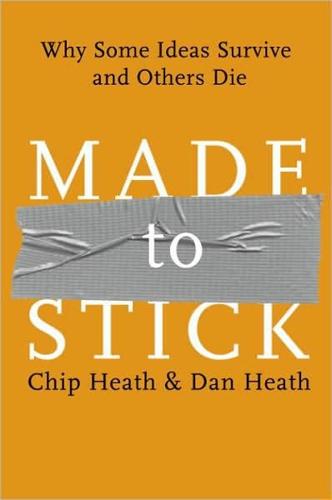
Made to Stick: Why Some Ideas Survive and Others Die
by
Chip Heath
and
Dan Heath
Published 18 Dec 2006
Peters, the principal of Beverly Hills High School, announced today that the entire high school faculty will travel to Sacramento next Thursday for a colloquium in new teaching methods. Among the speakers will be anthropologist Margaret Mead, college president Dr. Robert Maynard Hutchins, and California governor Edmund ‘Pat’ Brown.” The budding journalists sat at their typewriters and pecked away at the first lead of their careers. According to Ephron, she and most of the other students produced leads that reordered the facts and condensed them into a single sentence: “Governor Pat Brown, Margaret Mead, and Robert Maynard Hutchins will address the Beverly Hills High School faculty Thursday in Sacramento … blah, blah, blah.”
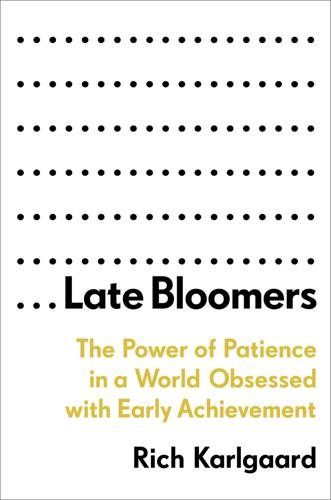
Late Bloomers: The Power of Patience in a World Obsessed With Early Achievement
by
Rich Karlgaard
Published 15 Apr 2019
Because the fact is, when it comes to cultural norms, breaking up is hard to do. We are social creatures. It’s the single most culturally significant thing about our species. Our sense of ourselves is grounded and shaped by our social connections and affiliations. Evolutionarily speaking, we are, as a species, “a people.” As Jane Howard, biographer of the anthropologist Margaret Mead, put it, “Call it a clan, call it a network, call it a tribe, call it a family: Whatever you call it, whoever you are, you need one.” In one of the most influential studies on the neuroscience behind group conformity, scientist Gregory Berns and his team of researchers at Emory University examined the physiological effects of deviation from a norm by using fMRI to scan participants’ brains.
…
“Given the ubiquity and strength”: Robert Cialdini quoted in Nolan et al., “Normative Social Influence Is Underdetected.” Normative thinking creates the belief: Todd Rose, The End of Average: How We Succeed in a World That Values Sameness (New York: HarperCollins, 2015). “Call it a clan, call it a network”: Jane Howard, Margaret Mead: A Life (New York: Ballantine Books, 1989). physiological effects of deviation: Gregory S. Berns et al., “Neurobiological Correlates of Social Conformity and Independence During Mental Rotation,” Biological Psychiatry 58, no. 3 (2005): 245–53. See also Mirre Stallen, Ale Smidts, and Alan Sanfey, “Peer Influence: Neural Mechanisms Underlying In-Group Conformity,” Frontiers in Human Neuroscience 7 (2013): 50; Mirre Stallen and Alan G.
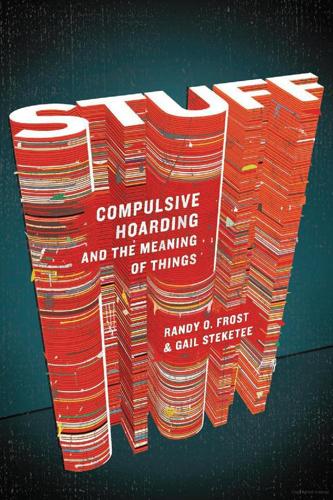
Stuff: Compulsive Hoarding and the Meaning of Things
by
Gail Steketee
and
Randy Frost
Published 19 Apr 2010
In some early civilizations, possessions were seen as part of an individual's "life spirit" or self. Anthropologists have proposed this as the basic psychological process for ownership, which can be refined by cultural factors. Among the Manusians, an island tribe in Papua New Guinea described by Margaret Mead in 1930, this belief was readily apparent. They held possessions to be sacred and grieved for things lost as they would for lost loved ones. In contrast, the Tasaday of the Philippines, an isolated culture first discovered in the early 1970s, placed little value on possessions, perhaps because they needed few of them to survive.
…
Randy thanks his wife, Sue, for her support throughout the writing of this book, and his children, Erica and Olivia, whose interest and enthusiasm for this work keep it going. Gail gives thanks and much credit to her husband, Brian, who patiently tolerated the endless hours she spent closeted away in her study writing. She also thanks her family and friends, who help keep her sane and focused on what matters in this world. * * * *Interestingly, Margaret Mead observed that about the time children are developing an understanding of the word "mine," they are able to walk and thus pose a menace to other people's things. In that context, they may be more likely to be punished for possession-related transgressions and as a result learn the meaning of ownership.
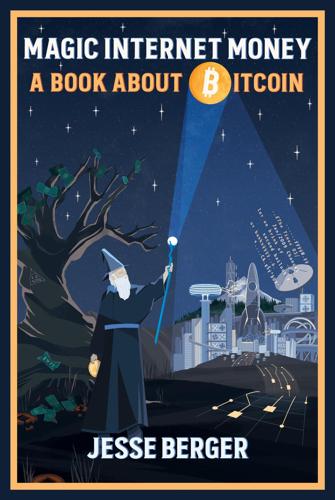
Magic Internet Money: A Book About Bitcoin
by
Jesse Berger
Published 14 Sep 2020
As the first and most robust system of its kind, built to continue running indefinitely, it will take more time before a conclusion can be definitively drawn on this topic. 11.7 On Apathy & Atlas “Never doubt that a small group of thoughtful, committed, citizens can change the world. Indeed, it is the only thing that ever has.” Margaret Mead, Cultural Anthropologist A guiding philosophy of Bitcoin’s success to date, if it can be called that, has been its adversarial approach. The most ardent Bitcoin proponents are defense-oriented, anticipating ways it may need to survive and adapt so it can renew itself time and again, like a phoenix rising from the ashes.

The Information: A History, a Theory, a Flood
by
James Gleick
Published 1 Mar 2011
A host of sciences were coming of age all at once—so-called social sciences, like anthropology and psychology, looking for new mathematical footing; medical offshoots with hybrid names, like neurophysiology; not-quite-sciences like psychoanalysis—and McCulloch invited experts in all these fields, as well as mathematics and electrical engineering. He instituted a Noah’s Ark rule, inviting two of each species so that speakers would always have someone present who could see through their jargon.♦ Among the core group were the already famous anthropologist Margaret Mead and her then-husband Gregory Bateson, the psychologists Lawrence K. Frank and Heinrich Klüver, and that formidable, sometimes rivalrous pair of mathematicians, Wiener and von Neumann. Mead, recording the proceedings in a shorthand no one else could read, said she broke a tooth in the excitement of the first meeting and did not realize it till afterward.
…
interrupted Wiener.♦ “—and of course they are not.” Wiener wondered whether anyone had tried a similar calculation for “compression for the eye,” for television. How much “real information” is necessary for intelligibility? Though he added, by the way: “I often wonder why people try to look at television.” Margaret Mead had a different issue to raise. She did not want the group to forget that meaning can exist quite apart from phonemes and dictionary definitions. “If you talk about another kind of information,” she said, “if you are trying to communicate the fact that somebody is angry, what order of distortion might be introduced to take the anger out of a message that otherwise will carry exactly the same words?”
…
And language is in constant flux. Heinz von Foerster, a young physicist from Vienna and an early acolyte of Wittgenstein, wondered how the degree of redundancy in a language might change as the language evolved, and especially in the transition from oral to written culture. Von Foerster, like Margaret Mead and others, felt uncomfortable with the notion of information without meaning. “I wanted to call the whole of what they called information theory signal theory,” he said later, “because information was not yet there. There were ‘beep beeps’ but that was all, no information. The moment one transforms that set of signals into other signals our brain can make an understanding of, then information is born—it’s not in the beeps.”♦ But he found himself thinking of the essence of language, its history in the mind and in the culture, in a new way.
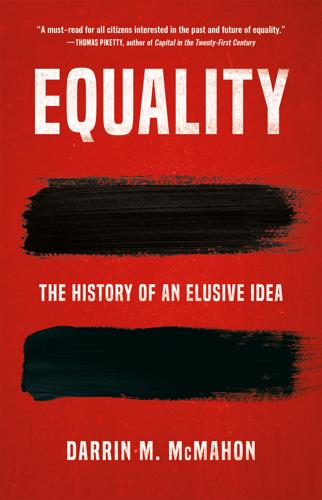
Equality
by
Darrin M. McMahon
Published 14 Nov 2023
At the very least it has prompted an orgy of speculation about the sex lives of our prehistoric ancestors, with some popular writers going so far as to fantasize about the swinging Stone Age—a time, they suggest, of multiple partners and multiple orgasms before monogamy, jealousy, and the repressive patriarchal pair-bond set in. There is a venerable tradition of thinking about life in paradise before the Fall as unconstrained by later taboos. And modern anthropologists—from Enlightenment accounts of sensual Pacific Islanders to the twentieth-century fieldwork of Bronisław Malinowski and Margaret Mead—have sometimes echoed it in their reports of the “sexuality of savages.” The more recent fantasies of sex in the Stone Age fall into that tradition. It is surely fun to think of the egalitarian communes of the Paleolithic as places not just of freedom and equality, but of free love. And by putting bonobo-like women more on top, we would be giving a whole new meaning to the reverse dominance hierarchy.37 But the truth is that when it comes to family arrangements, human beings are neither bonobos nor chimpanzees (still less gorillas).
…
The project of recovery and celebration of identity first advocated by Black nationalists and the movement for Black Power was taken up by women and homosexuals and in turn by many other groups, who likewise celebrated their uniqueness. In effect, it was a rejection of a model of universal assimilation in a world coded male and white, the founding identity of identity politics, though too seldom acknowledged as such. The (white) anthropologist Margaret Mead came to see this in 1971 in a famous debate with the (Black) novelist James Baldwin. A onetime advocate of color-blind assimilation in the United States, Mead, at Baldwin’s insistence, was pressed to acknowledge that the “integration position was a one-sided one”: Mead: [The] offer that well-intentioned white people made is: “If you will be like us—” Baldwin: “You could join our clubs and come to our houses—” Mead: “And we’ll pretend that you’re just like us.”
…
Sean Wilentz (New York: Hill and Wang, 1995), 7; Siep Stuurman, The Invention of Humanity: Equality and Cultural Difference in World History (Cambridge, MA: Harvard University Press, 2017), 512–520, 561. 61. King, Speech Before the Fourth Constitutional Convention of the AFL-CIO, December 11, 1961, in Testament of Hope, 206–207. 62. James Baldwin and Margaret Mead, A Rap on Race (New York: J. B. Lippincott, 1971), 11–12. The encounter is analyzed astutely in Mark Anderson, From Boas to Black Power: Racism, Liberalism, and American Anthropology (Stanford, CA: Stanford University Press, 2019), 1–7. 63. Margaret Wright, “I Want the Right to Be Black and Me,” in Black Women in White America: A Documentary History, ed.
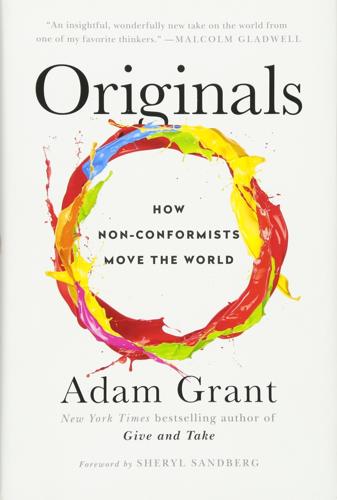
Originals: How Non-Conformists Move the World
by
Adam Grant
Published 2 Feb 2016
Errors fell from 37 percent to just 5.5 percent. “The presence of a supporting partner depleted the majority of much of its pressure,” Asch wrote. Merely knowing that you’re not the only resister makes it substantially easier to reject the crowd. Emotional strength can be found even in small numbers. In the words of Margaret Mead, “Never doubt that a small group of thoughtful citizens can change the world; indeed, it’s the only thing that ever has.” To feel that you’re not alone, you don’t need a whole crowd to join you. Research by Sigal Barsade and Hakan Ozcelik shows that in business and government organizations, just having one friend is enough to significantly decrease loneliness.
…
Smith, “Culture and Conformity: A Meta-Analysis of Studies Using Asch’s (1952b, 1956) Line Judgment Task,” Psychological Bulletin 119 (1996): 111–37. “The first follower”: Derek Sivers, “How to Start a Movement,” TED Talks, April 2010, www.ted.com/talks/derek_sivers_how_to_start_a_movement/transcript?language=en. “Never doubt that a small group”: Margaret Mead, The World Ahead: An Anthropologist Anticipates the Future, ed. Robert B. Textor (New York: Berghahn Books, 2005). just having one friend: Sigal G. Barsade and Hakan Ozcelik, “Not Alone But Lonely: Work Loneliness and Employee Performance,” working paper (2011). They were treated so poorly: Robert I.
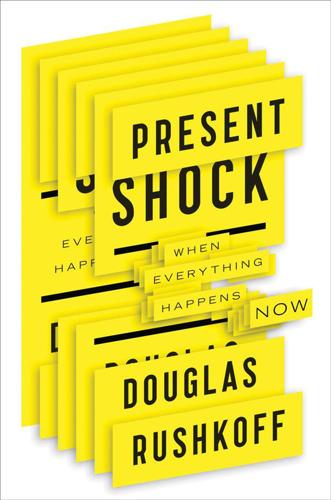
Present Shock: When Everything Happens Now
by
Douglas Rushkoff
Published 21 Mar 2013
Wiener saw his new understandings of command and control being used to make better artificial limbs for wounded veterans—fingers that could feed back data about the things they were touching or holding. He wanted to use feedback to make better machines in the service of people. Social scientists, from psychologist Gregory Bateson to anthropologist Margaret Mead, saw in these theories of feedback a new model for human society. Instead of depending so absolutely on RAND’s predictive gamesmanship and the assumption of selfishness, cybernetics could model situations where the reality of events on the ground strayed from the plan. Qualitative research, polling, and focus groups would serve as the feedback through which more adaptive styles of communication and—when necessary—persuasion could be implemented.
…
See the website for the company at http://valvesoftware.com. 7. http://boingboing.net/2012/04/22/valve-employee-manual-describe.html. 8. Ibid. 9. László Méro, Moral Calculations (New York: Springer-Verlag, 1998). 10. See my book Life Inc. (New York: Random House, 2009). 11. Archibald MacLeish, “Bubble of Blue Air,” New York Times, December 25, 1968, p. 1. 12. Lenora Foerstal and Angela Gilliam, Confronting Margaret Mead: Scholarship, Empire, and the South Pacific (Philadelphia: Temple University Press, 1992), 126–27. 13. Steven Pinker, quoted in Nick Gillespie, “Hayek’s Legacy,” Reason, January 2005. 14. James Surowiecki, quoted in Gillespie, ibid. 15. See Manuel De Landa, War in the Age of Intelligent Machines (Cambridge, MA: MIT Press, 1992). 16.
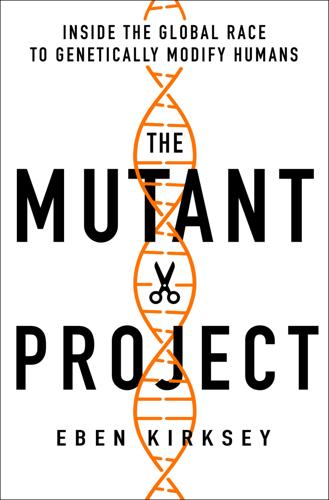
The Mutant Project: Inside the Global Race to Genetically Modify Humans
by
Eben Kirksey
Published 10 Nov 2020
Panning out, I also explored questions that could have profound implications for the future of our species: Should parents be allowed to choose the genetic makeup of their children? How much can we actually change about the human condition by tinkering with DNA? * * * As a cultural anthropologist, I have often found myself opposing biologists in debates about human nature. Ever since Margaret Mead wrote her 1928 classic, Coming of Age in Samoa, anthropologists have argued that a person’s life is shaped “by the social environment in which each is born and raised” rather than genetic heredity alone.1 Anthropologists have recently joined other progressive thinkers to imagine how science has enabled new experimental possibilities for human beings.2 Now we are studying how the human social environment has been shaped by synthetic chemistry, smartphones, the internet, and biotechnology.
…
Above all, I am grateful to the prospective parents who signed up for Dr. He’s study and shared their stories with me. I dedicate this book to Lulu and Nana. May we all continue to learn from your lived experience, even though you were born into conditions that you did not choose. NOTES PROLOGUE: THE WORLD ON NOTICE 1 Margaret Mead, Coming of Age in Samoa (New York: Morrow, 1928), 4. 2 Donna Haraway, “Manifesto for Cyborgs,” Socialist Review 80 (1985): 65–108. 3 Meaghan O’Keefe et al., “‘Editing’ Genes,” American Journal of Bioethics 15, no. 12 (2015): 3–10. 4 George van Ness Dearborn, “A Case of Congenital General Pure Analgesia,” Journal of Nervous and Mental Disease 75, no. 6 (1932): 612–15. 5 Eileen Hunt Botting, “What Are the Rights of the Genetically Modified Child?
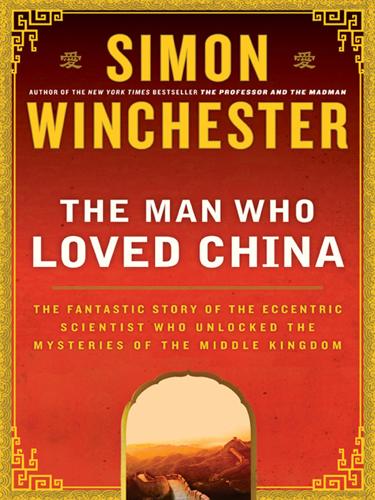
The Man Who Loved China: The Fantastic Story of the Eccentric Scientist Who Unlocked the Mysteries of the Middle Kingdom
by
Simon Winchester
Published 1 Jan 2008
The consul, Alwyn Ogden, was astonished at his ability, too, and highly impressed. Needham spent the late afternoon unpacking, listening to the crows cawing in the consulate garden, and watching the sun inch down over the far Tibetan hills, imagining himself—as he wrote the next morning in a long letter to his old friend Margaret Mead, the anthropologist—in the Cambridgeshire village of Duxford, in the garden of the local vicarage. Throughout his subsequent life in China he would make comparisons like this, comparing obscure places in Yunnan and Hubei and Xinjiang to beloved, cozy places in the country he had left behind, or else to spots—usually in either America or France—that he especially liked.
…
In any case he probably suspected that the conceit added some sense of fine romance to his writings—though some of his comparisons do seem improbable: in comparing the city of Kunming to the village of Duxford he was likening a city of almost 1 million to a rural community of no more than sixty. He recorded with fine detail his impressions of his first thirty-six hours in China, in letters to Margaret Mead and Lu Gwei-djen in America and to Dorothy—who was working in the biochemical laboratory in Cambridge. He told them all how he went for a stroll that first evening—the hills on the skyline in all directions seeming to him like the west of Scotland—and how he was charmed by the friendliness of everyone he met.
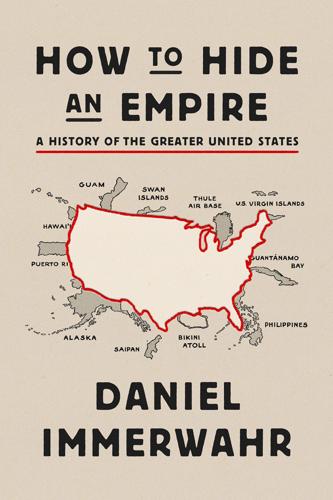
How to Hide an Empire: A History of the Greater United States
by
Daniel Immerwahr
Published 19 Feb 2019
FORTRESS AMERICA inescapable daily presence: On this, I have learned much from Alvita Akiboh and her article “Pocket-Sized Imperialism: U.S. Designs on Colonial Currency,” DH 41 (2017): 874–902. coverage in The New York Times: New York Times Index: Annual Cumulative Volume Year 1930 (New York, 1931). “brown Polynesian people,” etc.: Margaret Mead, Coming of Age in Samoa (1928; New York, 2001), 8. Mead’s silence on the colonial aspects of her subject is discussed in Derek Freeman, Margaret Mead and Samoa: The Making and Unmaking of an Anthropological Myth (Cambridge, MA, 1983). Mead’s book contains only three instances of the term American Samoa (two of which are parenthetical), one colony (a classical reference, though), one navy, and no mentions of territory, empire, or imperialism.
…
Scanning the library shelves, it’s easy to find high-profile books from the interwar period depicting Native Americans and the western frontier (Little House on the Prairie is one), but prominent treatments of overseas territories are rare. The only one with a truly large audience was Coming of Age in Samoa (1928) by the anthropologist Margaret Mead, a wildly popular ethnography that featured frank discussions of Samoan sexuality and launched Mead’s career as one of the most famous scholars in the country. Yet Mead wrote of “Samoa,” not “American Samoa” (the colony’s legal name), and avoided mention of colonies, territories, and empires altogether.

How the Mind Works
by
Steven Pinker
Published 1 Jan 1997
It’s Machiavellian, and unless a student has a moral framework already in place, we could be producing social monsters by teaching this. It really fits in very nicely with the yuppie ‘me first” ethos.” Entire scholarly societies joined in the fun, passing votes on empirical issues that one might have thought would be hashed out in the lab and the field. Margaret Mead’s portrayal of an idyllic, egalitarian Samoa was one of the founding documents of the SSSM, and when the anthropologist Derek Freeman showed that she got the facts spectacularly wrong, the American Anthropological Association voted at its business meeting to denounce his finding as unscientific.
…
But what about the claims of native informants that they just don’t have one of our emotions? Do our emotions seem like mad pain to them? Probably not. The Utku-Inuits’ claim that they do not feel anger is belied by their behavior: they recognize anger in foreigners, beat their dogs to discipline them, squeeze their children painfully hard, and occasionally get “heated up.” Margaret Mead disseminated the incredible claim that Samoans have no passions—no anger between parents and children or between a cuckold and a seducer, no revenge, no lasting love or bereavement, no maternal caring, no tension about sex, no adolescent turmoil. Derek Freeman and other anthropologists found that Samoan society in fact had widespread adolescent resentment and delinquency, a cult of virginity, frequent rape, reprisals by the rape victim’s family, frigidity, harsh punishment of children, sexual jealousy, and strong religious feeling.
…
The free-love communes of nineteenth-century America collapsed from sexual jealousy and the resentment of both sexes over the leaders’ habit of accumulating young mistresses. The socialist Utopias of the twentieth century became repressive empires led by men who collected Cadillacs and concubines. In anthropology, one South Sea island paradise after another has turned out to be nasty and brutish. Margaret Mead said that nonchalant sex made the Samoans satisfied and free of crime; it turned out that the boys tutored one another in rape techniques. She called the Arapesh “gentle”; they were headhunters. She said that the Tshambuli reversed our sex roles, the men wearing curls and makeup. In fact the men beat their wives, exterminated neighboring tribes, and treated homicide as a milestone in a young man’s life which entitled him to wear the face paint that Mead thought was so effeminate.
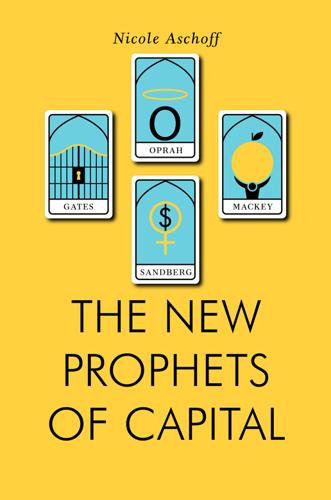
The New Prophets of Capital
by
Nicole Aschoff
Published 10 Mar 2015
See Kathi Weeks in The Problem with Work on the power of the demand. 4 The Gates Foundation and the Rise of Philanthrocapitalism “Never doubt that a small group of thoughtful, committed citizens can change the world. Indeed, it is the only thing that ever has.” Cultural anthropologist Margaret Mead may or may not have said this, but it is Melinda Gates’s favorite quote, and it aptly sums up the philosophy of the Bill and Melinda Gates Foundation. The Gateses are changing the world. Since its founding in 1997, the Gates Foundation has transformed the medical and research fields for diseases like malaria and pneumonia and is at the center of an education reform movement in the United States.

Armed Humanitarians
by
Nathan Hodge
Published 1 Sep 2011
In a letter published in the Nation in December 1919, Boas wrote, “A person … who uses science as a cover for political spying, who demeans himself to pose before a foreign government as an investigator and asks for assistance in his alleged researches in order to carry on, under this cloak, his political machinations, prostitutes science in an unpardonable way and forfeits the right to be classed as a scientist.”9 According to David Price, a historian of anthropology and a critic of the Human Terrain System, the Boas affair “marked the beginning of American anthropology’s public debates about the propriety of mixing anthropology with military and intelligence operations.”10 During World War II, however, many of those professional concerns were set aside as anthropologists joined in the war effort. Boas’s most famous student, Margaret Mead, contributed to the National Research Council’s Committee on Food Habits, where she applied anthropological methods to food distribution and preparation in war-torn countries. She also published And Keep Your Powder Dry: An Anthropologist Looks at America, a patriotic volume on the American national character.11 Mead’s husband, the anthropologist Gregory Bateson, served with distinction in the Office of Strategic Services, the precursor to the CIA.12 In the one and a half decades after World War II, the military and academia once again became estranged.
…
Windshield Ethnographers 1 Alissa Rubin and Mudhafer al-Husaini, “Baghdad Blast Kills Four Americans,” New York Times, June 25, 2008. 2 Montgomery McFate, “Iraq: The Social Context of IEDs,” Military Review, May–June 2005. 3 Ibid. 4 Noah Shachtman, “Army Anthropologist’s Controversial Culture Clash,” Wired, October 2008. 5 Jacob Kipp, Lester Grau, Karl Prinslow, and Captain Dan Smith, “The Human Terrain System: A CORDS for the 21st Century,” Military Review, September–October 2006. 6 Montgomery McFate, “Anthropology and Counterinsurgency: The Strange Story of Their Curious Relationship,” Military Review, March–April 2005. 7 Ibid. 8 David Price, Anthropological Intelligence: The Deployment and Neglect of American Anthropology in the Second World War (Durham, N.C.: Duke University Press, 2008), pp. 9–10. 9 Ibid., pp. 11–13. 10 Ibid., p. 14. 11 See “National Character,” a subsection of “Margaret Mead: Human Nature and the Power of Culture,” Library of Congress exhibition, www.loc.gov/exhibits/mead/oneworld-char.html. 12 Price, Anthropological Intelligence, p. 239. 13 Irving Louis Horowitz, ed., The Rise and Fall of Project Camelot: Studies in the Relationship between Social Science and Practical Politics (Cambridge, Mass.: MIT Press, 1967), p. 47. 14 Ibid., p. 51. 15 Seymour Deitchman, The Best-Laid Schemes: A Tale of Social Research and Bureaucracy (Cambridge, Mass.: MIT Press, 1976), p. 16. 16 Ibid., pp. 169–70. 17 McFate, “Anthropology and Counterinsurgency.” 18 George Packer, “Knowing the Enemy: Can Social Scientists Redefine the ‘War on Terror’?”
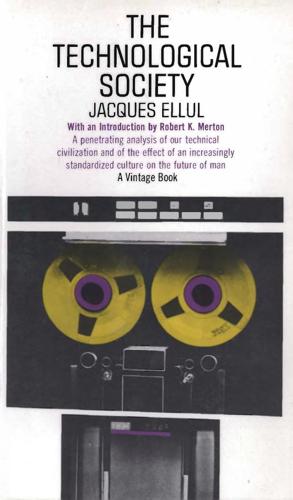
Ellul, Jacques-The Technological Society-Vintage Books (1964)
by
Unknown
Published 7 Jun 2012
Even the most classically oriented sociologists today recognize that the impact of techniques is producing a collapse of the nonWestem civilizations. This involves the collapse of cultural as well as of economic forms, and of the traditional psychological and sociological structures. UNESCO has been greatly preoccupied with these questions, and both the Bulletin of the Social Sciences and the reports of Dr. Margaret Mead strike an alarming note. Investigators find, in effect, that it is easy to transfer technical procedures, but that the elabora tion of sociological and psychological methods of controlling them is slow, difficult, and laborious. 12 2 ) THE CHARACTEROLOGY OF TECHNIQUE One is always running up against the simple-minded tendency to say, as Charles F.
…
Every culture must be considered as a whole. The transformation of a given element through the effect of technique produces shocks in all areas. All the peoples of the world today live in a cultural breakdown provoked by the conflicts and the internal strife re sulting from technique. Over and above this— as Margaret Mead points out— since every human being incorporates in his own per son the cultural environment in which he lives, its disagreements and incoherences are to be met with again in each individual personality. Moreover, we are poorly equipped to respond to this cultural collapse. We have few studies of the mentality and the needs of these peoples, and even fewer studies of their psychological reac tions to technique.
…
The em phasis again is on insuring the happiness of the individual through adaptation. The assumption is that the individual will be happy when he is synchronized with his trade. Soviet orientation toward vocational guidance is identical with certain recent tendencies which have appeared in America. In a report to UNESCO on technical education and vocational guid ance, Margaret Mead wrote: “Since education must respond, not to the present but to the future needs of society, it is necessary to forecast constantly and as far as possible in advance the evolution of vocational structures.” This can only mean that the individual must be educated and adapted in advance to his future job as a function of anticipated technical progress.
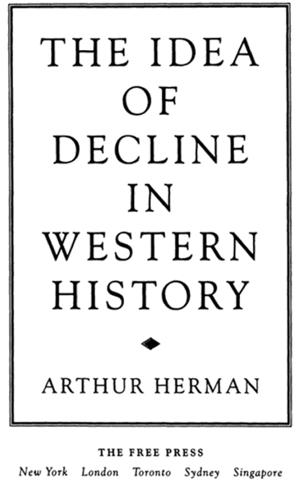
The Idea of Decline in Western History
by
Arthur Herman
Published 8 Jan 1997
As race theory receded from the liberal purview in the twentieth century, anthropologists began to turn to Freud’s theories for a reappraisal of the distinction between civilized and primitive cultures. A new generation of anthropologists—Franz Boas, Margaret Mead, and Ruth Benedict—dedicated themselves to elevating the cultural status of primitive societies vis àvis their “advanced” counterparts (now carefully hedged within quotation marks). Their field work revealed the deep similarities and affinities between the two, and it suggested that primitive peoples, in Romantic Orientalist fashion, often preserved the vitality and psychological health the civilized West had lost (the best example is Margaret Mead’s Coming of Age in Samoa).79 Civilization and Its Discontents was Freud’s last testament to the enlightened liberal society in which he was born and raised.
…
Gilman , “Sexology, Psychoanalysis, and Degeneration,” in Gilman and Chamberlain , eds., Degeneration , pp. 80-83; Gay , Freud: A Life for Our Time , pp. 48-49. 76 Quoted in Gay , Freud: A Life for Our Time , p. 412. 77 Gould , Ontogeny and Phylogeny . 78 Rieff , Freud , p. 219. 79 Derek Freeman , Margaret Mead and Samoa: Making and Unmaking of an Anthropological Myth (Cambridge, MA, 1983). 80 Freud , Civilization and Its Discontents , pp. 16-17. 81 Ibid., p. 19. 82 Ibid., p. 42. Chapter 5 1 Tuveson , Redeemer Nation ; Bloch , Visionary Republic . 2 George Berkeley , “Verses on the Prospect of Planting Arts and Learning in America,” quoted in Tuveson , Redeemer Nation , p. 94. 3 Hendrickson and Tucker , Empire of Liberty . 4 “Fourth of July address, 1821,” in Lefeber , ed., John Quincy Adams, pp. 42-44. 5 E.g., Federalist Papers , p. 144.
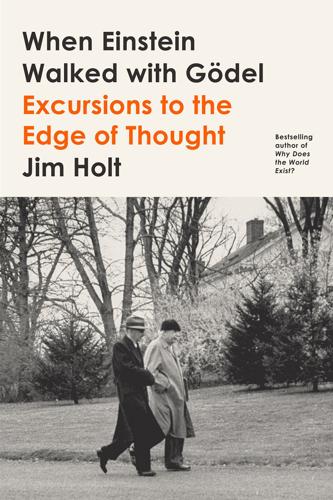
When Einstein Walked With Gödel: Excursions to the Edge of Thought
by
Jim Holt
Published 14 May 2018
I knew of his reputation as a “maverick” and “troublemaker”—labels that, despite his years with IBM, seemed well merited. What I wasn’t prepared for was the dazzling range of people he intersected with in the course of his career. Consider this partial listing of the figures that crop up in his memoir: Margaret Mead, Valéry Giscard d’Estaing, Claude Lévi-Strauss, Noam Chomsky, Robert Oppenheimer, Jean Piaget, Fernand Braudel, Claudio Abbado, Roman Jakobson, George Shultz, György Ligeti, Stephen Jay Gould, Philip Johnson, and the empress of Japan. Nor did I realize that Mandelbrot’s casually anarchic ways at IBM were at least partly responsible for the advent of that bane of modern life, the computer password.
…
Evidently, knavishness and incompetence are not canonically conjugate variables. A more banal misuse of Heisenberg’s principle can be found in the social sciences. There the principle is often taken to mean that the very act of observing a phenomenon inevitably alters that phenomenon in some way; that is why, say, Margaret Mead could never know the sexual mores of the Samoans—her very presence on the island distorted what she was there to observe. Postmodern theorists like Stanley Aronowitz have invoked the uncertainty principle as proof of the unstable hermeneutics of subject-object relations, arguing that it undermines science’s claim to objectivity.
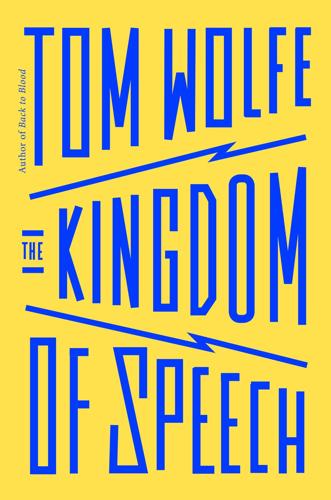
The Kingdom of Speech
by
Tom Wolfe
Published 30 Aug 2016
He maintained his mad pace and beat them into print—with one of the handful of popular books ever written on linguistics: Don’t Sleep, There Are Snakes, an account of his and his family’s thirty years with the Pirahã.147 It was dead serious in an academic sense. He loaded it with scholarly linguistic and anthropological reports of his findings in the Amazon. He left academics blinking…and nonacademics with eyes wide open, staring. The book broke free of its scholarly binding right away. Margaret Mead had her adventures among the Samoans, and Bronislaw Malinowski had his among the Trobriand Islanders. But Everett’s adventures among the Pirahã kept blowing up into situations too deadly to be written off as “adventures.” There were more immediate ways to die in the rainforests than anyone who had never lived there could possibly imagine.

City: A Guidebook for the Urban Age
by
P. D. Smith
Published 19 Jun 2012
It is a measure of the film’s influence that real-life Angelinos now refer to ‘Blade Runner’ enclaves, by which they mean run-down areas, with street traders and decaying buildings.46 Scott’s vision of a future city in which scientists have the god-like power to create genetically engineered robots (‘replicants’) while the streets remain filled with rubbish, the air is polluted and society is still riven by inequality, seems to many people more convincing than most utopias. Perhaps this is a failure of imagination. Or perhaps it is because, as Margaret Mead has said, Hell is always more convincing than Heaven.48 But in the future, cities will almost certainly develop at an uneven rate, just as they do today, with poverty and outmoded infrastructure existing alongside wealth and cutting-edge technology. As William Gibson – whose Neuromancer (1984) echoes Blade Runner’s future noir atmosphere – has said: ‘The future is already here.
…
London: Verso, 2010), 53–4. 45. Brian J. Robb, Counterfeit Worlds: Philip K. Dick on Film (London: Titan, 2006), 127. 46. Klein (2008), 97. 47. ‘Designing Black Rock City’ <http://www.burningman.com/whatisburningman/about_burningman/brc_growth.html> Accessed 8 December 2010. 48. Margaret Mead, ‘Towards more vivid utopias’, Science, 126 (1957), 958. 49. William Gibson, National Public Radio interview, Talk of the Nation (30 November 1999). 50. Arthur C. Clarke, The City and the Stars (1st 1956; repr. London: Gollancz, 2001), 16, 9. 51. Clarke (2001), 25. 52. Karl Marx, The Communist Manifesto, in Robert C.
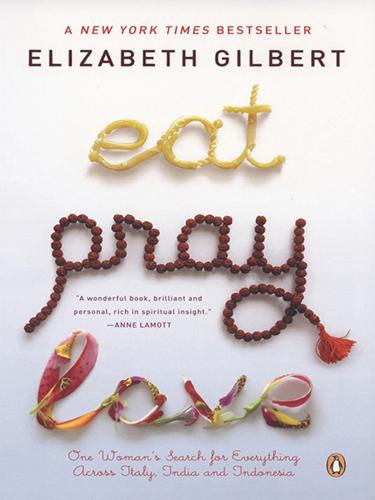
Eat, Pray, Love: One Woman's Search for Everything Across Italy, India and Indonesia
by
Elizabeth Gilbert
Published 1 Jan 2000
It has been estimated that a typical Balinese woman spends one-third of her waking hours either preparing for a ceremony, participating in a ceremony or cleaning up after a ceremony. Life here is a constant cycle of offerings and rituals. You must perform them all, in correct order and with the correct intention, or the entire universe will fall out of balance. Margaret Mead wrote about “the incredible busy-ness” of the Balinese, and it’s true—there is rarely an idle moment in a Balinese compound. There are ceremonies here which must be performed five times a day and others that must be performed once a day, once a week, once a month, once a year, once every ten years, once every hundred years, once every thousand years.
…
“I was furious at God that I was not born Balinese,” said the German photographer George Krauser after visiting Bali in the 1930s. Lured by reports of otherworldly beauty and serenity, some really A-list tourists started visiting the island—artists like Walter Spies, writers like Noël Coward, dancers like Claire Holt, actors like Charlie Chaplin, scholars like Margaret Mead (who, despite all the naked breasts, wisely called Balinese civilization on what it truly was, a society as prim as Victorian England: “Not an ounce of free libido in the whole culture.”) The party ended in the 1940s when the world went to war. The Japanese invaded Indonesia, and the blissful expatriates in their Balinese gardens with their pretty houseboys were forced to flee.

Whole Earth: The Many Lives of Stewart Brand
by
John Markoff
Published 22 Mar 2022
Brand spent several months making regular visits and conducting telephone interviews with scientists who had previously been involved with the CASBS, such as the University of California at Berkeley anthropologist Sherwood Washburn and Gregory Bateson, the British social scientist once married to Margaret Mead. More than a decade later, Brand’s brief intersection with both men would prove to have a defining impact on his thinking. By the end of the school year, he had a 3,100-word article titled “Fruits of a Scholar’s Paradise.” The piece gave a half dozen examples of collaborative social science as practiced at the Center.
…
Once inside the dome, with a high ceiling fifty or sixty feet overhead, the visitor would be guided through a maze of eight-foot-high curved panels presenting a stream of murals accompanied by localized looping soundscapes. In a peyote exhibit, there might be sounds from a ceremony: drumming, rattling, and singing. Stewart Udall’s or Margaret Mead’s voice might accompany another photograph. His idea was to complete the traveling exhibition first and then publish a book of the photographs. He imagined that he might persuade the Department of the Interior to cover the costs of travel in the United States and maybe even overseas as well.
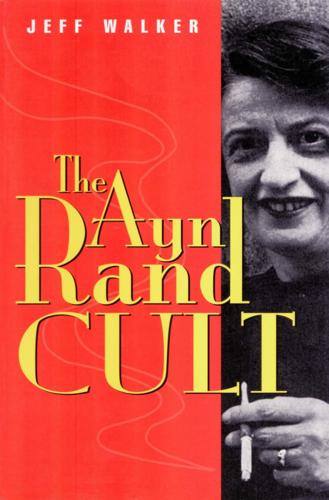
Ayn Rand Cult
by
Jeff Walker
Published 30 Dec 1998
Ron Merrill so wished to see Rand as without equal that he began his tome on Rand by stating that apart from Atlas very few among 1957’s crop of new books are in print today. Actually dozens are, several acknowledged as classics such as Jack Kerouac’s On the Road. He called her a genius doomed by her gender, despite acclaim during Rand’s era for female thinkers such as Simone de Beauvoir, Hannah Arendt, Karen Horney, Suzanne Langer, Jane Jacobs, and Margaret Mead. She fought alone against the world, he informs us. But consider all the major figures in Chapter 12 below, whom she could have counted as allies. Following publication of The Passion of Ayn Rand (1986), Objectivist Peter Schwartz attacked Barbara Branden’s credibility and impugned her motives.
…
For example, in the mid-1990s, Rand’s essay ‘The Ethics of Emergencies’ was included in new editions of both Nina Rosenstand’s The Moral of the Story: An Introduction to Ethics and Joel Feinberg’s Reason and Responsibility, the most widely used introductory philosophy textbook in North America. In her fiction, Rand did something for American culture similar to what anthropologists Ruth Benedict and Margaret Mead did for other cultures: caricaturing rather than characterizing them. Both Benedict’s and Mead’s works may sometimes be bad anthropology, but they nonetheless sometimes constituted effective propaganda for worthwhile causes such as anti-racism and anti-homophobia. Though rand’s works appear to non-Objectivists as neither first-rate literature nor first-rate philosophy, they surely constituted effective propaganda on behalf of capitalism during an era of considerable anti-capitalist rhetoric and policymaking.
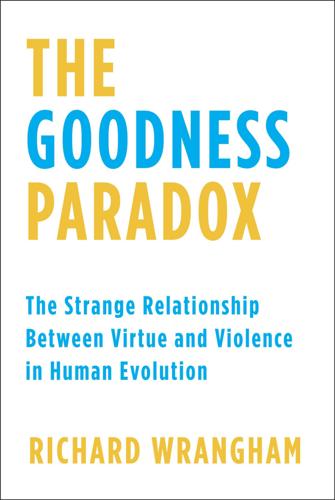
The Goodness Paradox: The Strange Relationship Between Virtue and Violence in Human Evolution
by
Richard Wrangham
Published 29 Jan 2019
Either way, theory was used for evil.24 Appalling though its association with eugenics had been, after World War II the concept of human domestication slowly recovered its legitimacy. The problem had come from the eugenicists’ claim that some populations were better than others, not from the idea that humans were domesticated. As long as no value judgments were assigned to population differences, even explicitly anti-racist scholars could be on board. Margaret Mead was a notable example, an icon of cultural relativity who felt comfortable writing in 1954, “Man is a domesticated animal.”25 Her adviser had been the so-called father of American anthropology, Franz Boas, a fieldworker and theorist much admired for his insistence on the psychological sameness of mankind.
…
They live only with their ant hosts, and have evolved to be easy to harvest by producing special nutrient-rich swellings called gongylidia that their hosts distribute as food packages throughout the colony. These leaf-cutters, like a variety of other ants, have domesticated their food crops. Termites and bark beetles have also evolved primitive systems of agricultural domestication.3 In a very different context, the reason that Theophrastus, Blumenbach, Franz Boas, Margaret Mead, Helen Leach, and others called humans “domesticated” was that they considered humans to be “naturally” or “genetically” tame, and they needed a word to express that idea. Most of these writers gave no indication of concern with whether humans had ever been subject to any kind of controlled breeding.

How to Hygge: The Secrets of Nordic Living
by
Signe Johansen
Published 19 Oct 2016
To my mind, if your thoughts are clouded by anxiety, fear and stress then a getaway to a green wood, a walk by the sea or a gentle hike up a mountain does more to lift the spirits than any expensive handbag or latest must-have gadget could ever do. Keep Calm & Hug a Tree: The Benefits of Ecotherapy Anthropologist Margaret Mead once wrote about the ‘spiritual and mental ancestors’ that form our identity and, whether or not you buy into that idea, I’d wager that there is definitely a therapeutic benefit to returning to our ancestral landscape. Lest you think I’m a tree-hugging hippie, let me assure you I’m not. Every encounter with nature is one that has reaped unexpected rewards and helped to soothe any latent anxieties about school, friends and fears about the future, but I’m wary of the pseudo-spiritual and clean-living types dominating the current narrative on health and well-being.
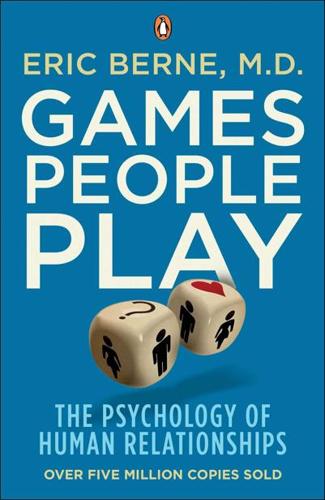
Games People Play: The Psychology of Human Relationships
by
Eric Berne
Published 2 Jan 1966
The attainment of autonomy, then, consists of the overthrow of all those irrelevancies discussed in Chapters 13, 14 and 15. And such overthrow is never final: there is a continual battle against sinking back into the old ways. First, as discussed in Chapter 13, the weight of a whole tribal or family historical tradition has to be lifted, as in the case of Margaret Mead’s villagers in New Guinea;1 then the influence of the individual parental, social and cultural background has to be thrown off. The same must be done with the demands of contemporary society at large, and finally the advantages derived from one’s immediate social circle have to be partly or wholly sacrificed.
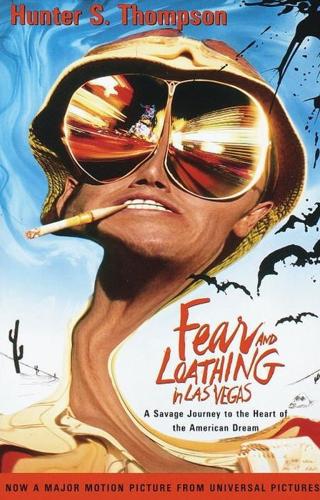
Fear and Loathing in Las Vegas
by
Hunter S. Thompson
and
Ralph Steadman
Published 31 Dec 1970
Here were more than a thousand top-level cops telling each other “we must come to terms with the drug culture,” but they had no idea where to start. They couldn’t even find the goddamn thing. There were rumors in the hallways that maybe the Mafia was behind it. Or perhaps the Beatles. At one point somebody in the audience asked Bloomquist if he thought Margaret Mead’s “strange behavior,” of late, might possibly be explained by a private marijuana addiction. “I really don’t know,” Bloomquist replied. “But at her age, if she did smoke grass, she’d have one hell of a trip.” The audience roared with laughter at this remark. My attorney leaned over to whisper that he was leaving.
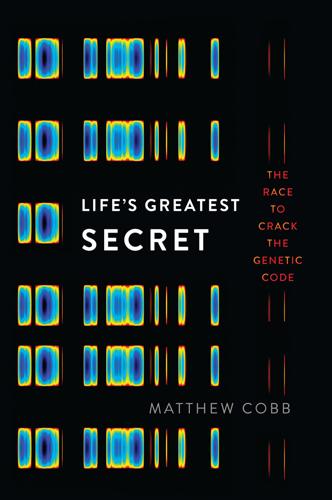
Life's Greatest Secret: The Race to Crack the Genetic Code
by
Matthew Cobb
Published 6 Jul 2015
Excited by their theoretical breakthrough, the two men announced their vision at a small scientific meeting held in New York in 1942. The two-dozen strong audience was composed of an eclectic mixture of neurophysiologists and psychologists, along with the husband and wife anthropologists Gregory Bateson and Margaret Mead. Rosenblueth’s speech, which described what he called ‘circular causality’ or feedback loops, was written up as a paper with Wiener and Bigelow and published under the title ‘Behaviour, purpose and teleology’ in the journal Philosophy of Science.7 The use of the word teleology was deliberately provocative, as this concept explains phenomena in terms of their purpose, and purpose had been banished from polite scientific discourse for centuries.
…
When the paper was read to the small New York audience, the effect was electric. Neurophysiologist Warren McCulloch was particularly excited, as it coincided with the models of brain function that he was developing with Walter Pitts, an odd but brilliant 20-year-old maths prodigy.10 Even the anthropologist Margaret Mead was rapt: ‘I did not notice that I had broken one of my teeth until the Conference was over’, she later wrote.11 Although Wiener’s insight excited his academic colleagues, his attempt to build an anti-aircraft device that could be engineered into a battlefield version was upstaged by a rival top-secret project, which was jointly run by MIT and a private company, Bell Laboratories.
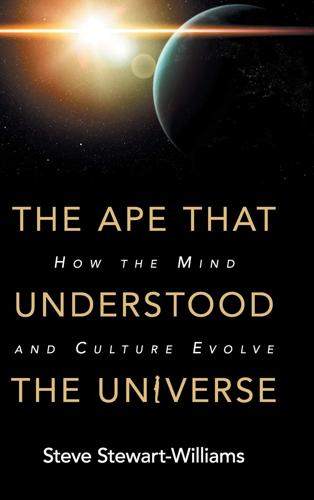
The Ape That Understood the Universe: How the Mind and Culture Evolve
by
Steve Stewart-Williams
Published 12 Sep 2018
William Stephens argued in the 1960s, for example, that among the Marquesas Islanders of Polynesia, adultery was considered perfectly acceptable. His evidence was that the Marquesas didn’t have any social sanctions against it. What he’d overlooked, though, is that despite the absence of formal sanctions, men in this society would often beat or even kill their wives if they suspected them of infidelity.62 Along similar lines, Margaret Mead once claimed, on the basis of a handful of interviews, that traditional Samoan societies were entirely free of the scourge of jealousy. But later, more in-depth research revealed that jealousy was a common cause of violence in Samoa.63 What about Inuit wife sharing? This does seem like a counterexample to the idea that sexual possessiveness is a human universal… but only if we assume that sharing one’s wife was no big deal to the Inuit.
…
The science of intimate relationships. Oxford, UK: Blackwell. Flinn, M. V. (1988). Step- and genetic parent/offspring relationships in a Caribbean village. Ethology and Sociobiology, 9, 1–34. Ford, C. S., & Beach, F. A. (1951). Patterns of sexual behavior. New York: Harper & Row. Freeman, D. (1983). Margaret Mead and Samoa: The making and unmaking of an anthropological myth. Canberra, ACT: Australian National University Press. Freud, S. (1914). On narcissism: An introduction. London: Karnac Books. Friday, N. (1973). My secret garden: Women’s sexual fantasies. New York: Simon & Schuster. Friedman, M. (1953).
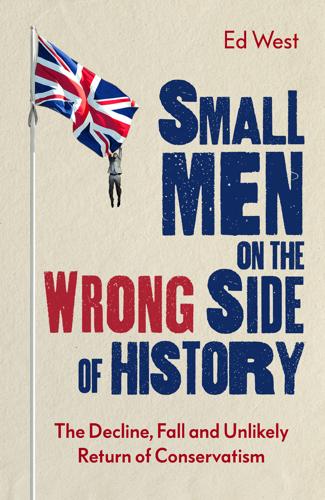
Small Men on the Wrong Side of History: The Decline, Fall and Unlikely Return of Conservatism
by
Ed West
Published 19 Mar 2020
Our course began with a discussion of Franz Boas, the early twentieth-century giant of anthropology who did so much to influence the discipline, previously the preserve of northern European men with a somewhat unhealthy interest in measuring the body parts of brown-skinned people. Under Boas’s influence the field had become less confident in the supremacy of Western civilisation, quite reasonably, although this opened the paradox that cultural relativism was itself a Western idea. It also became far more Left-leaning; Boas’s apprentice Margaret Mead had gone to the South Pacific where she found a pre-agricultural society that didn’t have sexual jealousy and everyone just happily shagged each other without it descending into murderous arguments. Mead’s 1928 book Coming of Age in Samoa is viewed as a sea-change in anthropology, but also a pointer to where uptight Western society could do things differently.
…
Ryan, On Politics. 11 Johnson, Intellectuals. 12 http://www.freerepublic.com/focus/news/836210/posts. 11. Reality Is a Social Construct 1 http://monitor.icef.com/2014/04/english-universities-record-first-international-enrolment-drop-in-29-years/. 2 https://www.psychologytoday.com/us/blog/the-imprinted-brain/201702/margaret-mead-and-the-great-samoan-nurture-hoax. 3 In fairness, Alice Dreger wrote that Mead was a ‘mensch for science – for free inquiry and free speech’ and stood up for a key ideological rival being hounded in academia. Alice Dreger, Galileo’s Little Finger: Heretics, Activists and the Search for Justice in Science (New York: Penguin, 2015). 4 https://twitter.com/CarlWRitter/status/1047724327234416641. 5 Stephen Hilgartner, ‘The Sokal Affair in context’, Science, Technology, & Human Values, vol. 22, no. 4 (Autumn 1997), https://www.jstor.org/stable/689833?

Animal Spirits: The American Pursuit of Vitality From Camp Meeting to Wall Street
by
Jackson Lears
The triumph of technocratic rationality had transformed much political debate into disagreements over technique, easing the shift of formerly radical critics into a more appreciative stance toward American politics and society. As early as 1952, much of this appreciation was on display in a Partisan Review symposium, “Our Country and Our Culture,” which asked twenty-five intellectuals (including Trilling, David Riesman, and Margaret Mead) to comment on the new and positive relationship between American intellectuals and mass democratic culture. With Trilling, they celebrated the emergence of new alliances between wealth and intellect in the world of universities and foundations. Only a very few participants registered any dissent from the roseate views of the majority.
…
Machiavelli, Niccolo MacKay, Charles Macrery, Joseph Madison, James Madison Square Garden Magic Staff, The (Davis) magnetism; see also animal magnetism Mailer, Norman Makari, George Making of a Counterculture, A (Roszak) mana management, see technocratic rationality Man and Superman (Shaw) Mandeville, Bernard Manhattan Project manhood, see masculinity manitou Mann, Horace Man Ray Man Without Qualities, The (Musil) Mao, Zedong Marble, Annie Russell Marcuse, Herbert marginal utility theory Margulis, Lynn Marie de France Marinetti, Filippo Marston, George Moulton Marx, Karl Marxism masculinity; boyhood and; capitalism and; force and; Mailer on; TR and; in Tristram Shandy materialism, see positivism math; see also quantitative thinking Mather, Richard Matisse, Henri McCarraher, Eugene McClintock, Barbara McCormick, Anne O’Hare McFarlane, Robert McKay, Claude McKinley, William McNamara, Robert Mead, Margaret Mead, Richard medicine, see health and healing Melville, Herman mental health; animals and; capitalism’s effect on; physical health and; see also psychology Mental Science Mercer, Lucy Merchant, Carolyn Merman, Ethel Merz, Charles Mesmer, Anton mesmerism; as erotic; healing via Mexican-American War Mexicans Mezieres, Eleanor de microorganisms Middle East, U.S. militarism in Millennial Harbinger (Harris) Milton (Blake) Milton, John Mississippi Bubble mixed-race people mob madness; anti-Semitic; in financial panics; lynching as; at political conventions Modernism money: as erotic; as life force of capitalism; paper; as value of everything Money’d Man (poet) monotheism; see also Christianity Moore, Charles Moore, G.
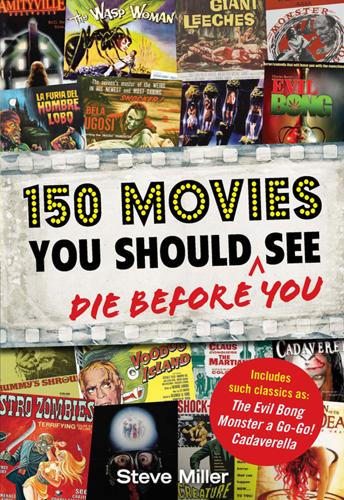
150 Movies You Should Die Before You See
by
Steve Miller
Published 5 Oct 2010
If the socalled scientists in this movie behaved a little more like, oh, I don't know, scientists instead of 1920s big-game hunters, they might learn the creature's intelligent. More intelligent than them, anyway, though that's not saying much. I mean, look at it from the creature's point of view: Wouldn't you be angry with interlopers who keep shooting sharp sticks and shining blinding lights at you? Someone needed to ask, “What would Margaret Mead do?” Thumbs Down Rating: The Crappies The Ugly American Award goes to … The main human characters for being unsympathetic, stupid, or both. And the Worst Picture Award goes to … Producer William Alland for a film that was creepy and politically incorrect even in 1954. They Really Said It!
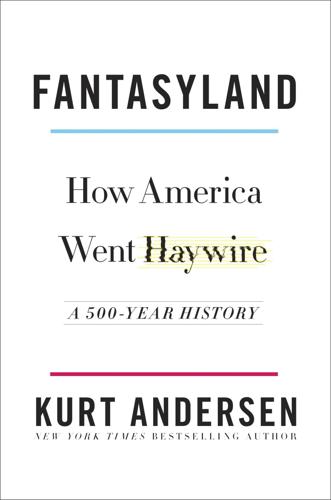
Fantasyland: How America Went Haywire: A 500-Year History
by
Kurt Andersen
Published 4 Sep 2017
Under the influence of drugs, Castaneda says he turned into a crow, talked to coyotes, and communed with the spirits. The M.A. thesis became The Teachings of Don Juan: A Yaqui Way of Knowledge, which was followed in 1971 and 1972 by two more bestsellers about Don Juan. Every with-it young American of the era was required to know these books. More followed, and tens of millions of copies were bought.*2 Margaret Mead, his celebrity anthropologist predecessor, had reported on so-called primitive people in the 1920s and ’30s to persuade her fellow Americans that sex was natural and should be guiltless. In the 1960s and ’70s, Castaneda, enthusiastically endorsed by Mead, reported on so-called primitive people to persuade Americans that magic was real.
…
Back in the 1930s and ’40s, a Duke University botanist-turned-psychologist established parapsychology as a U.S. academic discipline—that is, a field committed to proving telepathy, clairvoyance, psychokinesis, reincarnation, and ghosts are real. He founded the Parapsychological Association, and in the late 1960s (with Margaret Mead’s encouragement) the American Association for the Advancement of Science (AAAS) certified it as an affiliate. One of his young protégés was a University of California psychologist named Charles Tart. Tart’s first big claim to fame was a 1968 experiment in which, he wrote, a “young woman who frequently had spontaneous out-of-body experiences”—didn’t claim to have them but had them—spent four nights sleeping in his lab hooked up to an EEG.
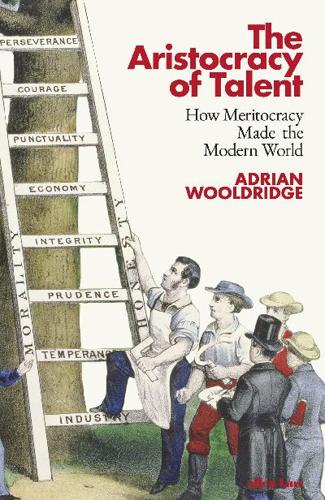
The Aristocracy of Talent: How Meritocracy Made the Modern World
by
Adrian Wooldridge
Published 2 Jun 2021
Otto Klineberg, a Boas pupil who eventually became a key witness in Brown v Board of Education, the 1954 Supreme Court case about school segregation in the South, demonstrated that the average IQ of blacks in the North was higher than the average IQ of blacks in the South, a difference, he argued, that could only be explained by differences in educational opportunities.13 In 1930, confronted with all this evidence, Carl Brigham dramatically recanted his 1923 A Study of American Intelligence, in which he had argued for the existence of a biological hierarchy of European races (Nordic then Alpine then Mediterranean).14 Margaret Mead, another Boas pupil who, thanks to her studies of Coming of Age in Samoa (1928) and Sex and Temperament in Three Primitive Societies (1935), became one of the twentieth century’s great celebrity intellectuals, went so far as to argue that ‘we are forced to conclude that human nature is almost unbelievably malleable, responding accurately and contrastingly to contrasting cultural conditions’.15 There was one area in which the backlash against IQ testing was more measured in America than in Britain, however: the area of educational selection and classification.
…
Douglas, The Home and the School (1984, London, Panther, 1972), pp. 89–97 12 Franz Boas, The Mind of Primitive Man (New York, Macmillan, 1911), passim 13 Otto Klineberg, ‘An Experimental Study of Speed and Other Factors in “Racial” Differences’, Archives of Psychology 93 (1928); Otto Klineberg, Negro Intelligence and Selective Migration (New York, Columbia University Press, 1935) 14 C. Brigham, ‘Intelligence Tests of Immigrant Groups’, Psychological Review 37 (1930), pp. 158–65 15 Margaret Mead, Sex and Temperament in Three Primitive Societies (New York, William Morrow and Company, 1935), p. 280 16 The classic analysis of this difference is Ralph H. Turner, ‘Modes of Social Ascent through Education: Sponsored and Contest Mobility’, in Reinhard Bendix and Seymour Martin Lipset (eds.), Class, Status, and Power: Social Stratification in Comparative Perspective (New York, Free Press, 1966), pp. 449–58 17 J.
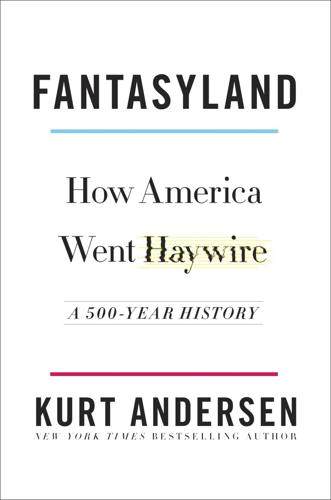
Fantasyland
by
Kurt Andersen
Published 5 Sep 2017
Under the influence of drugs, Castaneda says he turned into a crow, talked to coyotes, and communed with the spirits. The M.A. thesis became The Teachings of Don Juan: A Yaqui Way of Knowledge, which was followed in 1971 and 1972 by two more bestsellers about Don Juan. Every with-it young American of the era was required to know these books. More followed, and tens of millions of copies were bought.*2 Margaret Mead, his celebrity anthropologist predecessor, had reported on so-called primitive people in the 1920s and ’30s to persuade her fellow Americans that sex was natural and should be guiltless. In the 1960s and ’70s, Castaneda, enthusiastically endorsed by Mead, reported on so-called primitive people to persuade Americans that magic was real.
…
Back in the 1930s and ’40s, a Duke University botanist-turned-psychologist established parapsychology as a U.S. academic discipline—that is, a field committed to proving telepathy, clairvoyance, psychokinesis, reincarnation, and ghosts are real. He founded the Parapsychological Association, and in the late 1960s (with Margaret Mead’s encouragement) the American Association for the Advancement of Science (AAAS) certified it as an affiliate. One of his young protégés was a University of California psychologist named Charles Tart. Tart’s first big claim to fame was a 1968 experiment in which, he wrote, a “young woman who frequently had spontaneous out-of-body experiences”—didn’t claim to have them but had them—spent four nights sleeping in his lab hooked up to an EEG.
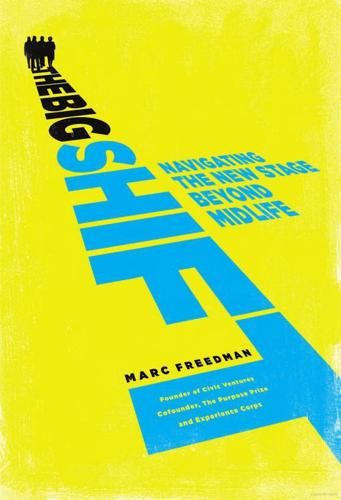
The Big Shift: Navigating the New Stage Beyond Midlife
by
Marc Freedman
Published 15 Dec 2011
Like Laslett, she argues that vision alone is inadequate, suggesting new rites of passage to help individuals make the developmental shift into the new period (even the equivalent to a bar mitzvah for entering the Third Chapter), along with a set of educational innovations that might better enable the transition to this period. Anthropologist and writer Mary Catherine Bateson has also contributed mightily to illuminating the contours and possibilities of this emerging period. She likewise makes the case for why creation of this stage is critically important. The daughter of Margaret Mead and Gregory Bateson, she taught at Harvard, Amherst, and George Mason before leaving academia to focus on writing and activism. In 2005 she authored a brief piece in the Harvard Business Review’s annual issue on the twenty-five big ideas for the year. In it, Bateson called for establishing a midlife atrium—to break into our lives after fifty that in atrium-like fashion enables individuals to let the light and the air in, explore, renew, and help launch a new direction.
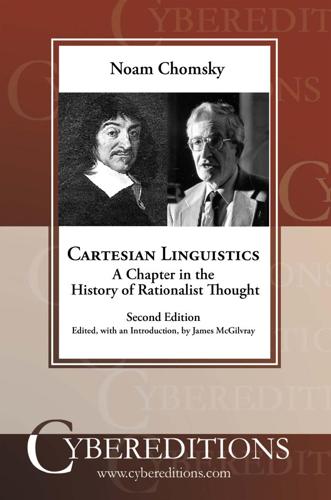
Cartesian Linguistics
by
Noam Chomsky
Published 1 Jan 1966
It takes many forms: there are few acknowledged behaviorists left, though many functionalists and connectionists of various sorts. It is not clear why. Steven Pinker in The Language Instinct (1995, 406–7) illustrates the empiricist idea of a plastic mind in his discussion of what he calls the “standard social science model” by quoting the views of the anthropologist Margaret Mead and the psychologist James Watson. Mead had suggested that human nature must be infinitely malleable because people can be educated to such different roles, and Watson claimed that if he were given a child, he could, by training, turn it into whatever one desired – a fireman, banker, or revolutionary.
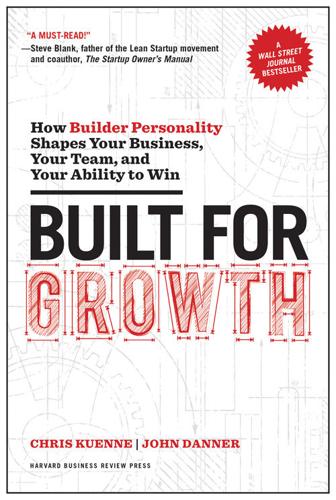
Built for Growth: How Builder Personality Shapes Your Business, Your Team, and Your Ability to Win
by
Chris Kuenne
and
John Danner
Published 5 Jun 2017
Later in her career, when she was on the faculty of the American Management Association, she discovered her salary was significantly below that of all of her colleagues. She recalls, “I agitated for a raise. I got eight thousand dollars, which was still probably a third of what the others were making.” It was experiences like these that fueled Firestone’s Crusader zeal to pursue a PhD at Columbia, where she studied under the great Margaret Mead. Firestone’s dissertation was on the role of nonverbal communication, and she aptly applied this knowledge years later in forming the Women Presidents’ Organization, realizing that women leaders could learn best from one another in small groups focused on specific management challenges. Firestone explains that when the organization first started working with women business owners, their members’ objectives were simply to provide for themselves.
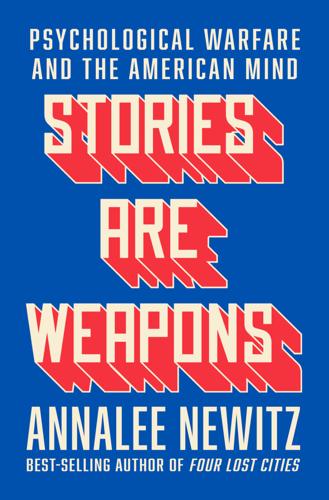
Stories Are Weapons: Psychological Warfare and the American Mind
by
Annalee Newitz
Published 3 Jun 2024
Though supposedly brainwashing was a weapon used only by US adversaries, the CIA nevertheless dabbled in its own brainwashing program, called MK-Ultra, a well-funded series of experiments aimed at turning mind control into a legitimate social science. Historian Rebecca Lemov writes that at its peak, the MK-Ultra program cost taxpayers almost a billion dollars per year, and funded everyone from behaviorist B. F. Skinner, who experimented with conditioning animals in his “Skinner Boxes,” to famed anthropologist Margaret Mead. One of the CIA’s front operations, called the Human Ecology Fund, gave money to people who wanted to investigate whether it was possible to control people by controlling their environment.37 There are dozens of books and even a movie, The Men Who Stare at Goats (2009), about the sensational experiments the CIA and Army conducted using LSD, hoping that the hallucinogen might become a foolproof truth serum (it didn’t).
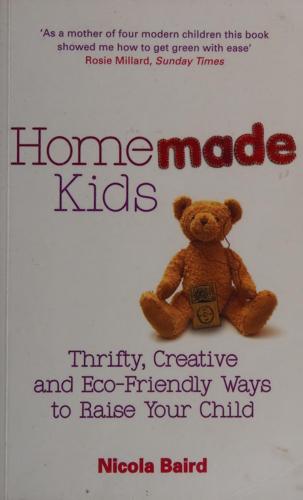
Homemade Kids: Thrifty, Creative and Eco-Friendly Ways to Raise Your Child
by
Nicola Baird
Published 14 Sep 2010
Start by exploring, as you find shops, friends, activities and green spaces but don’t be surprised if this knowledge inspires you to make your locale far better for a generation of little ’uns. a OR Qe Never doubt that a small group of thoughtful, committed citizens can change the world; indeed, it’s the only thing that ever has. be Margaret Mead, 1901-1978 Having children was what prompted me to take climate change seriously, that and a very well-written New Scientist article. It made me realise that it’s pointless pulling faces and complaining, and that it’s my responsibility to do whatever I can to give my children the best chance of survival in the future.
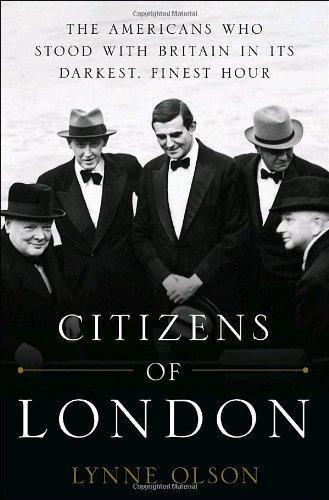
Citizens of London: The Americans Who Stood With Britain in Its Darkest, Finest Hour
by
Lynne Olson
Published 2 Feb 2010
The problem was exacerbated by the fact that most Britons encountered Americans only when the GIs were off duty. Trying to relieve the regimentation of Army life and the boredom of endless training, they invaded pubs, talked loudly, got drunk, picked up women, and in the words of the anthropologist Margaret Mead, acted “as if they owned the world.” As Maurice Gorham, a BBC executive, put it, “We never saw an American soldier doing anything.” When Gorham traveled to France after D-Day and observed “how the Americans could look when they were on the job, I longed to bring a handful of them back to London and say to the people in Piccadilly, ‘Look, these are Americans, too.’ ” Gorham believed, as did Winant and Eisenhower, that the GIs in Britain were too isolated from the British people.
…
“compensation was minimal”: David Reynolds, Rich Relations, p. 122. “autocratic and undemocratic methods”: Ibid., p. 126. “our United States allies”: Daily Express, Dec. 15, 1943, Winant papers, FDRL. “They hadn’t wanted”: Gardiner, “Overpaid, Oversexed, and Over Here,” p. 32. “for us”: Ibid. “as if they owned”: Margaret Mead, “A GI View of Britain,” New York Times Magazine, March 19, 1944. “We never saw”: Ibid., p. 54. “these men are fighters”: Ibid. “The general reaction”: Longmate, The G.I.’s, p. 96 “I like it fine”: Hale and Turner, p. 24. “In they slouched”: Nicolson, p. 275. “if an American soldier”: Butcher, p. 14.
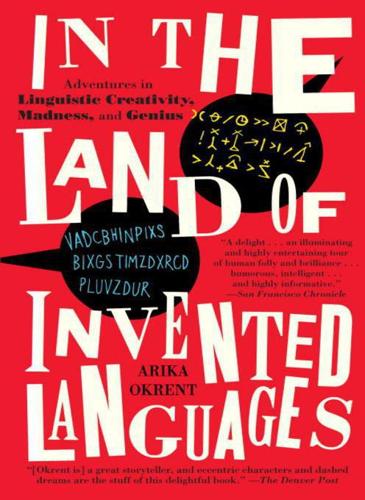
In the Land of Invented Languages: Adventures in Linguistic Creativity, Madness, and Genius
by
Arika Okrent
Published 1 Jan 2009
He asked Kurt Vonnegut to introduce aUI “in some of your stories … by letting e.g. a space-man speak in this language (I would be glad to translate any sentence into it).” In each case he molded his approach to what he thought the recipient might want to hear, often to embarrassing effect. He began his letter to Margaret Mead by appealing to her womanhood (“it takes a woman to teach the mother-tongue … I see you, dear Mrs. Mead, as prophetess of motherhood”), and his letter to Harry Belafonte describes aUI as a “language without prejudice” and dwells on the unfortunate sound associations of the word “niggardly.” He wrote to some of the same people Bliss did, and at some point one of them must have informed Bliss about Weilgart's project.
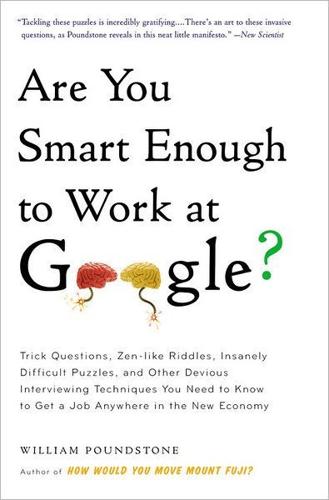
Are You Smart Enough to Work at Google?: Trick Questions, Zen-Like Riddles, Insanely Difficult Puzzles, and Other Devious Interviewing Techniques You ... Know to Get a Job Anywhere in the New Economy
by
William Poundstone
Published 4 Jan 2012
Successful innovators need both. Those who excel only at divergent thinking may be flakes; those gifted with convergent thinking alone are intelligent but not creative. In 1960 the University of Minnesota held a “Conference on the Space Age.” The keynote speakers were the celebrity anthropologist Margaret Mead and Ellis Paul Torrance. Mead remarked to Torrance that creativity had been studied before, with little result. “Why do you think it’ll amount to anything this time?” she asked. It remains a good question. Some psychologists still judge creativity research to be a slough with a few tufts of good footing (as Herman Melville said of philosophy).

Whiplash: How to Survive Our Faster Future
by
Joi Ito
and
Jeff Howe
Published 6 Dec 2016
Granovetter, citing the work of Ramesh Srinivasan and Adam Fish at the University of California, Los Angeles, recently noted that online social networks may be useful in maintaining strong ties between people separated by geography or politics.30 In 2007, Srinivasan and Fish discovered that activists in Kyrgyzstan use social media platforms to communicate with sympathetic networks worldwide, creating strong ties that cross national boundaries.31 Ethan Zuckerman, who oversees the Center for Civic Media at MIT, has also noted that unlike the local neighborhood networks Dr. Granovetter studied, these international networks may include strong ties that also serve as bridging ties, helping to ensure that as your network grows larger, you will have more resources at your disposal.32 The story of Safecast illustrates this dynamic. Perhaps in Margaret Mead’s day the only thing that could change the world was a “small group of thoughtful, committed citizens,” as the anthropologist famously claimed.33 Safecast, however, was less the product of that group of committed citizens than it was the product of that group’s extended network of loose ties. Safecast quickly grew into a major citizen-science initiative.
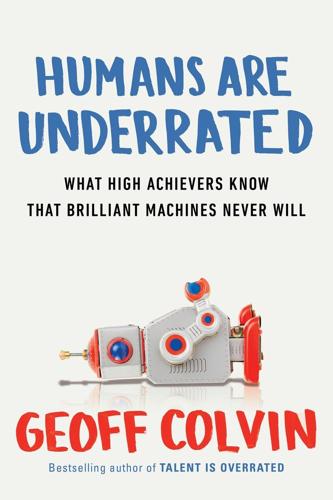
Humans Are Underrated: What High Achievers Know That Brilliant Machines Never Will
by
Geoff Colvin
Published 3 Aug 2015
The blank-slate view also held out hope for a better world, particularly a less war-filled world, which was powerfully appealing in the era of the two World Wars. War was not an unavoidable curse, as people through all of history had believed, this view argued, because we are not inherently warlike. New research appeared to support this view. Margaret Mead famously wrote about the nonviolent Samoans, and New Guineans who had never heard of war. Elizabeth Marshall Thomas, in her book The Harmless People, described the pacifist !Kung San of the Kalahari. If those cultures thrived without war, so could ours. Unfortunately, the research was simply wrong.

On Paradise Drive: How We Live Now (And Always Have) in the Future Tense
by
David Brooks
Published 2 Jun 2004
With our loose social structures and geographic dispersion, the future of an American child is unknowable. It’s impossible to know if the child will keep his or her parents’ religion (possibly not), live in the same state (probably not), follow in his parents’ career footsteps (almost certainly not). The greatest successes or the saddest failures seem possible. As the anthropologist Margaret Mead observed, American children are expected to lead lives unlike their parents’. In many families, it is expected—and in some immigrant families, it is demanded—that children shall exceed their parents. Each generation understands that it shall surpass the last, and each generation has a duty to see that the next one can do the same.
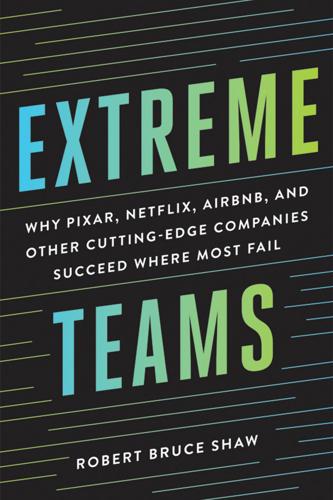
Extreme Teams: Why Pixar, Netflix, AirBnB, and Other Cutting-Edge Companies Succeed Where Most Fail
by
Robert Bruce Shaw
,
James Foster
and
Brilliance Audio
Published 14 Oct 2017
The U.S. military has a slang phrase indicating a similar approach: “Embrace the suck.” 2Margaret Mead’s famous remark about groups applies to extreme teams: “Never doubt that a small group of thoughtful, committed citizens can change the world. Indeed, it’s the only thing that ever has.” Nancy C. Lutkehaus, Margaret Mead: The Making of an American Icon (Princeton: Princeton University Press, 2008), 261. 3Jack Ma, when asked what drove the success of his company, noted that it had three essential attributes—no money, no technology, and no plan. For a detailed account of the battle with eBay, see Duncan Clark, Alibaba: The House That Jack Ma Built (New York: Harper Collins, 2016), Loc 262 of ebook. 4eBay, in 2006, folded its operations into a joint venture with a Chinese firm, Tom Online. eBay retained a 49 percent share in the venture but, in essence, had pulled out of the market. 5The comedian Jon Stewart noted after Alibaba’s massive public stock offering that “The communists just beat us at capitalism.” 6Alibaba also provides a range of services in addition to its products, some of which are quite interesting.
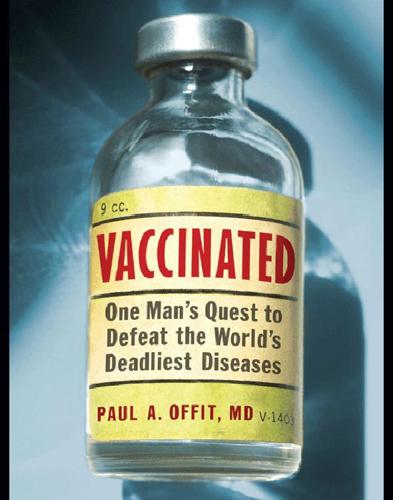
Vaccinated: One Man's Quest to Defeat the World's Deadliest Diseases
by
Paul A. Offit
Published 1 Jan 2007
Members of the society included founding fathers such as George Washington, Alexander Hamilton, John Adams, Thomas Jefferson, Thomas Paine, Benjamin Rush, James Madison, and John Marshall as well as scientists such as John Audubon, Robert Fulton, Thomas Edison, Louis Pasteur, Albert Einstein, Linus Pauling, Margaret Mead, Marie Curie, and Charles Darwin; the society’s library houses a first edition of Hilleman’s beloved The Origin of Species. Maurice Hilleman with daughters Kirsten (far left) and Jeryl and wife Lorraine, Vail, Colorado, December 1982. Maurice is the only one not wearing skis. Some of the best scientists of the twentieth century came to honor Hilleman that day.
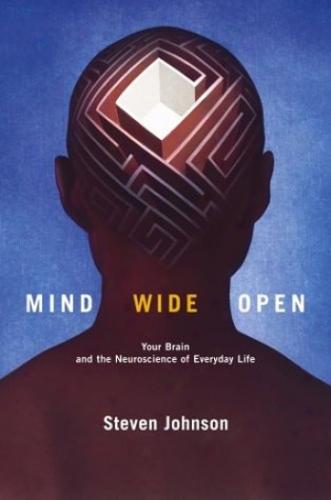
Mind Wide Open: Your Brain and the Neuroscience of Everyday Life
by
Steven Johnson
Published 2 Jan 1999
Ramachandran’s fascinating overview of mirror neurons and their evolutionary significance, “Mirror Neurons and Imitation Learning as the Driving Force Behind ‘the Great Leap Forward’ in Human Evolution,” archived at www.edge.org/documents/archive/edge69.html. 21. “origins of language”: Rizzolatti and Arbib, 1998. 22. “deaf-blind children”: Wilson, 153. 23. “University of California at San Francisco psychologist Paul Ekman”: Ekman gives a revealing account of his research into the universality of facial expressions-including a remarkable clash with Margaret Mead-in his afterword to the 1998 edition of The Expression of the Emotions in Man and Animals. 24. “ ‘Duchenne smile’ ”: Darwin, 1998, 203. 25. “studies of stroke victims”: Damasio, 1995, 140. 26. “sometimes called ‘modules’ ”: There is a whole cottage industry of debate about the correct terminology for these “component parts” of the brain.
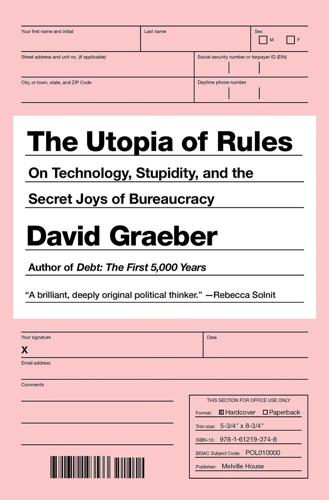
Bureaucracy
by
David Graeber
Published 3 Feb 2015
Sociologists like Talcott Parsons and Edward Shils45 were deeply embedded in the Cold War establishment at Harvard, and the stripped-down version of Weber they created was quickly stripped down even further and adopted by State Department functionaries and the World Bank as “development theory,” and actively promoted as an alternative to Marxist historical materialism in the battleground states of the Global South. At that time, even anthropologists like Margaret Mead, Ruth Benedict, and Clifford Geertz had no compunctions against cooperating closely with the military-intelligence apparatus, or even the CIA.46 All this changed with the war in Vietnam. During the course of campus mobilizations against the war, this kind of complicity was thrown under a spotlight, and Parsons—and with him, Weber—came to be seen as the very embodiment of everything radicals sought to reject.
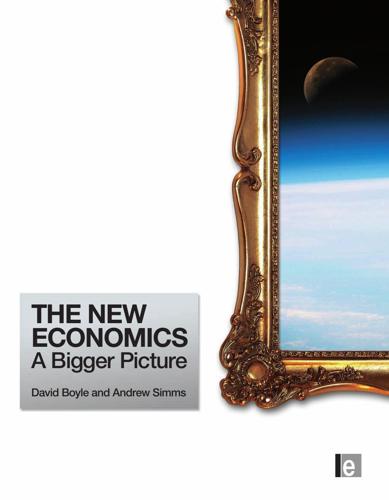
The New Economics: A Bigger Picture
by
David Boyle
and
Andrew Simms
Published 14 Jun 2009
129 There is a divisiveness built into much organized welfare and many charities. When you ask for nothing back from the person being helped, maybe for their entire lives, you give a damaging and erroneous message: that the person has nothing whatever to offer that society needs. ‘Charity wounds,’ said the anthropologist Margaret Mead, and this is what she meant. That is emphatically not to say, of course, that vital services should ever be withheld from someone in need if they cannot, for whatever reason, contribute in return. The point is that practically everybody does have something to give and both they, and the community around them, are better for the giving.
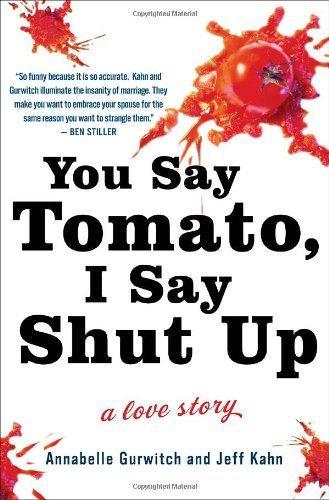
You Say Tomato, I Say Shut Up
by
Annabelle Gurwitch
Published 31 Aug 2010
I know that this doesn’t sound even remotely like the romantic fantasy Jeff was looking for, but everything we’ve gone through has built our history, the story of us, which is as solid a foundation as anything I’ve ever experienced in my life.* Does this mean that we’ll stay married forever? When asked why her marriages failed, Margaret Mead famously answered, “I’ve had three marriages and none of them was a failure.” As much as I like to make fun of Jeff, I know that being married to him makes me be a better person. What started when we moved in together has continued. I’ve adopted many of Jeff’s infectious qualities. I love to have houseguests.
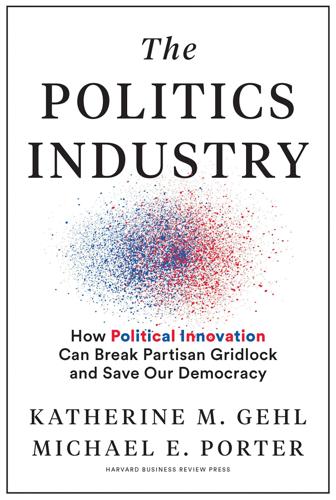
The Politics Industry: How Political Innovation Can Break Partisan Gridlock and Save Our Democracy
by
Katherine M. Gehl
and
Michael E. Porter
Published 14 Sep 2020
Many of the national reform organizations, such as Open Primaries, FairVote, and RepresentUs are happy to provide support to startup efforts. An increasing number of individuals and organizations, such as the Unite America Fund (on whose board I sit) and the Arnold Foundation, are actively looking for political-innovation campaigns in which to invest. Just remember the words of Margaret Mead: “Never doubt that a small group of thoughtful, committed citizens can change the world; indeed, it’s the only thing that ever has.” Connect with us at www.GehlPorter.com and we can help you get started. Fund America has a great philanthropic tradition. Since Warren Buffett and Bill and Melinda Gates created the Giving Pledge, hundreds of the world’s wealthiest individuals have pledged to donate at least half of their wealth to charitable causes, adding up to hundreds of billions of dollars.
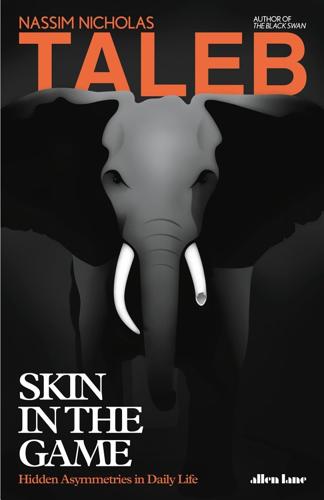
Skin in the Game: Hidden Asymmetries in Daily Life
by
Nassim Nicholas Taleb
Published 20 Feb 2018
For, at the battle of Cannae, he remarked to Gisco, who was concerned that the Carthaginians were outnumbered by the Romans: “There is one thing that’s more wonderful than their numbers … in all that vast number there is not one man called Gisgo.”fn5 This large payoff from stubborn courage is not limited to the military. “Never doubt that a small group of thoughtful citizens can change the world. Indeed, it is the only thing that ever has,” wrote Margaret Mead. Revolutions are unarguably driven by an obsessive minority. And the entire growth of society, whether economic or moral, comes from a small number of people. SUMMARY AND NEXT So we summarize this chapter and link it to hidden asymmetries, the subtitle of the book. Society doesn’t evolve by consensus, voting, majority, committees, verbose meetings, academic conferences, tea and cucumber sandwiches, or polling; only a few people suffice to disproportionately move the needle.

Bike Boom: The Unexpected Resurgence of Cycling
by
Carlton Reid
Published 14 Jun 2017
By 1976, Stanford University law professors described this city as “a bicyclist’s utopia,” and it’s to Davis, California, that we travel next. 3 | Davis: The Bicycle Capital of America “Never doubt that a small group of thoughtful, committed citizens can change the world.” —American anthropologist Margaret Mead TASTELESS TOMATOES? Blame Davis. Or, more specifically, the food science faculty at the University of California, Davis. Founded as an agricultural research station in 1907, UC Davis was where, in the mid-1960s, plant breeder Jack Hanna and engineer Coby Lorenzen created “vf-145,” a tomato bred tough to survive mechanical harvesting.
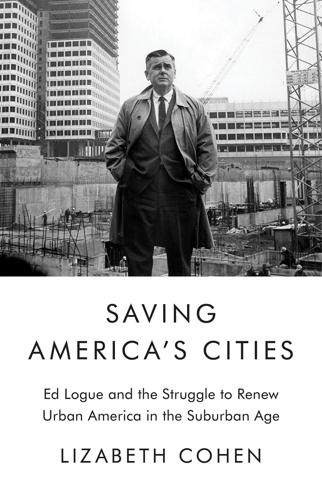
Saving America's Cities: Ed Logue and the Struggle to Renew Urban America in the Suburban Age
by
Lizabeth Cohen
Published 30 Sep 2019
That’s basically artificial. There is no new world you can make without the old world … The notion that you could discard the old world and now make a new one. This is what was so bad about Modernism.”124 Counterbalancing Jacobs, however, was enthusiasm from one of the era’s most prominent anthropologists, Margaret Mead. In an epilogue that Mead wrote to a 1976 book on New Towns, she argued, “New Towns are necessary to a society that has lost its way.” Lamenting segregated suburbs, disrupted old neighborhoods, and other forms of social isolation, she considered New Towns a welcome corrective, “a kind of light that beckons us ahead … that can tell us how to … bring a slum to life, how to turn a suburb from a bedroom town where people are alienated and separated from their neighbors into a place where people work and meet and know each other.”125 Despite these many challenges, the UDC nevertheless exceeded its goals for diversifying communities.
…
In early 1967 on a speaking tour of Britain, Jacobs complained after spending an evening with planners, “These people are tiresome beyond belief about their new towns, etc. I wish they would just leave me alone”; quoted in Robert Kanigel, Eyes on the Street: The Life of Jane Jacobs (New York: Alfred A. Knopf, 2016), 260. 125. Margaret Mead, epilogue to Campbell, New Towns: Another Way to Live, 267. 126. Freemark, “Entrepreneurial State,” 306; minority figure from 1974. 127. Mark Lamster, “Rethinking Roosevelt Island,” Design Observer, January 14, 2012, http://designobserver.com/article.php?id=32188. 128. Logue, “A Summing Up,” from “The Proceedings of the Conference at Tarrytown,” 1970, 224. 129.
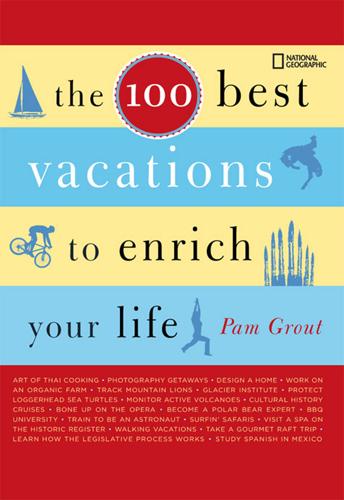
The 100 Best Vacations to Enrich Your Life
by
Pam Grout
Published 14 May 2007
Recent examples include “The Meteoric Rise of China and India,” “21st-Century Cities,” “Healthy Aging,” and the Middle East. Experts on these topics are brought in to speak and lead discussions Monday through Friday. Some of the names you might recognize who have been speakers here are Helen Keller, Jane Goodall, Rudyard Kipling, Thurgood Marshall, Margaret Mead, Tom Ridge, Kurt Vonnegut, Susan B. Anthony, Alexander Graham Bell, and Jonas Salk. With a pedigree like that, it’s not surprising that Chautauqua Institution is a national historic landmark (designated in 1989), noted for its landscapes, historic architecture, beautiful gardens, and significance to American education.
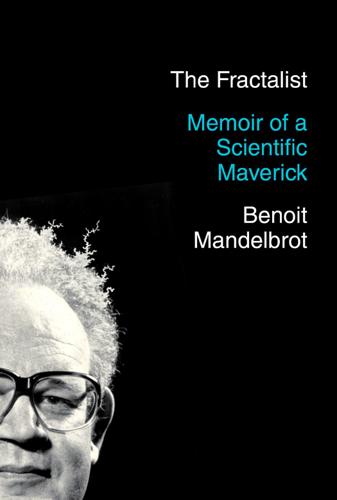
The Fractalist
by
Benoit Mandelbrot
Published 30 Oct 2012
Back at MIT, Jerry moved up by stages and became its president during a period when the New Left was riding high and the institute actually appeared endangered. By chance, Jerry heard me lecture in London in 1952 and liked my talk and the fun discussion it provoked. You must believe it—I argued with the ethnologist Margaret Mead (1901–78), who had gained fame studying sex in the South Seas! That she attended my lecture illustrates the wonderful open mood of those distant years. As was his style, Jerry invited me over to MIT with practically no paperwork. He was then an associate professor and, like several other staff, sat in an open cubicle in a large room.
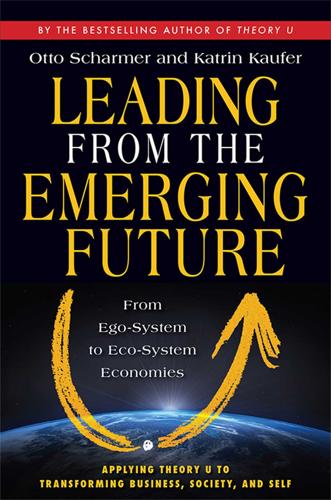
Leading From the Emerging Future: From Ego-System to Eco-System Economies
by
Otto Scharmer
and
Katrin Kaufer
Published 14 Apr 2013
Conclusion and Practices: Twelve Principles One interesting development over the past several decades has been a subtle shift in the balance of power between individuals and institutions in favor of individuals. As the entrepreneur Nick Hanauer puts it: One of my favorite sayings, attributed to Margaret Mead, has always been “Never doubt that a small group of committed citizens can change the world. Indeed, it’s the only thing that ever has.” I totally believe it. You could do almost anything with just five people. With only one person, it’s hard—but when you put that one person with four or five more, you have a force to contend with.
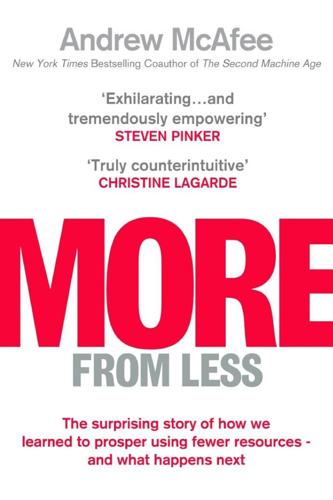
More From Less: The Surprising Story of How We Learned to Prosper Using Fewer Resources – and What Happens Next
by
Andrew McAfee
Published 30 Sep 2019
Simon immediately added, “I also speculate, however, that many people will continue to think and say that the conditions of life are getting worse.” CHAPTER 15 Interventions: How to Be Good Never doubt that a small group of thoughtful, committed citizens can change the world. Indeed, it is the only thing that ever has. —Attributed to Margaret Mead (1901–78) As I’ve tried to show throughout this book, our current path is encouraging but far from perfect. The four horsemen of capitalism, technological progress, public awareness, and responsive government are galloping around the world and improving it in most of the ways that matter most.

Possible Minds: Twenty-Five Ways of Looking at AI
by
John Brockman
Published 19 Feb 2019
As early as 1942, at the first of a series of foundational interdisciplinary meetings about the control of complex systems that would come to be known as the Macy Conferences, leading researchers were arguing for the inclusion of the cognitive element into the conversation. While von Neumann, Shannon, and Wiener were concerned about systems of control and communication of observed systems, Warren McCullough wanted to include mind. He turned to cultural anthropologists Gregory Bateson and Margaret Mead to make the connection to the social sciences. Bateson, in particular, was increasingly talking about patterns and processes, or “the pattern that connects.” He called for a new kind of systems ecology in which organisms and the environment in which they live are one and the same and should be considered as a single circuit.
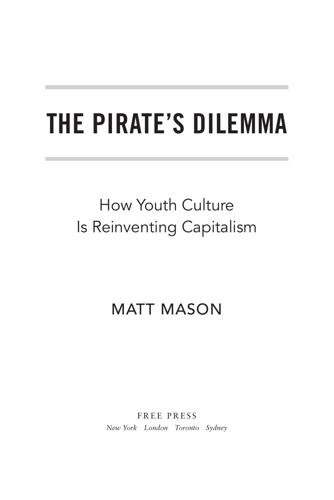
The Pirate's Dilemma: How Youth Culture Is Reinventing Capitalism
by
Matt Mason
By thinking like pirates, people grow niche audiences to a critical mass and change the mainstream from the bottom up. They've toppled more inefficient corporate pyramids than they've invented styles of music, and as long as there are people or choices not being represented in the marketplace, there will always be pirates pushing the envelope. Margaret Mead famously said, “Never doubt that a small group of thoughtful, committed citizens can change the world. Indeed, it's the only thing that ever has.” Pirates are some of the most committed citizens we've got. Many pirates aren't just copying the work of others. Some give this work new meaning by broadcasting it somewhere else.
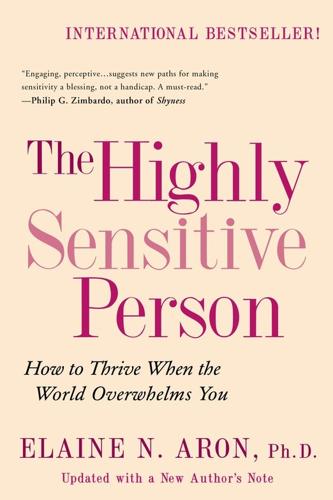
The Highly Sensitive Person: How to Thrive When the World Overwhelms You
by
Elaine N. Aron
Published 1 Dec 2013
The next topic is far more important. Learning About Our Culture—What You Don’t Realize WILL Hurt You You and I are learning to see our trait as a neutral thing—use—ful in some situations, not in others—but our culture definitely does not see it, or any trait, as neutral. The anthropologist Margaret Mead explained it well. Although a culture’s newborns will show a broad range of inherited temperaments, only a narrow band of these, a certain type, will be the ideal. The ideal personality is embodied, in Mead’s words, in “every thread of the social fabric—in the care of the young child, the games the children play, the songs the people sing, the political organization, the religious observance, the art and the philosophy.”
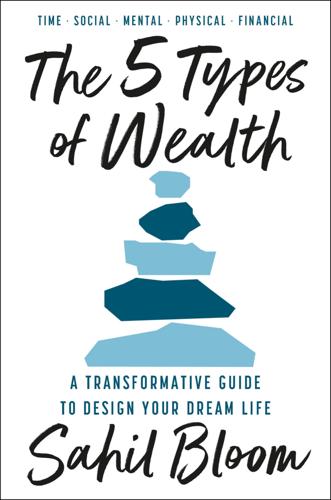
The 5 Types of Wealth: A Transformative Guide to Design Your Dream Life
by
Sahil Bloom
Published 4 Feb 2025
Focus on the company—the people you want to travel with—and the journey will reveal itself in due time. Nothing bad has ever come from surrounding oneself with inspiring, genuine, kind, positive-sum individuals. Find your Front-Row People. Cherish them. Be one to someone else. 12. The Uniquely Social Species American anthropologist Margaret Mead was once asked what she considered to be the first sign of civilized human society. The student who asked the question anticipated a response about tools, cave paintings, or other ancient artifacts, but Mead took the question in an interesting direction. She answered that the first sign of human civilization was a healed broken femur.

The Taste of War: World War Two and the Battle for Food
by
Lizzie Collingham
Published 1 Jan 2011
‘At a time when England is enlarging her school lunch program I do not see how we in this country could justify curtailment here.’66 Indeed, the scheme expanded until, by the end of the war, it was feeding 8 million children while another 2 million received milk at school.67 The school lunch programme was the one area of wartime food policy where nutritionists gained real power. Each state was required to hire dieticians and nutritionists to supervise the scheme, and the recommended daily allowances were used to measure whether the lunches were ‘of optimum nutritional value’.68 The Committee on Food Habits, under the direction of the anthropologist Margaret Mead, devoted its efforts to creating suggested menus which would provide meals that were not only healthy but which fostered a sense of national unity. Mead argued that school lunches should avoid offending the tastes of the many ethnic groups within America’s diverse population. For this reason she argued that spicy seasonings, which would alienate one group or another, should be avoided and suggested that salt should be the only flavouring used.
…
The bland (if filling) canteen meals were based on the Anglo-Saxon model of meat and two vegetables.123 Like American schoolchildren, the recruits from diverse regional, religious and ethnic backgrounds found themselves eating the innocuous food of demo-cracy.124 Their taste buds were moulded into conformity, and Margaret Mead and the other members of the Committee on Food Habits would have been delighted by a post-war poll in which the majority of Americans described their perfect meal as an elaborate version of one of their menus: a fruit or shrimp cocktail followed by vegetable or chicken soup, a steak for the main course with mashed potatoes or chips and peas, with a side salad, roll and butter, and apple pie for dessert followed by hot coffee.125 On American bases throughout the world Post Exchange (PX) stores were kept well supplied with a stock of small treats: American candies, cigarettes and drinks.

Wasps: The Splendors and Miseries of an American Aristocracy
by
Michael Knox Beran
Published 2 Aug 2021
In fact you got along with your parents better, during your boarding school years, than you did when you lived with them mostly at home precisely because adult authority was more widely diffused at school, and not concentrated in the mom-and-dad domestic pressure-cooker. Much like the children of Margaret Mead’s Samoans, you had an extended parent-family: so many step-parents (Hugh Sackett, Bill Polk, Bob Gula, Doug Brown, Jake Congleton, Jack Smith, Michael Tronic, Michael Gerard, Jon Choate, Warren and Micheline Meyers, Charley and Ann Alexander, John and Joan Holden, etc.) who cared about you, and from whom you could learn, but in a relationship more relaxed than that of the conventional parent-child one.
…
[A curious way to dismiss the studies of one who has spent a quarter of a century and more in the WASP jungle, living among the natives, pursuing them into the recesses of their tribal seminaries, law firms, banks, and trusts, their Nantucket Islands and Mecox Bays, Myopia Hunt and Racquet and Tennis Clubs, Society Libraries and Colony Clubs. Margaret Mead (nine months in Samoa) and Claude Lévi-Strauss (scarcely more in the Brazilian rain forest) were anthropological tyros in comparison… ] castles: “Castles,” Emerson says, “are proud things, but ’tis safest to be outside of them.” With flashing eyes the grammarian’s friend exhibited the treasures of his palace.
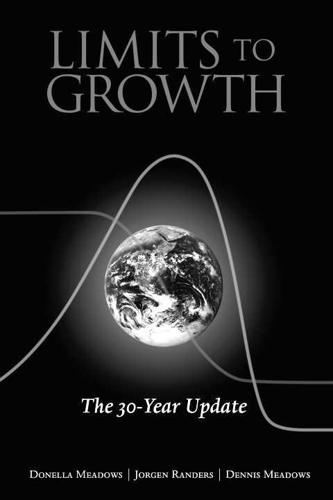
The Limits to Growth: The 30-Year Update
by
Donella H. Meadows
,
Jørgen Randers
and
Dennis L. Meadows
Published 15 Apr 2004
They can be literally or figuratively snuffed out. Only innovators, however-by perceiving the need for new information, rules, and goals, communicating about them, and trying them out-can make the changes that transform systems. This important point is expressed clearly in a quote that is widely attributed to Margaret Mead, "Never deny the power of a small group of committed individuals to change the world. Indeed that is the only thing that ever has." We have learned the hard way that it is difficult to live a life of material moderation within a system that expects, exhorts, and rewards consumption. But one can move a long way in the direction of moderation.
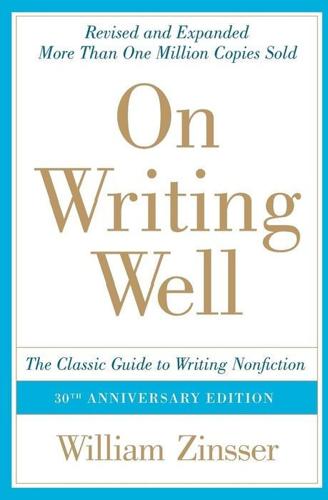
On Writing Well (30th Anniversary Edition)
by
William Zinsser
Published 1 Jan 1976
CHURCHILL, A HISTORY OF THE ENGLISH-SPEAKING PEOPLES Put this puzzle together and you will find milk, cheese and eggs, meat, fish, beans and cereals, greens, fruits and root vegetables—foods that contain our essential daily needs. —IRMA S. ROMBAUER, JOY OF COOKING To the Manus native the world is a great platter, curving upwards on all sides, from his flat lagoon village where the pile-houses stand like long-legged birds, placid and unstirred by the changing tides. —MARGARET MEAD, GROWING UP IN NEW GUINEA The problem lay buried, unspoken, for many years in the minds of American women. —BETTY FRIEDAN, THE FEMININE MYSTIQUE Within five minutes, or ten minutes, no more than that, three of the others had called her on the telephone to ask her if she had heard that something had happened out there.
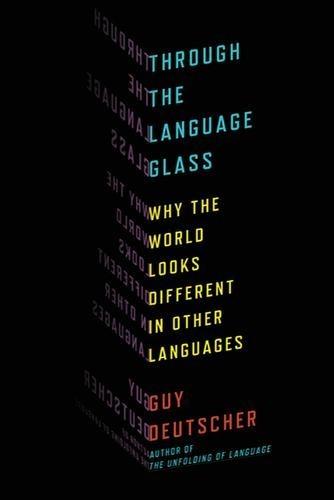
Through the Language Glass: Why the World Looks Different in Other Languages
by
Guy Deutscher
Published 29 Aug 2010
Our linguistic world is primarily in the “driving direction up” mode, but in Guugu Yimithirr one speaks exclusively in the “north up” mode. A CRUMB ON YOUR SEAWARD CHEEK The first reaction to these reports would be to dismiss them as an elaborate practical joke played by bored Aborigines on a few gullible linguists, not unlike the tall stories of sexual liberation that were told to the anthropologist Margaret Mead by adolescent Samoan girls in the 1920s. The Guugu Yimithirr may not have heard of Kant, but they somehow must have got their hands on My Adventures on the Remote Island of Zift and decided to invent something that would out-nonsense even the Ziftish concepts “bose” and “rird.” But how on earth did they manage to conjure up something so utterly unlikely and at odds with the rest of the world?

Bold: How to Go Big, Create Wealth and Impact the World
by
Peter H. Diamandis
and
Steven Kotler
Published 3 Feb 2015
Moreover, since many of these competitions require significant capital to field a team, crowdfunding can now be used to attract the requisite financial support—unlocking a potentially global field of backers. Finally, competitions inspire hundreds of different technical approaches, which means that they don’t just give birth to a single-point solution, but rather to an entire industry. Why Prizes Work The American anthropologist Margaret Mead once said, “Never doubt that a small group of thoughtful, committed citizens can change the world. Indeed, it is the only thing that ever has.”8 As we saw earlier, this same concept was echoed in Kelly Johnson’s third rule of skunk: “The number of people having any connection with the project must be restricted in an almost vicious manner.”
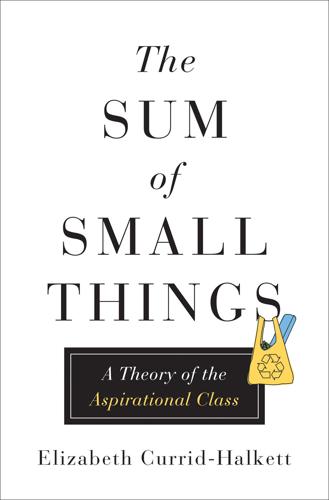
The Sum of Small Things: A Theory of the Aspirational Class
by
Elizabeth Currid-Halkett
Published 14 May 2017
Wet nurses (not as popular in these countries as in France) were working-class and rural women and thus the distinction between whether one fed her child maternal milk or formula (or had a wet nurse do it instead) became a distinct class issue—poor women nursed, wealthier women did not. In addition, wealthier women were convinced of the “scientific” and modern superiority of manmade formulas over nature (even though it was clear through the medical studies of the time and the great Margaret Mead herself, that infants were more likely to survive and thrive on human milk). There was another implicit deterrent to breast-feeding: Fashionable society women who did not want to be burdened by the social limitations of nursing could point to modern medicine and even popular literature, which characterized upper-class women as physically weak and “unable” to nurse.34 Yet, as in most cultural arenas, the habits of the rich were emulated by the lower classes too, and soon formula was ubiquitous and breast-feeding declined rapidly.
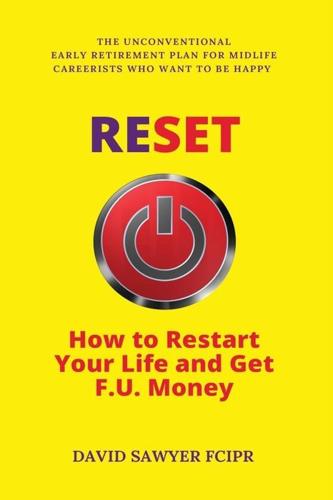
Reset: How to Restart Your Life and Get F.U. Money: The Unconventional Early Retirement Plan for Midlife Careerists Who Want to Be Happy
by
David Sawyer
Published 17 Aug 2018
Maya Angelou wrote her books in motel rooms, Thomas Wolfe at a makeshift standing desk (the top of his fridge). Anthony Trollope fitted in writing around his job as a post office civil servant. Marx frequented the British Museum Reading Room between 9am and 7pm; Jung built a two-storey tower and worked there. Margaret Mead rose at 5am, Proust wrote in bed. And author John Cheever worked from the basement of his apartment block – in his boxer shorts. Routines make sure you continue to put one foot in front of another, whatever. For example, it took me seven weeks to first-draft this book. I set myself an ambitious word count of 2,000 words during the week and 1,000 at weekends.
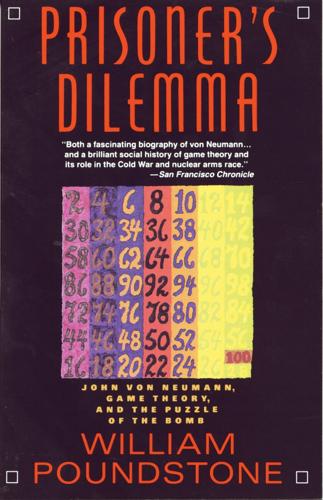
Prisoner's Dilemma: John Von Neumann, Game Theory, and the Puzzle of the Bomb
by
William Poundstone
Published 2 Jan 1993
Judging it difficult to gauge Soviet intentions from official sources of information, RAND made an almost fantastic effort to get inside the Soviet mind. RAND instituted a hermeneutic study of the writings of Lenin and Stalin (The Operational Code of the Politburo) in the hope that this would assist American diplomats in dealing with their Soviet colleagues. They commissioned no less a figure than Margaret Mead to do a study on Soviet attitudes toward authority. One of the most amazing of the Soviet studies was the creation of a doppelgänger Soviet Ministry of Economics in Santa Monica. Using documents captured from the Nazis, RAND created a detailed model of the economy of the U.S.S.R. Many of the social scientists hired or consulted were economists who had fallen under the spell of game theory.

The Knowledge Machine: How Irrationality Created Modern Science
by
Michael Strevens
Published 12 Oct 2020
His subjects were researchers working in the laboratory of the endocrinologist Roger Guillemin—the scientist who was to share the Nobel Prize in Medicine two years later for determining the structure of the brain hormone TRH. At the time, Latour’s “knowledge of science was non-existent,” he later wrote—adding that he was “completely unaware of the social studies of science”—but for these very reasons he was “in the classic position of the ethnographer sent to a completely foreign environment,” like Margaret Mead in the Samoan archipelago or Napoleon Chagnon among the Yanomami of the Amazon rainforest. Latour spent two years inside Guillemin’s knowledge machine at the Salk Institute in San Diego. He found a great wheel, a self-replenishing cycle of being. Into the Guillemin lab came vast quantities of chemicals, animals, and energy, which fueled a complex physical and social process that produced scientific reports by way of “inscription devices” whose function was to “transform pieces of matter into written documents” (Figure 2.6).
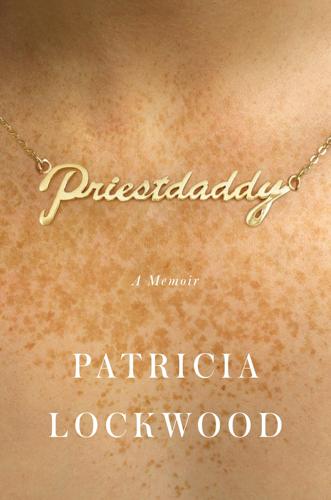
Priestdaddy: A Memoir
by
Patricia Lockwood
Published 1 May 2017
I am even wearing a white dress embroidered with innocent flowers, to remind everyone that some people in the world are pure. I have snuck in contraband, in the form of a notebook. I hide it in my lap, along with a mini golf pencil. At this point, I consider myself on an anthropological mission, much like Margaret Mead. I have discovered that this makes almost anything bearable—it would have been such a salvation in my childhood to think I had been sent on a mission to notice. That would have turned my insubstantiality into something useful, even advantageous. But I am not here to spy, not really. I am here because I promised the seminarian that I would come.
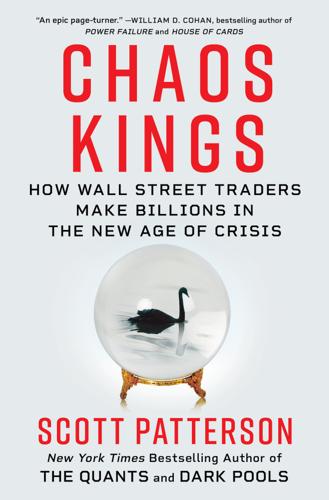
Chaos Kings: How Wall Street Traders Make Billions in the New Age of Crisis
by
Scott Patterson
Published 5 Jun 2023
“But there is also a second way, which takes the exceptional as a starting point and deals with the ordinary in a subordinate manner—simply because that ‘ordinary’ is less consequential.” More often than not, rather than discussing the nature of uncertainty and Black Swans, their conversations revolved around literature, history, art, and the vast array of fascinating people Mandelbrot had encountered during his long career (Margaret Mead, Noam Chomsky, Robert Oppenheimer, Stephen Jay Gould, and John von Neumann, to name a few). Mandelbrot, who died in 2010, would have an outsize influence on The Black Swan. In fact, the book is dedicated to him. But Taleb’s new insights into fractal forces at work in market crashes didn’t help him where it really counted at the time—at Empirica
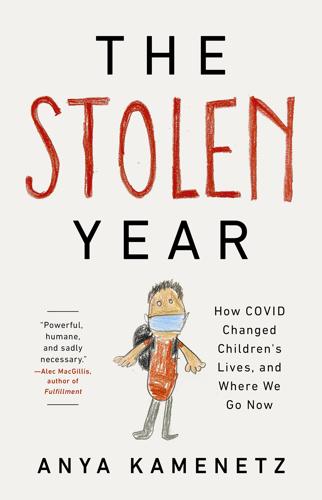
The Stolen Year
by
Anya Kamenetz
Published 23 Aug 2022
To get the food, the feds required communities to provide matching funds and hire permanent staff, including professional nutritionists. Strict nutrition requirements were written into these contracts, as they are to this day. President Roosevelt tapped none other than legendary anthropologist Margaret Mead to create the first Recommended Daily Allowances. She determined that all seven food groups, as she identified them, must be included in each school meal: green and yellow vegetables; oranges, tomatoes, grapefruit, raw cabbage, and salad greens; potatoes and other vegetables and fruit; milk and other milk products; meat, poultry, fish, or eggs, or dried beans, peas, nuts, or peanut butter; bread, flour, and cereals; and butter or fortified margarine.
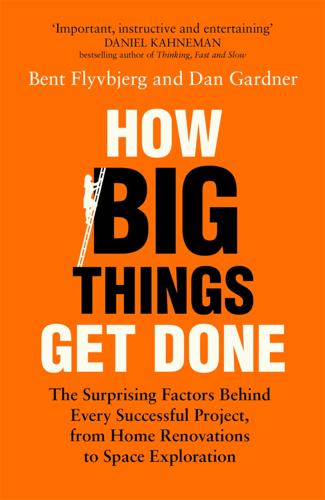
How Big Things Get Done: The Surprising Factors Behind Every Successful Project, From Home Renovations to Space Exploration
by
Bent Flyvbjerg
and
Dan Gardner
Published 16 Feb 2023
In fact, in my experience and in line with the results of behavioral science, people not only tend to naturally look at their projects this way, they tend to exaggerate just how unusual their specific project really is. This is the “uniqueness bias” we encountered in the previous chapter.9 We all have it. It makes us love our kids. But it’s unfortunate in some circumstances because it blinds us from seeing our project in the second way. The cultural anthropologist Margaret Mead supposedly told her students, “You’re absolutely unique, just like everyone else.” Projects are like that. Whatever sets a project apart, it shares other characteristics with projects in its class. An opera house may be one of a kind because of its design and location, but it still has plenty in common with other opera houses, and we can learn a lot about how to construct a particular opera house by looking at opera houses in general and considering our opera house to be “one of those.”The category of opera houses is the reference class.
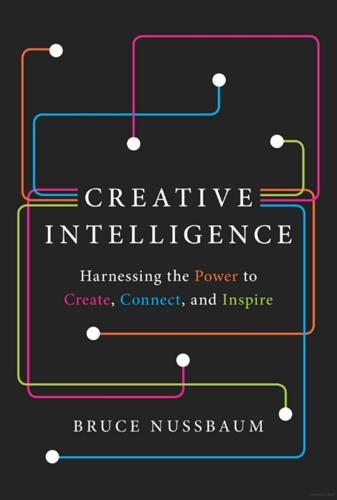
Creative Intelligence: Harnessing the Power to Create, Connect, and Inspire
by
Bruce Nussbaum
Published 5 Mar 2013
These “frames” are there, whether we are aware of them or not, and people with Creative Intelligence have a knack for turning frames a bit to the side, spinning them around, or maybe even tossing them all together, changing the way we view the world and our place in it. Gregory Bateson, a British anthropologist and Margaret Mead’s third husband, is known for originating and applying the term “frame” to the field of sociology in his book Steps to an Ecology of Mind, in 1972. In it, he talks about how he developed his ideas by observing monkeys in a zoo in San Francisco. When monkeys interact, as they do all day long, their playful behavior looks very similar to the way they act during a fight.

How to Run a Government: So That Citizens Benefit and Taxpayers Don't Go Crazy
by
Michael Barber
Published 12 Mar 2015
He is referring to transforming businesses, but it struck me as a concept that was perhaps even more relevant in a government environment. The guiding coalition is not the same as a management team; it’s a shared understanding among seven to ten people in key positions about what needs to be done and how. Margaret Mead once said famously: ‘Never doubt that a small group of thoughtful, committed citizens can change the world. Indeed, it’s the only thing that ever has.’16 In essence, the guiding coalition is the same idea inside a large organization. And it is exactly what Nelson created around him as an admiral.

How Not to Network a Nation: The Uneasy History of the Soviet Internet (Information Policy)
by
Benjamin Peters
Published 2 Jun 2016
The Macy Conferences, as they were informally known, staked out a spacious interdisciplinary purview for cybernetic research.11 In addition to McCulloch, who directed the conferences, a few noted participants included Wiener himself, the mathematician and game theorist John von Neumann, leading anthropologist Margaret Mead and her then husband Gregory Bateson, founding information theorist and engineer Claude Shannon, sociologist-statistician and communication theorist Paul Lazarsfeld, psychologist and computer scientist J.C.R. Licklider, as well as influential psychiatrists, psychoanalysts, and philosophers such as Kurt Lewin, F.S.C.
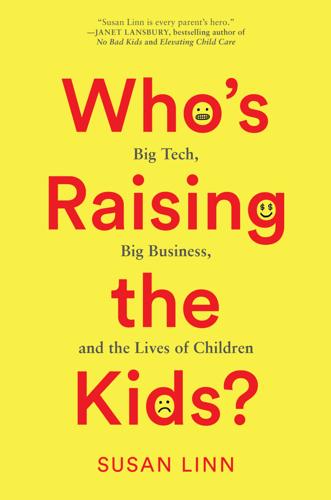
Who’s Raising the Kids?: Big Tech, Big Business, and the Lives of Children
by
Susan Linn
Published 12 Sep 2022
In a society where political candidates rely on corporate donations to fund their campaigns and tech and entertainment companies routinely spend millions each year lobbying elected officials,1 proposed legislation that threatens corporate profits is unlikely to become law without grassroots efforts that start—often years before—with a few people deciding to work together to right some wrong. As the oft-repeated quotation attributed to the twentiethcentury cultural anthropologist Margaret Mead goes, “Never doubt that a small group of committed citizens can change the world. Indeed, it’s the only thing that ever has.” Think about those twelve Quakers in England who, in 1797, decided to end slavery in the British Empire. It took them forty-one years, but they did it.2 Seventy-two years elapsed between the Seneca Falls Women’s Rights Convention in 1848 and the passage of the Nineteenth Amendment, which was ratified by Congress in 1920, giving women in the United States the right to vote.3 The Stonewall uprising took place in 1969 and same-sex marriage wasn’t legalized nationally until 2015.4 Vincent Harding, in his beautiful book There Is a River, links the twentieth-century civil rights movement to the centuries-old rebellions aboard slave ships during the terrible Middle Passage.5 Today’s digitized, commercialized culture is so pervasive and powerful that its influence on children’s values, learning, and relationships is a serious threat—not only to the wellbeing of the kids being targeted but also to the wellbeing of democracy and of the planet.
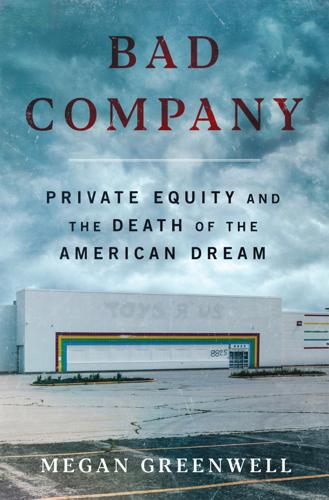
Bad Company
by
Megan Greenwell
Published 18 Apr 2025
But true to form, Vivian was the first to suggest they would never find out unless they tried. “My perspective was, stupidly, that I bet I could build you a pretty darn good bank and run it. How different can a hospital be?” she said later. Roger couldn’t argue with that. He started quoting the anthropologist Margaret Mead—possibly apocryphally, but no less inspirationally—at meetings: “Never doubt that a small group of thoughtful, committed citizens can change the world. Indeed, it is the only thing that ever has.” The first step was to solidify the loosely organized Save Our Riverton Hospital into something resembling a real nonprofit.
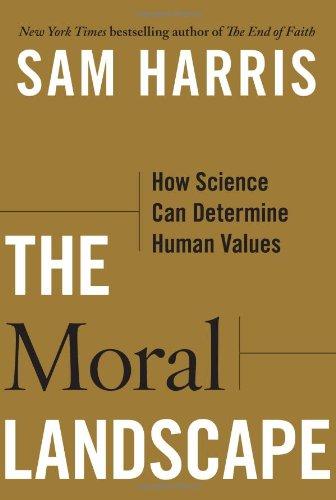
The Moral Landscape: How Science Can Determine Human Values
by
Sam Harris
Published 5 Oct 2010
The disparity between how we think about physical health and mental/societal health reveals a bizarre double standard: one that is predicated on our not knowing—or, rather, on our pretending not to know—anything at all about human well-being. Of course, some anthropologists have refused to follow their colleagues over the cliff. Robert Edgerton performed a book-length exorcism on the myth of the “noble savage,” detailing the ways in which the most influential anthropologists of the 1920s and 1930s—such as Franz Boas, Margaret Mead, and Ruth Benedict—systematically exaggerated the harmony of folk societies and ignored their all too frequent barbarism or reflexively attributed it to the malign influence of colonialists, traders, missionaries, and the like.23 Edgerton details how this romance with mere difference set the course for the entire field.
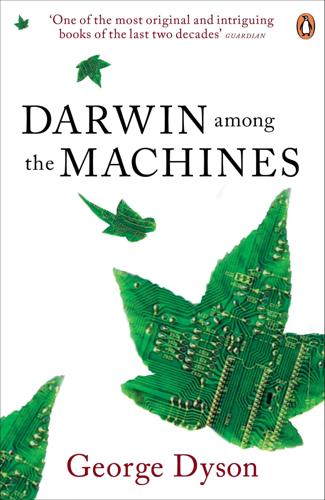
Darwin Among the Machines
by
George Dyson
Published 28 Mar 2012
(New York: Plenum Publishing, 1990), 204. 49.Baran, interview. 50.Paul Baran, Reliable Digital Communications Systems Utilizing Unreliable Network Repeater Nodes, RAND Corporation Memorandum P-1995, 27 May 1960, 1–2. 51.Baran, Digital Communications Systems, 7. 52.Paul Baran, History, Alternative Approaches, and Comparisons, vol. 5 of On Distributed Communications, RAND Corporation Memorandum RM-3097-PR, August 1964, 8. 53.Warren S. McCulloch, in Claude Shannon, “Presentation of a Maze-Solving Machine,” in Heinz von Foerster, Margaret Mead, and H. L. Teuber, eds., Cybernetics: Circular, Causal and Feedback Mechanisms in Biological and Social Systems, Transactions of the Eighth Cybernetics Conference, March 15–16, 1951 (New York: Josiah Macy, Jr., Foundation, 1952); reprinted in N. J. A. Sloane and Aaron D. Wyner eds., Claude Elwood Shannon: Collected Papers (New York: IEEE Press, 1993), 687. 54.Baran, On Distributed Communications, vol. 5, iii. 55.Baran, “Packet Switching,” 209. 56.Baran, On Distributed Communications, vol. 1, 25. 57.Ibid., 24. 58.Ibid., 29. 59.Paul Baran, Security, Secrecy, and Tamper-free Considerations, vol. 9 of On Distributed Communications, RAND Corporation Memorandum RM-3765-PR, August 1964, v. 60.Baran, interview. 61.Ibid. 62.Ibid. 63.Ibid.

In Our Own Image: Savior or Destroyer? The History and Future of Artificial Intelligence
by
George Zarkadakis
Published 7 Mar 2016
The Macy Conferences Frank Fremont-Smith (1895–1974) was an American administrator with a keen interest in the brain and the functioning of the human body.3 He spent the 1930s studying the pioneering work of the American physiologist Walter Canon on homoeostasis. In the early 1940s, he started a discussion group that examined reflexes and hypnosis. Several pioneering scientists attended the group, including Gregory Bateson and Margaret Mead, and they called themselves the ‘Man–Machine Project’. When Fremont-Smith became the Medical Director of the Macy Foundation, he set up a series of annual conferences that expanded the Man–Machine Project. Hosted by the Macy Foundation, these became known as the ‘Macy Conferences on Cybernetics’.

Espresso Tales
by
Alexander McCall Smith
Published 1 Jan 2005
And then he said – and this is the bit that really surprised me – he said: ‘I’m a nudist, you know.’” For a moment there was complete silence. Pat watched Domenica’s reaction. In all the time she had known her, she had not seen her at a loss for words. Now she was. She looked beyond Domenica, to the bookshelf behind her. Margaret Mead, Coming of Age in Samoa; that was all about nakedness and the innocently carnal, was it not? And then there were the books on feral children that rubbed spines with Mead and Pitt-Rivers. Feral children wore no clothes. More nakedness. Why should her neighbour be surprised by nakedness in Edinburgh?

44 Scotland Street
by
Alexander McCall Smith
Published 13 Jun 2005
She had expected her to be something exotic, and an anthropologist seemed about right. “I’ve never met an anthropologist,” she said hesitantly. “It sounds so …” Domenica interrupted her. “Sounds so, but isn’t. Anthropologists are really rather mundane people, for the most part. They used to be interesting in the days of Pitt-Rivers and Margaret Mead and all the others. But now it’s all very dry and technical. And of course they’ve run out of people to study. Everybody is more or less the same these days. I expect that if one went to New Guinea, for example, one would find that all those people who used to have a resident anthropologist attached to them are watching American television through their satellite dishes.
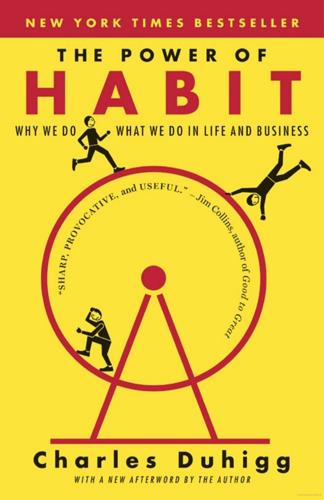
The Power of Habit: Why We Do What We Do in Life and Business
by
Charles Duhigg
Published 1 Jan 2011
“Our farms are short of labor to care for livestock; and on top of it all we must furnish supplies to the British and Russians. Meats and fats are just as much munitions in this war as are tanks and aeroplanes.” Concerned, the Department of Defense approached dozens of the nation’s leading sociologists, psychologists, and anthropologists—including Margaret Mead and Kurt Lewin, who would go on to become celebrity academics—and gave them an assignment: Figure out how to convince Americans to eat organ meats. Get housewives to serve their husbands and children the protein-rich livers, hearts, kidneys, brains, stomachs, and intestines that were left behind after the rib eyes and roast beef went overseas.
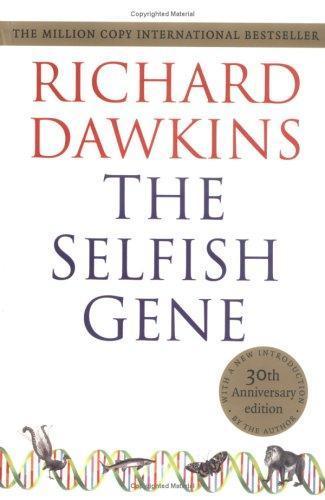
The Selfish Gene
by
Richard Dawkins
Published 1 Jan 1976
These ideas are plausible as far as they go, but I find that they do not begin to square up to the formidable challenge of explaining culture, cultural evolution, and the immense differences between human cultures around the world, from the utter selfishness of the Ik of Uganda, as described by Colin Turnbull, to the gentle altruism of Margaret Mead's Arapesh. I think we have got to start again and go right back to first principles. The argument I shall advance, surprising as it may seem coming from the author of the earlier chapters, is that, for an understanding of the evolution of modern man, we must begin by throwing out the gene as the sole basis of our ideas on evolution.

The Theory of the Leisure Class
by
Thorstein Veblen
Published 10 Oct 2007
Iam fides et pax … Audet: ‘now neglected faith and peace, and ancient honour and shame, dares to return’ (Horace, ‘Carmen Saeculare’). 1 Joseph Dorfman, Thorstein Veblen and His America (New York, 1961), 422. 2 Bernard Rosenberg, Thorstein Veblen (New York, 1963), 1. It is heady to realize that dealing with Veblen’s career prompts paying attention to the disparate work of (among others) Lester Ward, Jacques Loeb, William James, William McDougall, James Frazer, Franz Boas, Margaret Mead, Ruth Benedict, Edward Tylor, Lewis Mumford, Max Weber, Karl Marx, Sigmund Freud, John Maynard Keynes, Charles S. Peirce, George Mead, and John Dewey. Rick Tilman’s The Intellectual Legacy of Thorstein Veblen: Unresolved Issues (Westport, Conn., 1996) makes this point very well, since ‘legacy’ is the key word when it comes to assessing Veblen’s influence over the developing fields of biology, sociology, evolutionary psychology, physiology, political science, and anthropology. 3 The following comments from the Yale Review and the Journal of Political Economy are cited in Dorfman’s Thorstein Veblen and His America, 191–2. 4 Adorno, ‘Veblen’s Attack on Culture’ (1941), cited in Rick Tilman and Jo Lo Simich (eds.), Thorstein Veblen: A Reference Guide (Boston, 1985), 50. 5 After Veblen’s death in 1929, a tabulation of the sales of his ten books over his lifetime revealed that only 40,000 copies were ever sold.

City on the Verge
by
Mark Pendergrast
Published 5 May 2017
—Michael Halicki, executive director, Park Pride “Atlanta is indeed a City on the Verge, as Mark Pendergrast observes—it aspires to remake itself into a vital, sustainable, livable mecca. Pendergrast weaves together lessons in urban design, local politics, history, and human nature that pull the reader in like a mystery. His book reinforces the famous Margaret Meade quote about the ability of a small group of dedicated people to bring about change.” —Dennis Creech, cofounder, Southface Energy Institute GLOSSARY Below are names, acronyms, and definitions for organizations discussed in this book. Area median income (AMI): frequently used in reference to affordable housing.

Visual Thinking: The Hidden Gifts of People Who Think in Pictures, Patterns, and Abstractions
by
Temple Grandin, Ph.d.
Published 11 Oct 2022
I believed that if I surveyed enough people, asking the same questions designed to reveal how they accessed visual memory, I could build a database of people out there who thought like me. Neurologist and author Oliver Sacks picked up on this propensity of mine to gather information and wrote about it in a New Yorker article that then became the title of his book An Anthropologist on Mars. It was an accurate description of how I make sense of the world. I’m like Margaret Mead among so-called normal, or “neurotypical,” people. In lieu of certain kinds of social connection, I’m more comfortable studying the ways and habits of people. “Fitting in” is a complicated business. I didn’t realize it then, but in searching for fellow visual thinkers through my survey, I was also searching for my tribe.
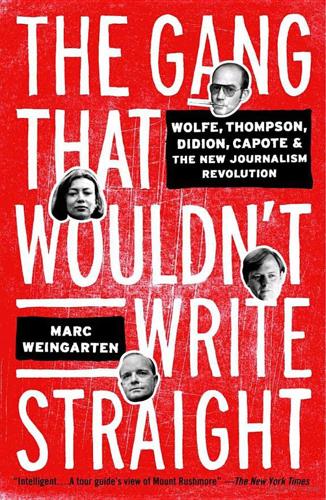
The Gang That Wouldn't Write Straight: Wolfe, Thompson, Didion, Capote, and the New Journalism Revolution
by
Marc Weingarten
Published 12 Dec 2006
Wolfe now had the Labor Day party scene in hand, as well as the rape, which Thompson had also written about in his book. Using Thompson’s research as well as Kesey’s extensive archive—diaries, photographs, correspondence, the Acid Test movie reels, and a forty-five-hour mass of film of the Pranksters’ tour on the Furthur bus from La Honda to New York—Wolfe would meticulously piece the story together like Margaret Mead among the Samoans. “The movies that Kesey had were hardly great cinema,” said Wolfe. “But they allowed me to describe scenes, the clothes that people were wearing. And those strange diaries were quite useful, too.” But just as Wolfe was about to start the book, Tom senior was hospitalized with asymptomatic myocardial endocarditis, an inflammation of the lining of the heart.
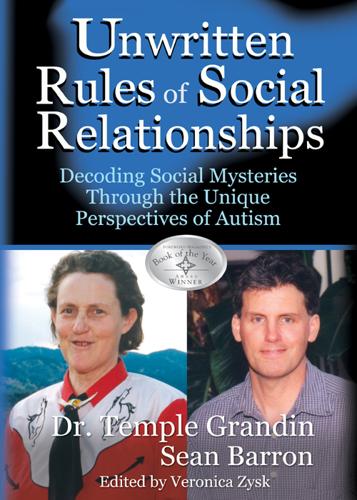
The Unwritten Rules of Social Relationships: Decoding Social Mysteries Through the Unique Perspectives of Autism
by
Temple Grandin
and
Sean Barron
Published 30 Sep 2012
The more colors on our palette, the more beautiful the world we can create. We each have much to share. If we are to achieve a richer culture, rich in contrasting values, we must recognize the whole gamut of human potentialities, and so weave a less arbitrary social fabric, one in which each diverse human gift will find a fitting place. Margaret Mead Temple Grandin Sean Barron July 2005 ACT ONE Two Perspectives on Social Thinking Scene One My World is What I Do By Temple Grandin When I was a child I was a big fan of Superman and The Lone Ranger. These television shows had clear-cut values of right and wrong. Good guys fought bad guys and good guys won.

Greater: Britain After the Storm
by
Penny Mordaunt
and
Chris Lewis
Published 19 May 2021
Even uncontroversial new ideas begin life as a minority voice. Philosopher and political economist John Stuart Mill warned against the ‘tyranny of the majority’.2 This is an important concept in democracy and one that governments with big majorities should be sensitive to. As American anthropologist Margaret Mead agreed: ‘Never doubt that a small group of thoughtful, committed citizens can change the world; indeed, it’s the only thing that ever has.’3 Does anyone seriously think the warnings of global warming would ever have come to light from climate scientists within totalitarian regimes? Or that institutional wrongdoing would ever be exposed by state-controlled media?
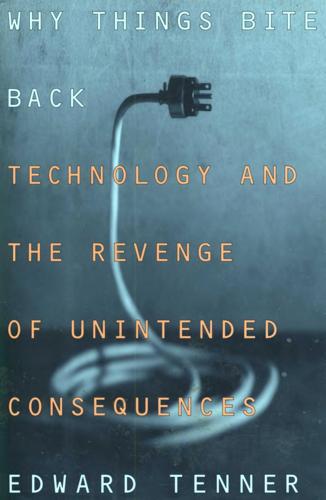
Why Things Bite Back: Technology and the Revenge of Unintended Consequences
by
Edward Tenner
Published 1 Sep 1997
Otto Neurath, a philosopher of the Vienna School, even founded an Isotype Institute, continued by his wife, to supply humanity and especially education with a universal iconic language. One of his disciples, a lawyer named Rudolf Modley, emigrated to the United States and founded the Pictograph Corporation, designing charts that conveyed information vividly and 4 - 15 almost without words. Modley later collaborated with the anthropologist Margaret Mead and influenced generations of graphic designers. With growing regional and global movements of population, roadsides and airports sprout signs using standardized, international pictographs in addition to (or entirely in place of) texts in one or more languages. Computer icons have the advantage of being more readily recognizable and distinguishable than strings of text.

Stolen Focus: Why You Can't Pay Attention--And How to Think Deeply Again
by
Johann Hari
Published 25 Jan 2022
Often, when a person argues for social change, they are called “naive.” The exact opposite is the truth. It’s naive to think we as citizens can do nothing, and leave the powerful to do whatever they want, and somehow our attention will survive. There’s nothing naive about believing that concerted democratic campaigning can change the world. As the anthropologist Margaret Mead said: “It’s the only thing that ever has.” I realized that we have to decide now: Do we value attention and focus? Does being able to think deeply matter to us? Do we want it for our children? If we do, then we have to fight for it. As one politician said: “You don’t get what you don’t fight for

The Red Queen: Sex and the Evolution of Human Nature
by
Matt Ridley
Published 14 Aug 1993
The reason men find young women more sexually attractive than old women must be because their culture teaches them subtly that they must favour youth, not because their ancestors left more descendants if they had an innate preference for youth.7 Anthropology’s turn was next. With the publication of Margaret Mead’s Coming of Age in Samoa in 1928, the discipline was transformed. Mead asserted that sexual and cultural variety was effectively infinite and was therefore the product of nurture. She did little to prove nurture’s predominance – indeed what empirical evidence Mead did adduce was largely, it now seems, wishful thinking8 – but she shifted the burden of proof.
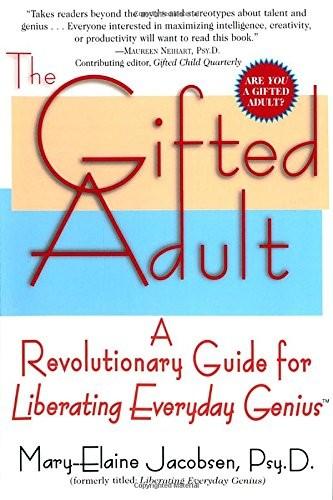
The Gifted Adult: A Revolutionary Guide for Liberating Everyday Genius(tm)
by
Mary-Elaine Jacobsen
Published 2 Nov 1999
It is critical that we resist society’s attempts to excise or cure what instead should be honored and cultivated. Humanity as a whole cannot afford to forfeit what the Everyday Geniuses have to offer. 3 THE EVERYDAY GENIUS: LOST AND FOUND From a hundred cultures, [there is] one culture which does what no culture has ever done before—gives a place to every human gift. —Margaret Mead THE UGLY DUCKLING It was a lovely summer day in the country. The oats were still green and the wheat stood golden and tall. Down in the meadow the hay was piled into sturdy stacks. In the bright rays of the sunshine an old manor house with a deep moat surrounding it stood with burdock growing from its heavy walls all the way down to the edge of the water.
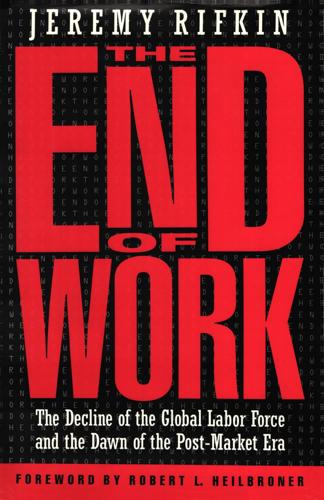
The End of Work
by
Jeremy Rifkin
Published 28 Dec 1994
Here he stretches himself, as he rarely does on the job, by working with others for common non-profit ends."12 The independent sector is the bonding force, the social glue that helps unite the diverse interests of the American people into a cohesive social identity. If there is a single defining characteristic that sums up the unique qualities of being an American, it would be our capacity to join together in voluntary associations to serve one another. The anthropologist Margaret Mead once remarked, "If you look closely you will see that almost anything that really matters to us, anything that embodies our deepest commitment to the way human life should be lived and cared for, depends on some form-often many forms-of volunteerism."13 Yet strangely enough, this central aspect of the American character and experience is little examined in the history and sociology textbooks used in our nation's high schools and colleges.
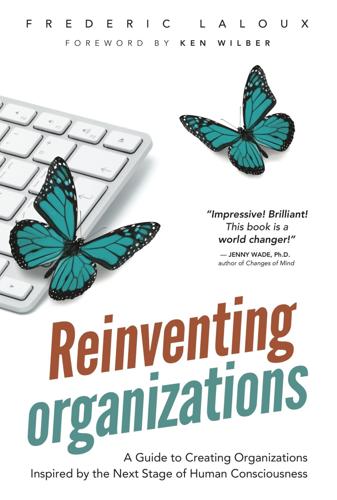
Reinventing Organizations: A Guide to Creating Organizations Inspired by the Next Stage of Human Consciousness
by
Frederic Laloux
and
Ken Wilber
Published 9 Feb 2014
If we are to overcome the daunting problems of our times, we will need new types of organizations—more purposeful businesses, more soulful schools, more productive nonprofits. Anybody breaking out of the mold and venturing into the new is likely to meet resistance, to be called an idealist or a fool. Anthropologist Margaret Meade once said, “Never underestimate the power of a few committed people to change the world. Indeed, it is the only thing that ever has.” If you are one of them, if you feel called to create a radically more soulful, purposeful, and productive workplace, then I hope that this book will provide you with some extra confidence that it can be done.

The Streets Were Paved With Gold
by
Ken Auletta
Published 14 Jul 1980
Though Candidate Koch suggested he would reduce “excessive” city taxes, Mayor Koch’s four-year recovery plan called for no such reduction. And, as noted earlier, the tax bite was steeper in 1978 than in 1975. By 1978, the most dangerous people in New York were the same as they were in 1975 and before: those who acted as if they believed the horse thief. Or as Margaret Mead, thinking in a world context, once said, “If we build … thinking in too rosy terms, people will become apathetic and not do the things that need to be done. We have to realize that everything we say about the future will influence the future.” It is hard to be sanguine about the city’s future when we recall that there were, in the spring of 1978, 25,000 abandoned buildings or lots, each no longer paying property taxes.
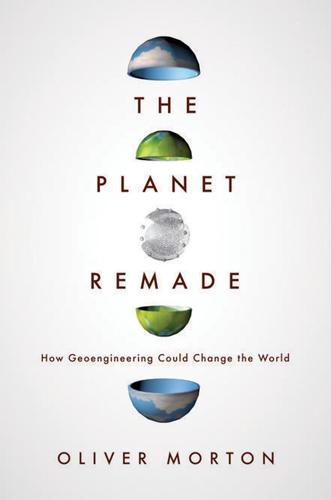
The Planet Remade: How Geoengineering Could Change the World
by
Oliver Morton
Published 26 Sep 2015
What of the second campaign to save the world which I earlier claimed had flowed from the same science as TTAPS? It was much less high-profile, but arguably considerably more successful. In the three decades since the Alvarez paper made stratospheric shrouds a subject for concern, this second campaign made the Earth a significantly – though not noticeably – safer place. The anthropologist Margaret Mead famously said that one should ‘never doubt that a small group of thoughtful, committed citizens can change the world; indeed, it’s the only thing that ever has’. I don’t actually believe this, though I can see the sentiment’s attraction. But if I did, it would be to the clique at the heart of this second campaign that I would point as evidence.
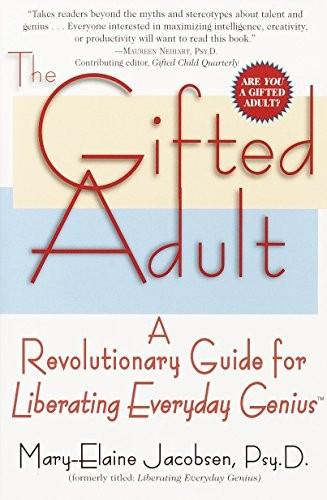
The Gifted Adult: A Revolutionary Guide for Liberating Everyday Genius(tm)
by
Mary-Elaine Jacobsen
Published 18 Feb 2015
It is critical that we resist society’s attempts to excise or cure what instead should be honored and cultivated. Humanity as a whole cannot afford to forfeit what the Everyday Geniuses have to offer. 3 THE EVERYDAY GENIUS: LOST AND FOUND From a hundred cultures, [there is] one culture which does what no culture has ever done before—gives a place to every human gift. —Margaret Mead THE UGLY DUCKLING It was a lovely summer day in the country. The oats were still green and the wheat stood golden and tall. Down in the meadow the hay was piled into sturdy stacks. In the bright rays of the sunshine an old manor house with a deep moat surrounding it stood with burdock growing from its heavy walls all the way down to the edge of the water.

Make Your Own Job: How the Entrepreneurial Work Ethic Exhausted America
by
Erik Baker
Published 13 Jan 2025
“People may say that all Murdock is interested in is making money,” remarked construction magnate David Murdock, speaking of himself in the third person. “That’s not true. I’m interested in creating things, for creativity is the life of the world.”84 The task for the United States in the postwar era, the anthropologist Margaret Mead claimed in her popular 1943 book And Keep Your Powder Dry, was nothing less than “building the world new.”85 That was a task that Sun Belt entrepreneurs took upon themselves with uncommon zeal. They saw themselves as builders, creators—a Promethean master race. “These are good people; good-looking, healthy, superior Americans,” the writer Westbrook Pegler reported after a 1960 visit to Phoenix.
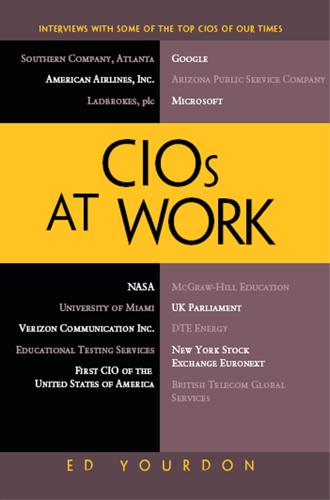
CIOs at Work
by
Ed Yourdon
Published 19 Jul 2011
Bohlen: Because the information is so pervasive that the parents are no longer, or the grandparents or the nuclear family, may no longer be the source of information, and I think we’re seeing that more and more as the new generation comes up. So I’m looking at humanity as an experiment and saying, “well, what’s going to happen here?” because we’ve changed the very knowledge transfer of nuclear families. Yourdon: There’s a set of terms, vocabulary from an anthropologist, Margaret Mead, about a postfigurative, cofigureative, and prefigurative culture. Her point was that a couple of generations ago, it was just taken for granted that children would learn from their parents, much as you just said. And then there was a shift where the older and younger generations have to learn at the same time.

Pacific: Silicon Chips and Surfboards, Coral Reefs and Atom Bombs, Brutal Dictators, Fading Empires, and the Coming Collision of the World's Superpowers
by
Simon Winchester
Published 27 Oct 2015
Under its rubric, three island camps were opened to accommodate the hopeful masses, and all remain busily active today. One is on Christmas Island, an Australian territory in the Indian Ocean. Two others are on foreign-owned islands, and the Australians pay to have them there. One is in Papua New Guinea, on the Admiralty Island of Manus, which was made briefly famous by Margaret Mead, who lived in its rain forests after World War II. The other is on the former phosphate-rich equatorial Pacific island of Nauru, which in the 1960s claimed to be the richest per capita state on the planet, but which is now a devastated wreck—a played-out environmental disaster zone; an independent state associated mainly with flagrant corruption, money laundering, a population of nine thousand, and, in recent years, the third of the Australian detention centers for would-be immigrants.
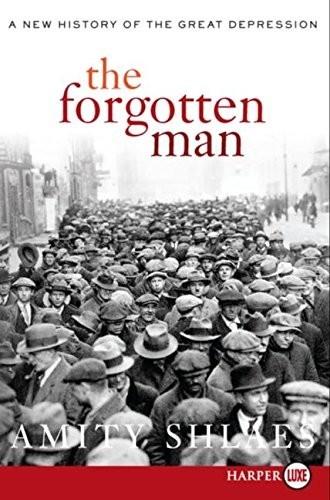
The Forgotten Man
by
Amity Shlaes
Published 25 Jun 2007
From the 1950s, he served on the planning commission of his town, Redding, Connecticut. In the 1960s he strongly supported President Lyndon Johnson’s Great Society programs. In 1961 Chase traveled to the Soviet Union with the singer Marian Anderson, the publisher of the Encyclopaedia Britannica, William Benton, the anthropologist Margaret Mead, and other intellectual and cultural figures to meet with Soviet citizens in the hopes of improving understanding between Moscow and Washington. Chase died in 1985, at age ninety-seven. Despite his age—he was turning nearly fifty—Paul Douglas enlisted in the Marine Corps as a private during World War II.

Consumed: How Markets Corrupt Children, Infantilize Adults, and Swallow Citizens Whole
by
Benjamin R. Barber
Published 1 Jan 2007
For trademarks still hued fairly closely to generic products and services and would prove insufficient to the task of awakening desires people didn’t know they had. To do this would require enlisting emotion and imagination in the service of the new mass consumer society which was producing goods faster than it could produce a palpable sense of need for them. As early as 1901, anthropologist Margaret Mead’s mother, an advertising expert named Emily Fogg Mead, had grasped that what was required for consumer capitalism to succeed was the “diffusion of ‘desire’ throughout the entire population.” Defending the new business of advertising, Mead—sounding remarkably like Saatchi & Saatchi CEO Kevin Roberts a century later—enthused “we are not concerned with the ability to pay, but with the ability to want and choose,” which means opening up “imagination and emotion to desire.”23 A contemporary of Fogg’s draws the obvious conclusion: “Without imagination, no wants, without wants, no demand to have them supplied.”24 Here was the critical transition from capitalism as a production-based system where saving was the leading virtue, to capitalism as a consumption-based system where spending would become the leading virtue; the transition from a necessity driven and static rural life to a mobile and urban discretionary culture of “the automobile and airplane, motion pictures and radio, the electric light and appliances, bottled soft drinks and canned soups.”25 A transition, in other words, from a system that serviced wants to a system that produced wants.

Bleeding Edge: A Novel
by
Thomas Pynchon
Published 16 Sep 2013
“No more Rachel, huh?” “Moving on.” Heidi does a fast drop-by, done up in a tropical-weight beige dress, short tousled darkish wig, glasses with oversize wire rims, and a strange plastic perhaps glow-in-the-dark lei hanging around her neck. “You look dimly familiar,” Maxine greets her, “you would be . . . ?” “Margaret Mead,” Heidi replies. “Taking my anthro plunge into the urban primitive tonight, babe, it’s all out there and I’m totally immersing in it. Dig what I found down on Canal Street.” “Open up your hand, I can’t see it, what is it?” “Digital camcorder, usually you can only find these in Japan. Hours of battery time, and I’m bringing spares, so I can record all night.”
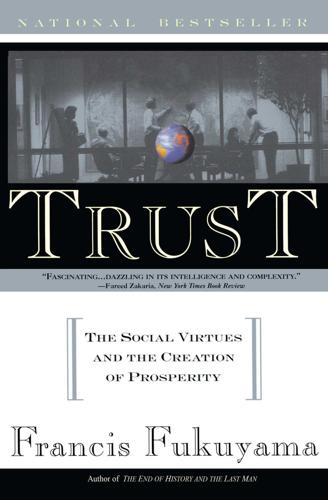
Trust: The Social Virtue and the Creation of Prosperity
by
Francis Fukuyama
Published 1 Jan 1995
See Jean-Charles Asselain, Histoire économique de la France du XVIIIe siècle ànos jours, vol. 1: De l’Ancien Régime à la Première Guene mondiale (Paris: Editions du Seuil, 1984), pp. 13-19. 15On this point, see Charles Kindleberger, “The Postwar Resurgence of the French Economy,” in Hoffmann and Kindelberger (1963), p. 120. 16Kindleberger in Hoffmann and Kindelberger (1963), p. 136. 17On the issue of adoption, see Rhoda Metraux and Margaret Mead, Themes in French Culture: A Preface to a Study of French Community (Stanford: Stanford University Press, 1954), pp. 3-4, 69-84. 18Michel Crozier, The Bureaucratic Phenomenon (Chicago: University of Chicago Press, 1964), pp. 213-214. 19Crozier (1964), p. 216. 20Crozier (1964), p. 217. 21On this phenomenon, see Stanley Hoffmann, Decline or Renewal?

Scale: The Universal Laws of Growth, Innovation, Sustainability, and the Pace of Life in Organisms, Cities, Economies, and Companies
by
Geoffrey West
Published 15 May 2017
But like everything else, ideas and the innovations they inspire require energy, and lots of it, to support the smart individuals who are thinking and to provide the appropriately stimulating environments and collective experiences we institutionalize in places such as universities, laboratories, parliaments, cafés, concert halls, and conference venues. The very essence of this is embodied in the concept of the city and of urban life. This was aptly expressed by the famous anthropologist Margaret Mead, who observed: “The city as a center where, any day in any year, there may be a fresh encounter with a new talent, a keen mind or a gifted specialist—this is essential to the life of a country.” Indeed, cities have evolved as the engine we invented for enhancing and facilitating social interaction, thereby stimulating idea creation and innovation.
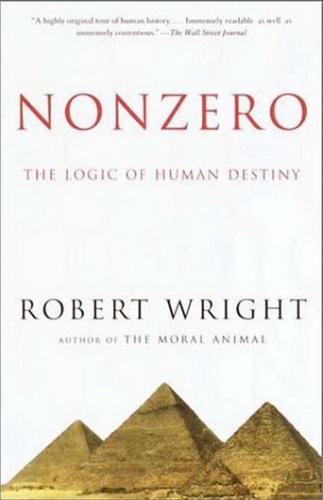
The Moral Animal: Evolutionary Psychology and Everyday Life
by
Robert Wright
Published 1 Jan 1994
TRENDS BECOME UNTRENDY During the early twentieth century, the conventional wisdom changed. The ranking of some societies as “higher” than others seemed increasingly unsavory, especially to scholars on the left. In anthropology, the eminent Franz Boas led an assault on the idea that human cultures tend to move in any particular direction. His most famous student, Margaret Mead, would later summarize the Boasian credo: “We have stood out against any grading of cultures in hierarchical systems which would place our own culture at the top and place the other cultures of the world in a descending scale according to the extent that they differ from ours. . . . We have stood out for a sort of democracy of cultures, a concept which would naturally take its place beside the other great democratic beliefs.”
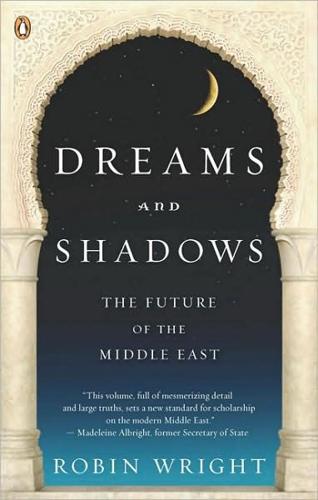
Dreams and Shadows: The Future of the Middle East
by
Robin Wright
Published 28 Feb 2008
TWO EGYPT The Turning Points We are usually convinced more easily by reasons we have found ourselves than by those which have occurred to others. —FRENCH PHILOSOPHER BLAISE PASCAL Never doubt that a small group of thoughtful committed citizens can change the world. Indeed, it is the only thing that ever has. —AMERICAN ANTHROPOLOGIST MARGARET MEAD However powerful the forces of history, the precise catalysts of change are often unpredictable. So, too, are its agents. To understand how change is picking up momentum in the Middle East, I went to see Ghada Shahbender in Cairo. At age forty-two, Shahbender was a middle-aged soccer mom with four teenagers.
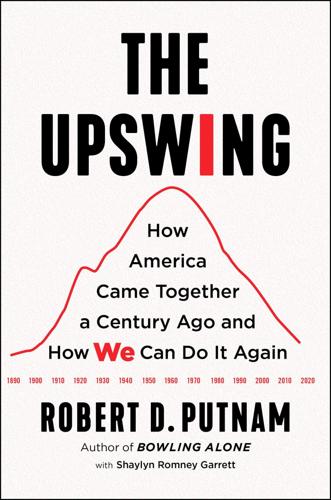
The Upswing: How America Came Together a Century Ago and How We Can Do It Again
by
Robert D. Putnam
Published 12 Oct 2020
Women have, by and large, had greater and more lasting success at participating in the “we” and gaining from its benefits than have African Americans generally, or African American women, who experience multiple dimensions of disadvantage.85 Indeed, there is still more work to do for all women to be able to make their full contribution to the American project. And in important ways the path forward remains fraught. In 1965, the Report on the Status of Women created by President Kennedy’s commission was turned into a widely read, mass-market book. It included both an introduction and an epilogue written by the famed anthropologist Margaret Mead. She noted that the report and its recommendations left two key issues unresolved. First, the question of who would handle the “very important aspects of home life” once women had achieved equal participation in the workforce. Second, the divide between the advancement of educated women and the poverty and stagnation of the women who worked for them.
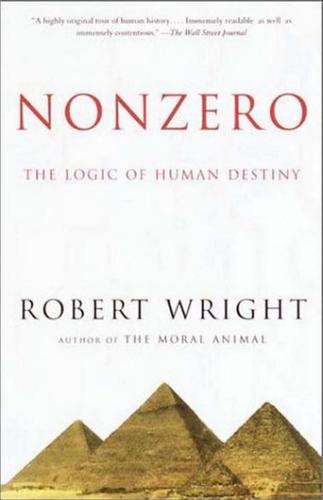
Nonzero: The Logic of Human Destiny
by
Robert Wright
Published 28 Dec 2010
TRENDS BECOME UNTRENDY During the early twentieth century, the conventional wisdom changed. The ranking of some societies as “higher” than others seemed increasingly unsavory, especially to scholars on the left. In anthropology, the eminent Franz Boas led an assault on the idea that human cultures tend to move in any particular direction. His most famous student, Margaret Mead, would later summarize the Boasian credo: “We have stood out against any grading of cultures in hierarchical systems which would place our own culture at the top and place the other cultures of the world in a descending scale according to the extent that they differ from ours. . . . We have stood out for a sort of democracy of cultures, a concept which would naturally take its place beside the other great democratic beliefs.”

The Better Angels of Our Nature: Why Violence Has Declined
by
Steven Pinker
Published 24 Sep 2012
Dictionaries warn against using the word savage (related to sylvan, “of the forest”) to refer to native peoples, and our awareness of the genocides of Native Americans perpetrated by European colonists makes the signatories seem like a black pot in a glass house casting the first stone. A modern concern with the dignity and rights of all peoples inhibits us from speaking too frankly about rates of violence in preliterate peoples, and the “anthropologists of peace” have worked to give them a Rousseauian image makeover. Margaret Mead, for example, described the Chambri of New Guinea as a sex-reversed culture because the men were adorned with makeup and curls, omitting the fact that they had to earn the right to these supposedly effeminate decorations by killing a member of an enemy tribe.29 Anthropologists who did not get with the program found themselves barred from the territories in which they had worked, denounced in manifestoes by their professional societies, slapped with libel lawsuits, and even accused of genocide.30 To be sure, it is easy to come away from tribal battles with the impression that they are fairly harmless in comparison with modern warfare.
…
Homicide trends in the United States. http://bjs.ojp.usdoj.gov/content/homicide/homtrnd.cfm. Francis, N., & Kučera, H. 1982. Frequency analysis of English usage: Lexicon and grammar. Boston: Houghton Mifflin. Frank, R. H. 1988. Passions within reason: The strategic role of the emotions. New York: Norton. Freeman, D. 1999. The fateful hoaxing of Margaret Mead: A historical analysis of her Samoan research. Boulder, Colo.: Westview Press. French Ministry of Foreign Affairs. 2007. The death penalty in France. http://ambafrance-us.org/IMG/pdf/Death_penalty.pdf. Fukuyama, F. 1989. The end of history? National Interest, Summer. Fukuyama, F. 1999. The great disruption: Human nature and the reconstitution of social order.
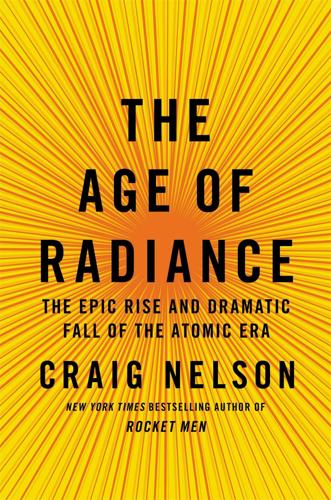
The Age of Radiance: The Epic Rise and Dramatic Fall of the Atomic Era
by
Craig Nelson
Published 25 Mar 2014
LeMay was determined that it wasn’t going to be a navy program, it wasn’t going to be a joint navy–air force program, it was going to be an air force program.” At various times, employing a cavalcade of American intellects, including John Forbes Nash Jr., Donald Rumsfeld, Daniel Ellsberg, Francis Fukuyama, Condoleezza Rice, Henry Kissinger, and Margaret Mead, RAND followed a state-of-the-art curriculum in assessing the future of war. At its very birth the agency was dead right about Sputnik, but over the ensuing decades it would be dead wrong about almost everything else. While the CIA reported during the Eisenhower administration that the Russians had fewer than fifty ICBMs, RAND insisted they had over five hundred and fed enough backing data to presidential candidate John Kennedy’s staff on this “missile gap” that it could be used in his campaign against Richard Nixon.

Space Odyssey: Stanley Kubrick, Arthur C. Clarke, and the Making of a Masterpiece
by
Michael Benson
Published 2 Apr 2018
In a shot Kubrick captured but didn’t use, HAL’s eye—previously alive with it usual glowing red cornea and yellow iris—had gone black and cold by the end of the scene. • • • Early in preproduction, Kubrick had conceived of a documentary prologue, designed to protect 2001 from the kind of misunderstandings engendered by the then prevalent Buck Rogers and Little Green Men school of science fiction. Featuring eminent scientists such as Freeman Dyson, Margaret Mead, B. F. Skinner, and eighteen other leading researchers discussing such subjects as extraterrestrial life, space travel, and communication between alien civilizations, the prologue was entrusted to Roger Caras and was actually shot, on black-and-white 35-millimeter, throughout 1965. Caras even traveled to Moscow to film the eminent Russian biochemist Alexander Oparin, author of the influential “primordial soup” theory of life’s evolution.
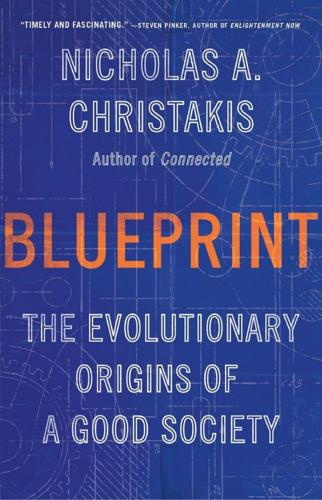
Blueprint: The Evolutionary Origins of a Good Society
by
Nicholas A. Christakis
Published 26 Mar 2019
But these different agendas—searching for consistency or studying variation—should be seen as complementary, rather than opposing, ways of studying natural phenomena, including our species, scientifically. In the first half of the twentieth century, social scientists such as Émile Durkheim, Franz Boas, Margaret Mead, and Ruth Benedict held that culture could not be explained by psychological or inherited biological traits. Culture was seen as something deliberately and thoughtfully produced by humans and not reducible to deeper causes.17 In the 1970s, cultural anthropologist Clifford Geertz argued that, while underlying universals did exist, they were uninteresting in comparison to the variegated ways in which such traits found expression.

New York 2140
by
Kim Stanley Robinson
Published 14 Mar 2017
And by the time we got to that future point, I figured either she would have seen through me and broken up with me, or I would have caught a cancer and died, or more likely she would die and leave me bereft and seeking consolation with some thirty-year-old. I would be like one of those horrible Margaret Mead–Robert Heinlein line marriages and first marry someone way too old for me, then someone way too young. It sounded awful, but what was I going to do? Some people get lucky and partner up with someone the same age, they know the same songs, have the same references and all that, good for them! But for the rest of us it’s catch-as-catch-can.
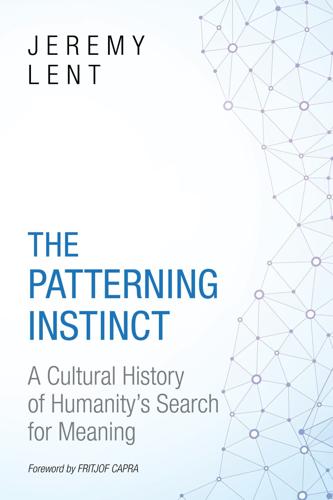
The Patterning Instinct: A Cultural History of Humanity's Search for Meaning
by
Jeremy Lent
Published 22 May 2017
Political scientists have studied the history of all campaigns across the world since 1900 that led to government overthrow or territorial liberation, and they've discovered that no campaign failed once it achieved the active and sustained participation of just 3.5 percent of the population. This finding gives scientific backing to the inspiring words of Margaret Mead: “Never deny the power of a small group of committed individuals to change the world. Indeed that is the only thing that ever has.”90 Choosing Our Future What would the latter part of this century look like if our global civilization took the path of a Great Transformation? We can be sure it would contain much that's currently unimagined.
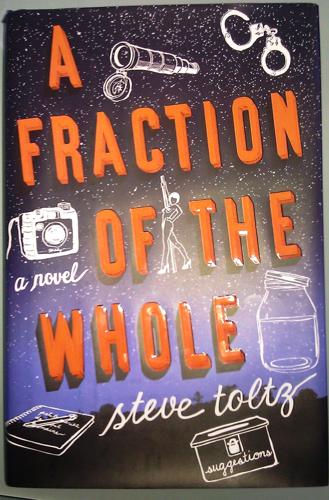
A Fraction of the Whole
by
Steve Toltz
Published 12 Feb 2008
He seemed especially to favor any writer who was a pessimist, a nihilist, or a cynic, including Celine, Bernhard, and the ultimate pessimist-poet, James Thomson, with his darkly frightening "The City of Dreadful Night." "Where are the women?" I asked Dad. "Didn't they think anything worth writing down?" The next night I found Virginia Woolf, George Sand, Ayn Rand, Gertrude Stein, Dorothy Parker, Simone de Beauvoir, Simone Weil, Mary McCarthy, Margaret Mead, Hannah Arendt, and Susan Sontag waiting on my pillow. In this way I was not self-educated so much as I was force-fed, and in truth I liked them all well enough. The Greeks, for example, had fine ideas about how to run a society that are still valid today, especially if you think slavery is wonderful.

Tools of Titans: The Tactics, Routines, and Habits of Billionaires, Icons, and World-Class Performers
by
Timothy Ferriss
Published 6 Dec 2016
.: The Oxford Book of Aphorisms (John Gross), Daily Rituals: How Artists Work (Mason Currey), Easy Riders, Raging Bulls: How the Sex-Drugs-and-Rock ’N’ Roll Generation Saved Hollywood (Peter Biskind), The Big Book of New American Humor; The Big Book of Jewish Humor (William Novak and Moshe Waldoks) Ohanian, Alexis: Founders at Work: Stories of Startups’ Early Days (Jessica Livingston), Masters of Doom: How Two Guys Created an Empire and Transformed Pop Culture (David Kushner) Palmer, Amanda: Dropping Ashes on the Buddha: The Teachings of Zen Master Seung Sahn; Only Don’t Know: Selected Teaching Letters of Zen Master Seung Sahn (Seung Sahn), A Short History of Nearly Everything (Bill Bryson) Paul, Caroline: The Things They Carried (Tim O’Brien), The Dog Stars (Peter Heller) Polanco, Martin: The Journey Home (Radhanath Swami), Ibogaine Explained (Peter Frank), Tryptamine Palace: 5-MeO-DMT and the Sonoran Desert Toad (James Oroc) Poliquin, Charles: The ONE Thing (Gary Keller and Jay Papasan), 59 Seconds: Change Your Life in Under a Minute (Richard Wiseman), The Checklist Manifesto (Atul Gawande), Bad Science (Ben Goldacre), Life 101: Everything We Wish We Had Learned about Life in School—But Didn’t (Peter McWilliams) Popova, Maria: Still Writing (Dani Shapiro), On the Shortness of Life (Seneca), The Republic (Plato), On the Move: A Life (Oliver Sacks), The Journal of Henry David Thoreau, 1837–1861 (Henry David Thoreau), A Rap on Race (Margaret Mead and James Baldwin), On Science, Necessity and the Love of God: Essays (Simone Weil), Stumbling on Happiness (Daniel Gilbert), Desert Solitaire: A Season in the Wilderness (Edward Abbey), Gathering Moss (Robin Wall Kimmerer), The Essential Scratch & Sniff Guide to Becoming a Wine Expert (Richard Betts) Potts, Rolf: Leaves of Grass (Walt Whitman), Writing Tools: 50 Essential Strategies for Every Writer (Roy Peter Clark), To Show and to Tell: The Craft of Literary Nonfiction (Phillip Lopate), Screenplay: The Foundations of Screenwriting (Syd Field), Story (Robert McKee), Alien vs.
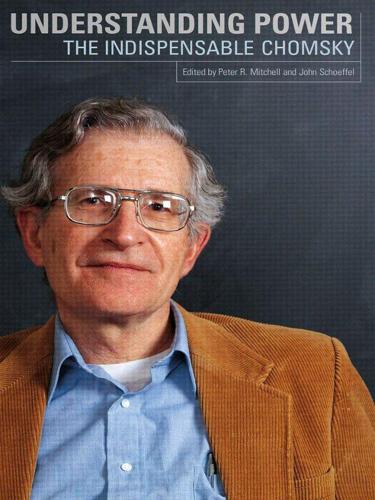
Understanding Power
by
Noam Chomsky
Published 26 Jul 2010
In the late 1940s, the United States just ran it completely—international relations of power were such that the U.S. just gave the orders and everybody followed, because the rest of the world was smashed up and starving after the Second World War. And at the time, everybody here loved the U.N., because it always went along with us: every way we told countries to vote, they voted. Actually, when I was a graduate student around 1950, major social scientists, people like Margaret Mead, were trying to explain why the Russians were always saying “no” at the U.N.—because here was the United States putting through these resolutions and everybody was voting “yes,” then the Russians would stand up and say “no.” So of course they went to the experts, the social scientists, to figure it out.
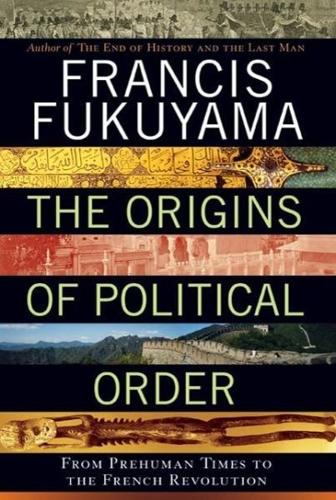
The Origins of Political Order: From Prehuman Times to the French Revolution
by
Francis Fukuyama
Published 11 Apr 2011
Methodologically, ethnographers should immerse themselves in the societies they examined, evaluating their internal logic and divesting themselves of prejudices based on their own cultural backgrounds. Through the practice of what Clifford Geertz later labeled “thick description,” different societies could only be described, not compared to one another or ranked in any way.5 Boas’s students Alfred Kroeber, Margaret Mead, and Ruth Benedict then went on to reshape the discipline of cultural anthropology in a nonjudgmental, relativistic, and decidedly nonevolutionary direction. Early evolutionary theories, including those of Marx and Engels, had other problems. They often posited a relatively linear and rigid progression of social forms, in which one stage of development necessarily preceded the one following, and in which one factor (like Marx’s “mode of production”) determined the characteristics of the stage as a whole.
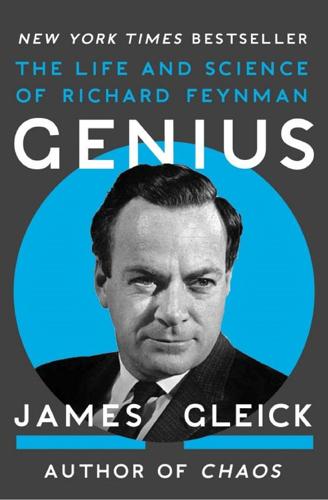
Genius: The Life and Science of Richard Feynman
by
James Gleick
Published 1 Jan 1992
He haunted the Miramar Hotel’s outdoor patio bar, where he socialized with an ever-changing group of expatriate Americans and Englishmen. He took out Pan American stewardesses, who stayed on the Miramar’s fourth floor between flights. And in an act of rash abandon he proposed marriage, by mail, to a woman he had dated at Cornell. Alas, the Love of Women! The popular anthropologist Margaret Mead had recently reported what so many popular magazines were already noticing: that the courtship rituals of American culture were in ferment. Mead examined billboard advertisements and motion-picture plots and declared, “The old certainties of the past are gone, and everywhere there are signs of an attempt to build a new tradition …” In every pair of lovers the two are likely to find themselves wondering what the next steps are in a ballet between the sexes that no longer follows traditional lines, a ballet in which each couple must make up their steps as they go along.

The Rise and Fall of the British Nation: A Twentieth-Century History
by
David Edgerton
Published 27 Jun 2018
Maiolo, Joe, Cry Havoc: The Arms Race and the Second World War, 1931–1941 (London, 2010). Mandler, Peter, The Fall and Rise of the Stately Home (London, 1997). —, English National Character: The History of an Idea from Edmund Burke to Tony Blair (London, 2007). —, Return from the Natives: How Margaret Mead Won the Second World War and Lost the Cold War (London, 2013). —, ‘Educating the Nation III: Social Mobility’, Transactions of the Royal Historical Society 26 (2016), pp. 1–3. Manton, Kevin, ‘Labour and the 1949 Parliament Act’, Contemporary British History 26 (2012), pp. 149–72. Marquand, David, Britain since 1918: The Strange Career of British Democracy (London, 2008).
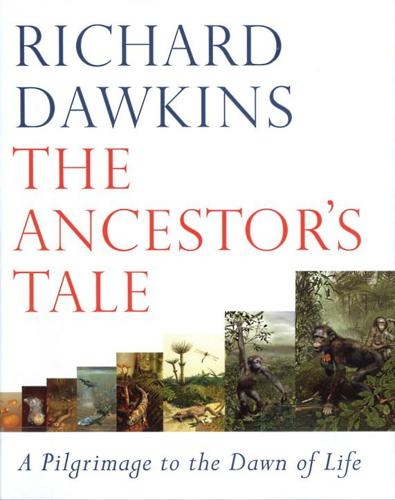
The Ancestor's Tale: A Pilgrimage to the Dawn of Evolution
by
Richard Dawkins
Published 1 Jan 2004
The 'Haight-Ashbury' image of free-loving bonobos has led to a piece of wishful thinking among nice people, who perhaps came of age in the 1960s -- or maybe they are of the 'medieval bestiary' school of thought, in which animals exist only to point moral lessons to us. The wishful thinking is that we are more closely related to bonobos than to common chimpanzees. The Margaret Mead in us feels closer to this gentle role-model than to the patriarchal, monkey-butchering chimpanzee. Unfortunately, however, like it or not, we are exactly equally close to both species. This is simply because P. troglodytes and P. paniscus share a common ancestor which lived more recently than the ancestor they share with us.
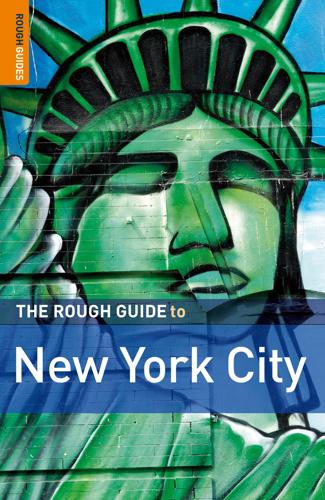
The Rough Guide to New York City
by
Martin Dunford
Published 2 Jan 2009
See Chapter 33, “Parades and festivals,” for info on the larger filmfests; here’s a list of some of the smaller, but still worthwhile, festivals and seasonal screenings: Asian American Film Festival Wwww.asiancinevision.org; July Bryant Park Summer Film Festival (free; outdoor screenings of old Hollywood favorites on Mon nights at sunset) Wwww.bryantpark.org; June–August GenArt Film Festival of American Independents Wwww.genart.org; April Human Rights Watch International Film Festival Wwww.hrw.org; June Margaret Mead Festival (anthropological films at the Museum of Natural History) Wwww.amnh.org; October or November New Fest: Lesbian & Gay Film Festival W www.newfestival.org; June New York Jewish Film Festival at Lincoln Center W www.filmlinc.com; January River Flicks at Chelsea Piers (free screenings of cult crowd-pleasers) Wwww .hudsonriverpark.org; July–August Socrates Sculpture Garden Film Festival (free screenings of classics every Wed starting at sunset in Long Island City, Queens) Wwww.socratessculpturepark.org; July–August Tribeca Film Festival Wwww.tribecafilmfestival.org; late April to early May THE PE RF OR M I NG A RT S A ND F I L M Angelika Film Center 18 W Houston St, at Mercer St T212/995-2000, W www .angelikafilmcenter.
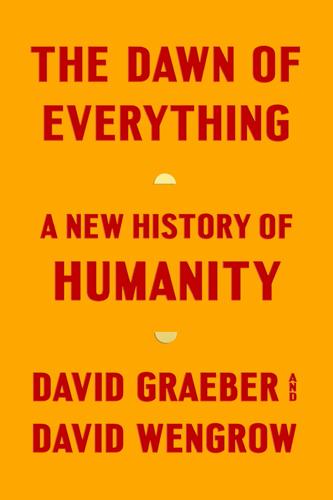
The Dawn of Everything: A New History of Humanity
by
David Graeber
and
David Wengrow
Published 18 Oct 2021
That dialogue in turn is drawn from the empirical findings of social scientists, including archaeologists and anthropologists like ourselves. Yet in fact the quality of their empirical generalizations is hardly better; in some ways it’s probably worse. At some point, you have to take the toys back from the children. 13. Pinker 2012; 2018. 14. Pinker 2012: 42. 15. Tilley 2015. 16. Formicola 2007. 17. Margaret Mead did this once, when she suggested that the first sign of ‘civilization’ in human history was not tool use but a 15,000-year-old skeleton that showed signs of having healed from a broken femur. It takes six weeks, she noted, to recover from such an injury; most animals with broken femurs simply die because their companions abandon them; one of the things that makes humans so unusual is precisely that we take care of one another in such situations. 18.
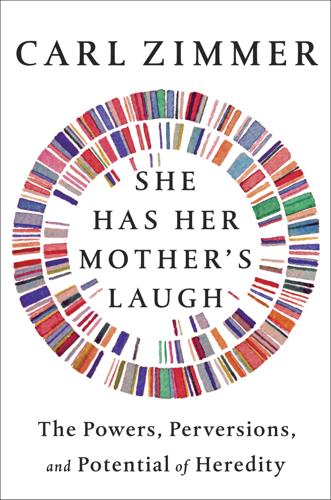
She Has Her Mother's Laugh
by
Carl Zimmer
Published 29 May 2018
When children figured out how to open a new chute, they sometimes demonstrated to the others how to do it. Dean never witnessed a single lesson taught by the chimpanzees or the capuchins. Anthropologists were slow to recognize how important teaching has been to our species. In the mid-1900s, Margaret Mead and other experts claimed that teaching was merely a peculiar feature of Western societies, a cultural penchant for herding children into schools. In other cultures, children were supposedly left to their own devices, to learn for themselves. In recent years, though, many anthropologists have changed their minds, in part because they’ve reconsidered what it really means to teach.
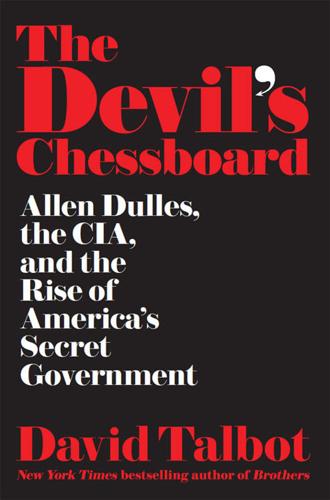
The Devil's Chessboard: Allen Dulles, the CIA, and the Rise of America's Secret Government
by
David Talbot
Published 5 Sep 2016
The hotel’s signature restaurant was shaped like a giant seashell, with wavy gaps to let in the sunshine and ocean breeze. Dulles spent the weekend swimming and playing golf with the young executives. On Monday morning, when Dulles strode onstage to deliver his remarks, he looked like a man without a worry in the world. The CIA director’s speech—which followed a panel discussion featuring Margaret Mead and Dr. Benjamin Spock on the subject of “Are We Letting Our Children Down?”—was a plea for globe-trotting American businessmen, like those gathered in the conference hall, to join the clandestine war against Communism. Afterward, there was more time to relax by the pool. The spymaster had brought Clover with him on the trip, completing the carefree picture.

The Rough Guide to New York City
by
Rough Guides
Published 21 May 2018
Free screenings of classics every Wed starting at 7pm in Long Island City, Queens. Coney Island Film Festival coneyislandfilmfestival.com; Sept. Manhattan Short Film Festival manhattanshort.com; Sept–Oct. NewFest: The New York LGBT Film Festival newfest.org; Oct. New York Independent Film Festival nycindieff.com; Oct. Margaret Mead Film Festival amnh.org; Oct or Nov. Anthropological films at the Museum of Natural History. New York City Short Film Festival nycshorts.com; Nov. Big Apple Film Festival bigapplefilmfestival.com; Nov. Showcases movies from the New York City independent film community. NYC Horror Film Festival nychorrorfest.com; Nov.
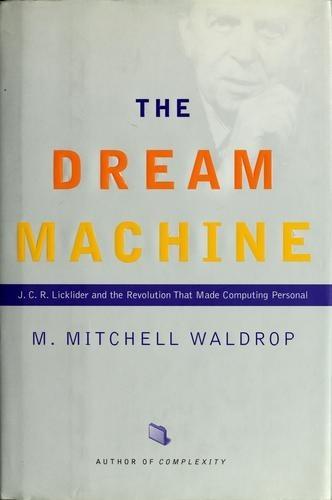
The Dream Machine: J.C.R. Licklider and the Revolution That Made Computing Personal
by
M. Mitchell Waldrop
Published 14 Apr 2001
Organized by Warren McCulloch, with funding from the Macy Foundation, and inaugurated with a gathering in New York City on March 8 and 9, 1946, the meetings were intended to pick up where the 1945 conference at Princeton had left off The idea was for Wiener, von Neumann, McCulloch, Pitts, and the rest of the usual suspects to get together every six months or so to discuss their new science in the company of like- minded neurophysiologists such as Rosenblueth, plus a contingent of equally like-minded social scientists led by Gregory Bateson and Margaret Mead, the famed husband-and-wife team of anthropologists. Wiener, not surprisingly, had liked the idea very much-especially since he got to be the star. He was the "bril- liant originator of ideas and enfant terrible," according to his biographer Steve Heims. "Sometimes he got up from his chair and in his ducklike fashion walked around and around the circle of tables, holding forth exuberantly, cigar in hand, apparently unstoppable."4 And now, as he discovered on his 1947 trip, his new science seemed to be taking root in England as well.

Behave: The Biology of Humans at Our Best and Worst
by
Robert M. Sapolsky
Published 1 May 2017
There’s a lot of baggage and misconceptions about PMS (along with PMDD—premenstrual dysphoric disorder, where symptoms are severe enough to impair normal functioning; it effects 2 to 5 percent of women).61 The topic is mired in two controversies—what causes PMS/PMDD, and how is it relevant to aggression? The first is a doozy. Is PMS/PMDD a biological disease or a social construct? In the extreme “It’s just a social construct” school, PMS is entirely culture specific, meaning it occurs only in certain societies. Margaret Mead started this by asserting in 1928 in Coming of Age in Samoa that Samoan women don’t have mood or behavioral changes when menstruating. Since the Samoans were enshrined by Mead as the coolest, most peaceful and sexually free primates east of bonobos, this started trendy anthropological claims that women in other hip, minimal-clothing cultures had no PMS either.* And naturally, cultures with rampant PMS (e.g., American primates) were anti-Samoans, where symptoms arose from mistreatment and sexual repression of women.

The Price of Silence: The Duke Lacrosse Scandal
by
William D. Cohan
Published 8 Apr 2014
Boyer quoted the blogger DukeObsrvr. “The Lacrosstitute is a notch higher on the social scale than the ‘frat slut.’ And dammit, that’s something worth fighting over.” Boyer also spoke with Elizabeth Chin, a visiting professor in anthropology from Occidental College, who was teaching a course on Margaret Mead when the lacrosse scandal broke. In the class were members of the Core Four, the sorority elite written about in Janet Reitman’s Rolling Stone article. “The sorority women in particular were trying to convince me that the sexually free and exploratory world that Mead describes is pretty much the same thing as the hook-up culture,” Chin recalled.
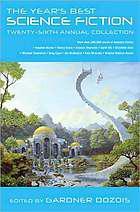
The Year's Best Science Fiction: Twenty-Sixth Annual Collection
by
Gardner Dozois
Published 23 Jun 2009
There was no way to judge the progress of the battle from Engineering. Wasabi put a stopwatch up on one of the secondary screens, as usual, and everybody glanced at it periodically. Fifteen minutes ongoing meant the boarding parties hadn’t hit any nasty surprises. Black Alice had met a man once who’d been on the Margaret Mead when she grappled a freighter that turned out to be carrying a division-worth of Marines out to the Jovian moons. Thirty minutes on-going was normal. Forty-five minutes. Upward of an hour on-going, and people started double-checking their weapons. The longest battle Black Alice had ever personally been part of was six hours, forty-three minutes, and fifty-two seconds.